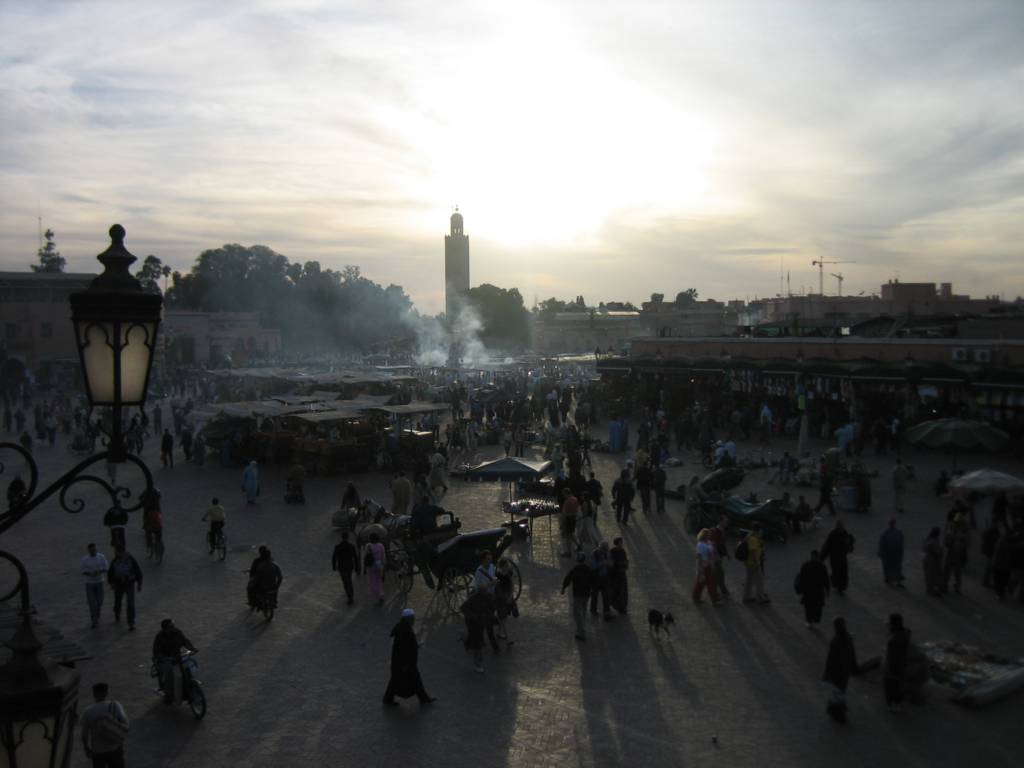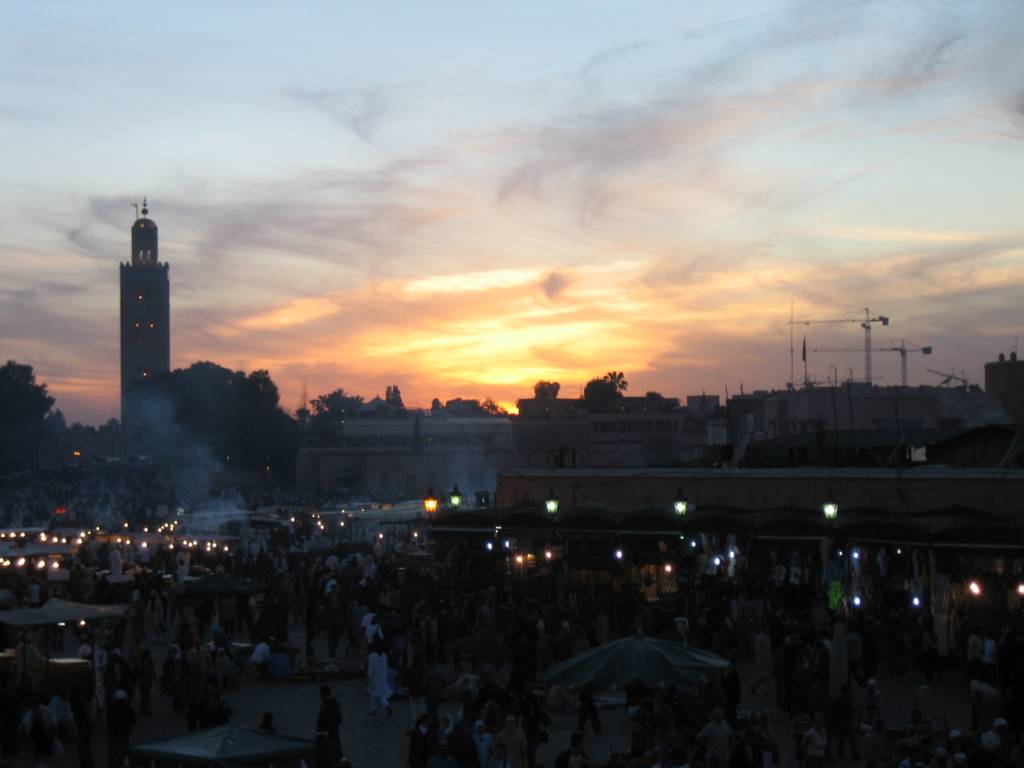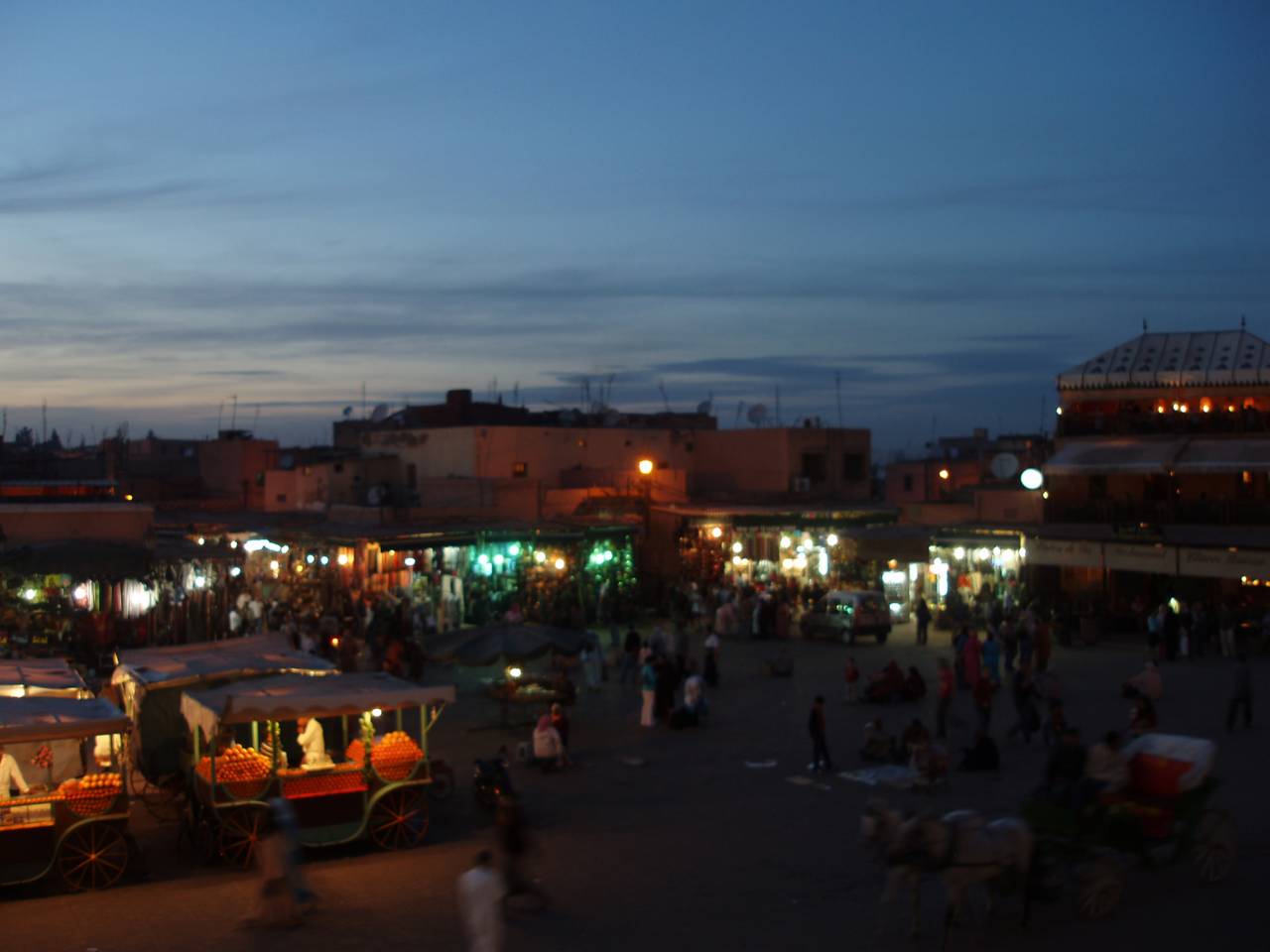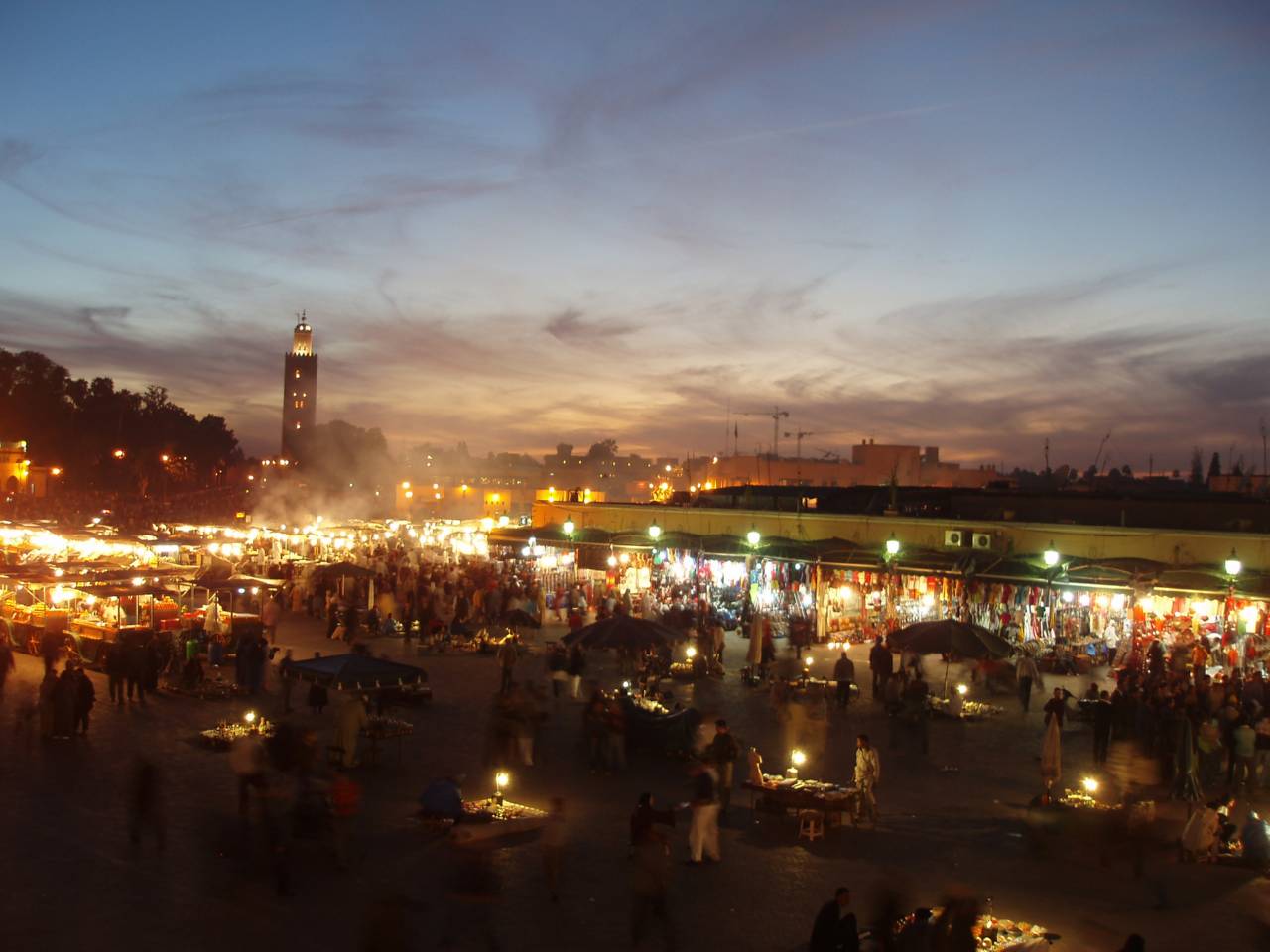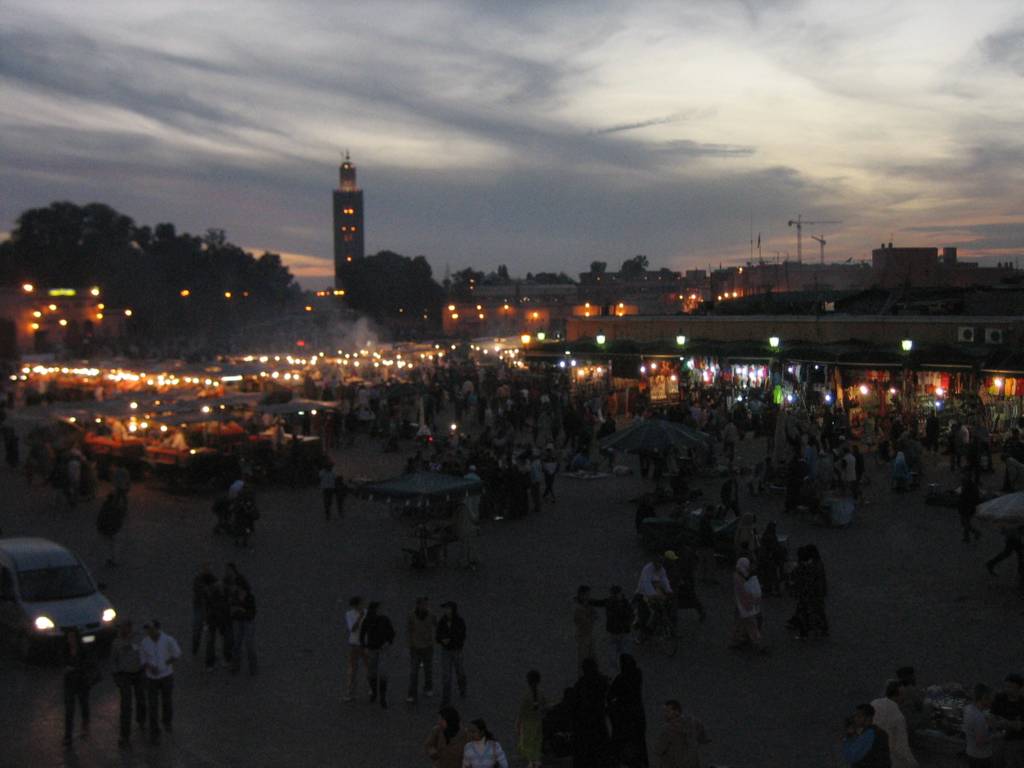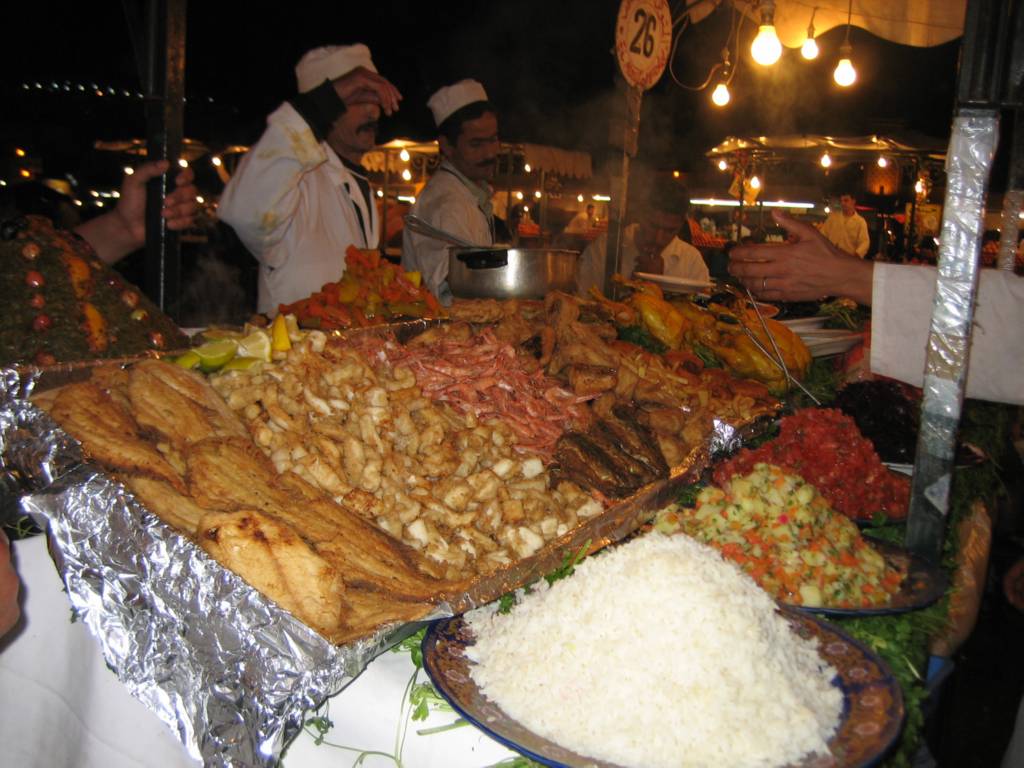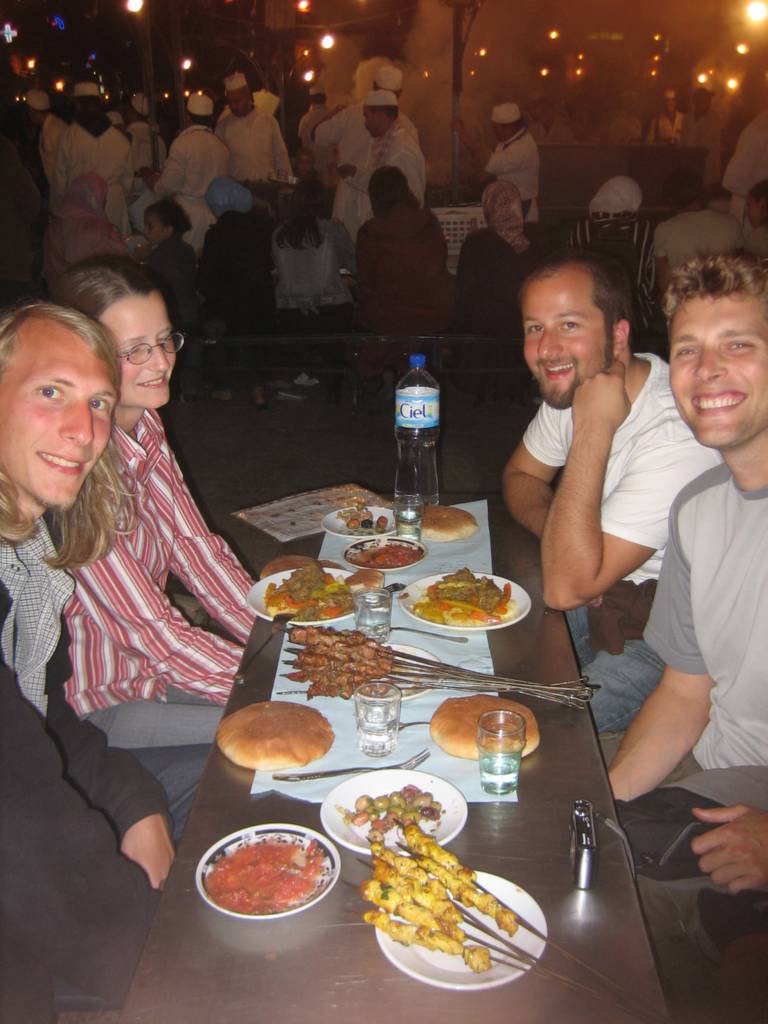Diary Entry
We find a cabin with only one other passenger. However, he leaves the compartment after two hours. Whether he really reached his destination or whether he felt disturbed by the fact that we took off our shoes has not yet been clarified to this day.
So we spend the night more or less comfortably on the benches after we started from Fez. As the sun rises, we see through the window the landscape that one imagines when it comes to Morocco. Dry ground stretches to the horizon and there is little green to be seen. I see sheep or goats in pens made of cacti. The animals are fenced in by cacti!
The landscape is barren and consists of rocks, slopes and rugged hills. But then I can see something on the horizon that is not white clouds but high, snow-capped mountains: the High Atlas! And soon we arrive in Marrakech.
It is now 11 o’clock in the morning and after the recommendation of a friend who had visited Morocco three months earlier, we want to look for a hotel right on the famous Djemma-el-Fna square of jesters. We decide against a taxi and walk our way into the heart of the city, stopping for a good breakfast in between. While we enjoy this (admittedly at tourist prices) on the terrace of a café, we watch as a young guy who looks like he slept in the ruins staggers out of a neighboring ruined house.
Noticing us staring at him, he approaches us and asks for a cigarette, slurring in English. I can’t offer him any and ask if he’s been drinking, which he says he has. I ask him if that’s not forbidden by the Koran, to which he giggles and replies that it’s not that strict. When he notices how unpleasant he is to us, he stammers that he doesn’t want to bother us at all, then an older man arrives, takes him under his wing and pulls him along; in between he apologizes a thousand times.
When we’re done with our breakfast, the guy comes staggering back and asks if we can be friends. He now has a lit cigarette in his hand. I definitely ask him to go. The waiter who’s just checking us out also talks to the guy to get him to leave. When we have our backpacks on our backs and a little distance from the bar, we see the guy chattering to the waiter. Then he makes a merciless mistake by spilling ash from his cigarette on the waiter’s white shirt. That’s it, the waiter’s patience snaps and after a few slaps in the face and a kick over the surrounding potted plants, the guy is out of the cafe.
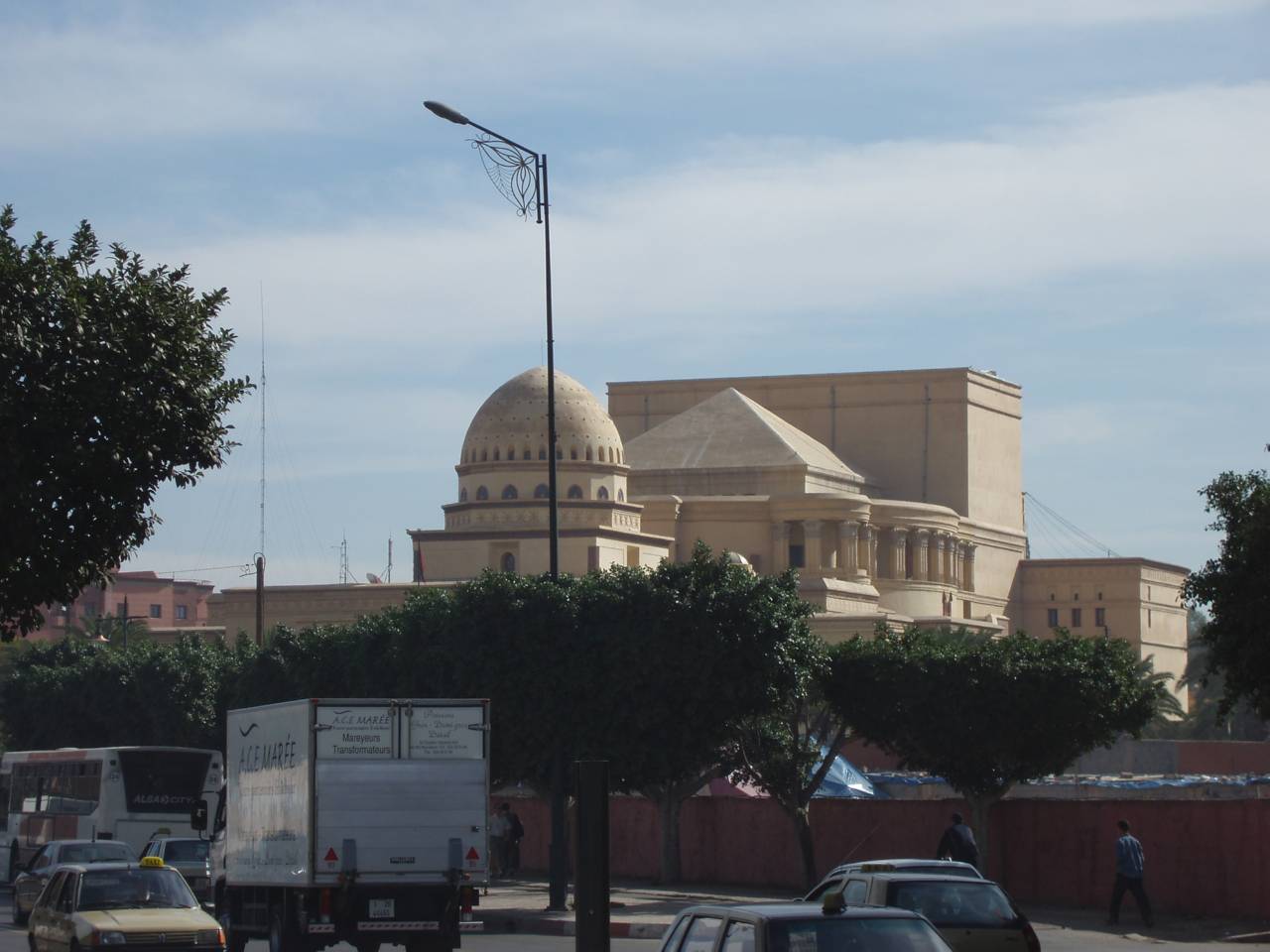


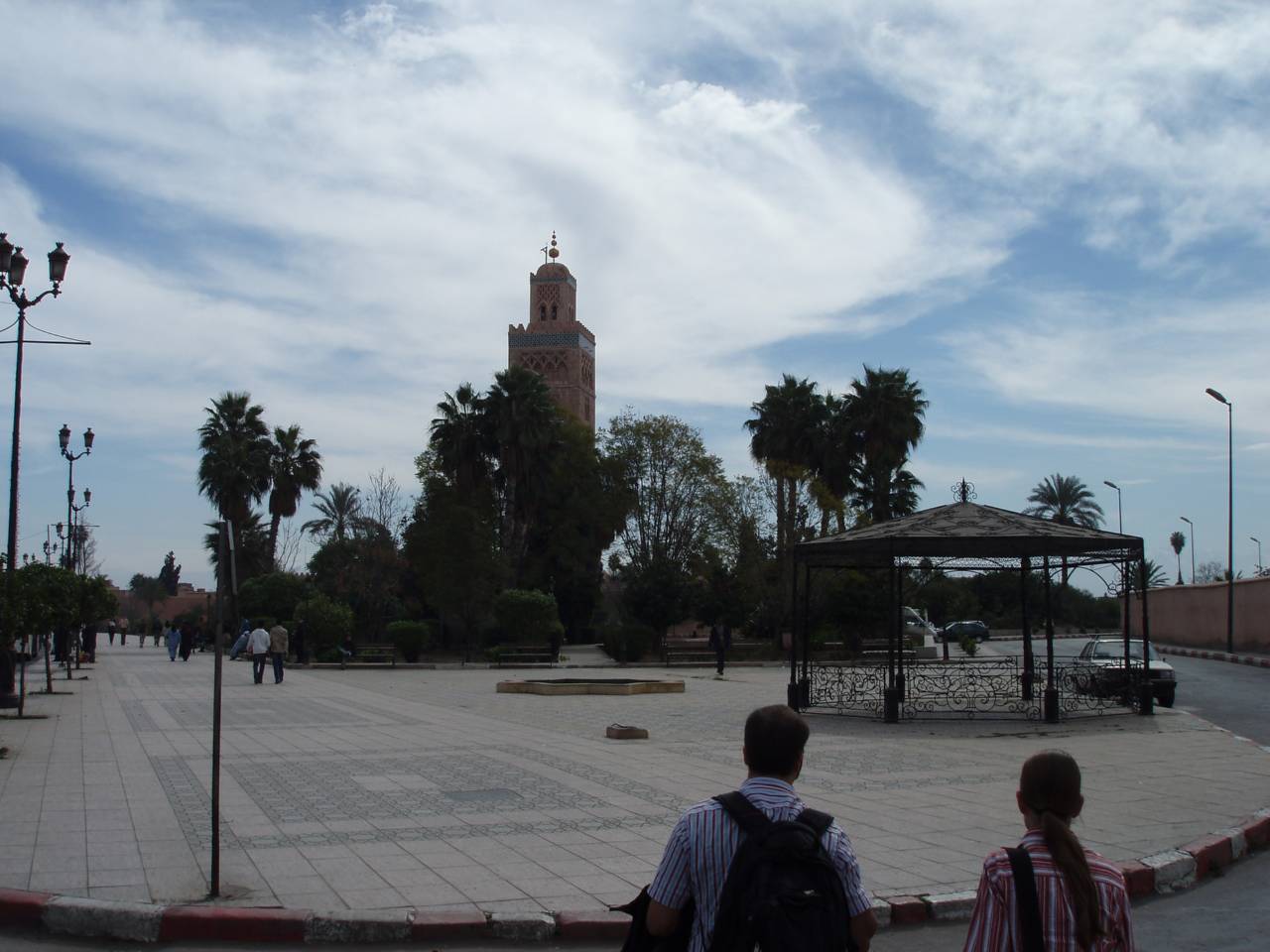
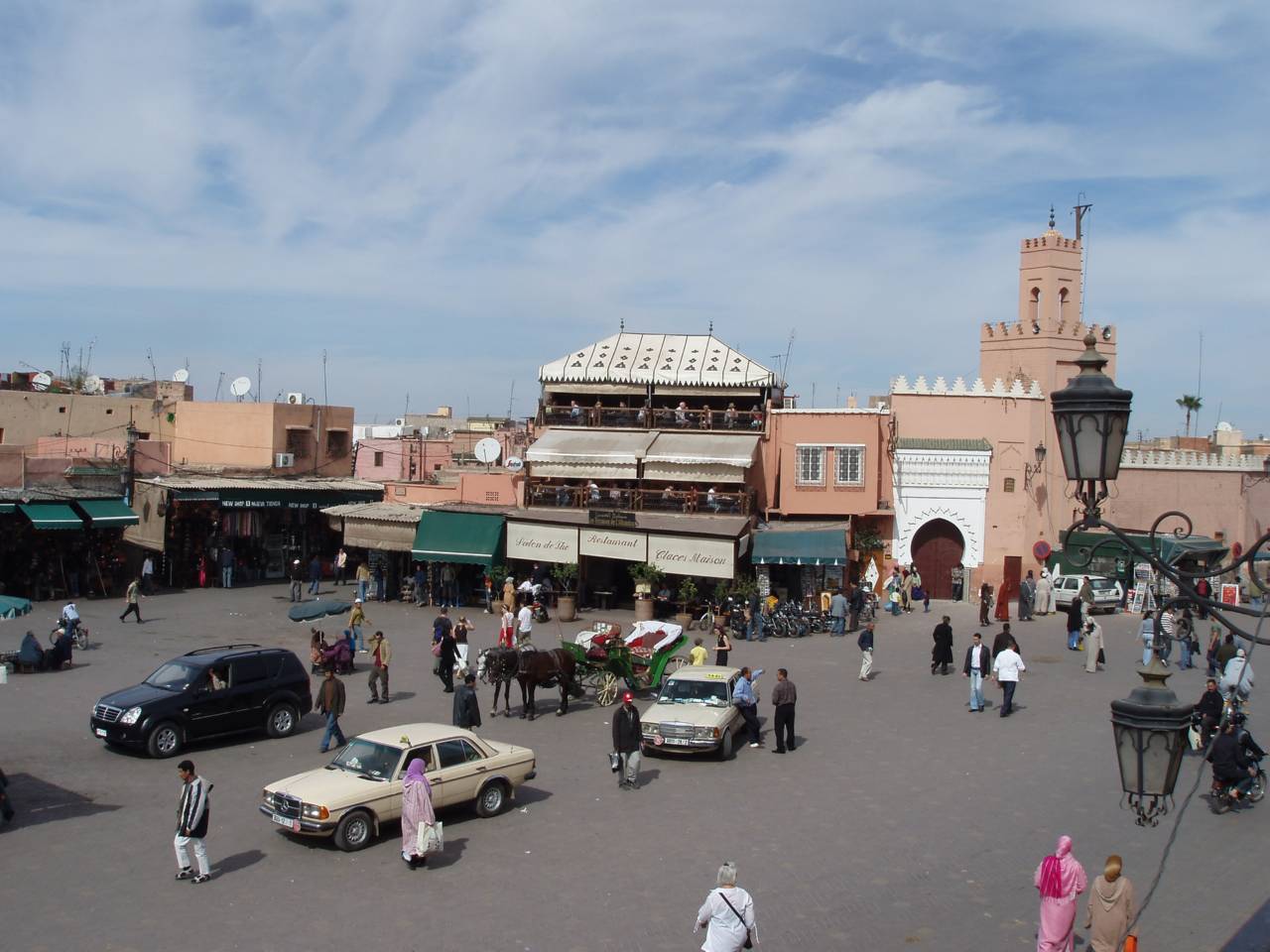

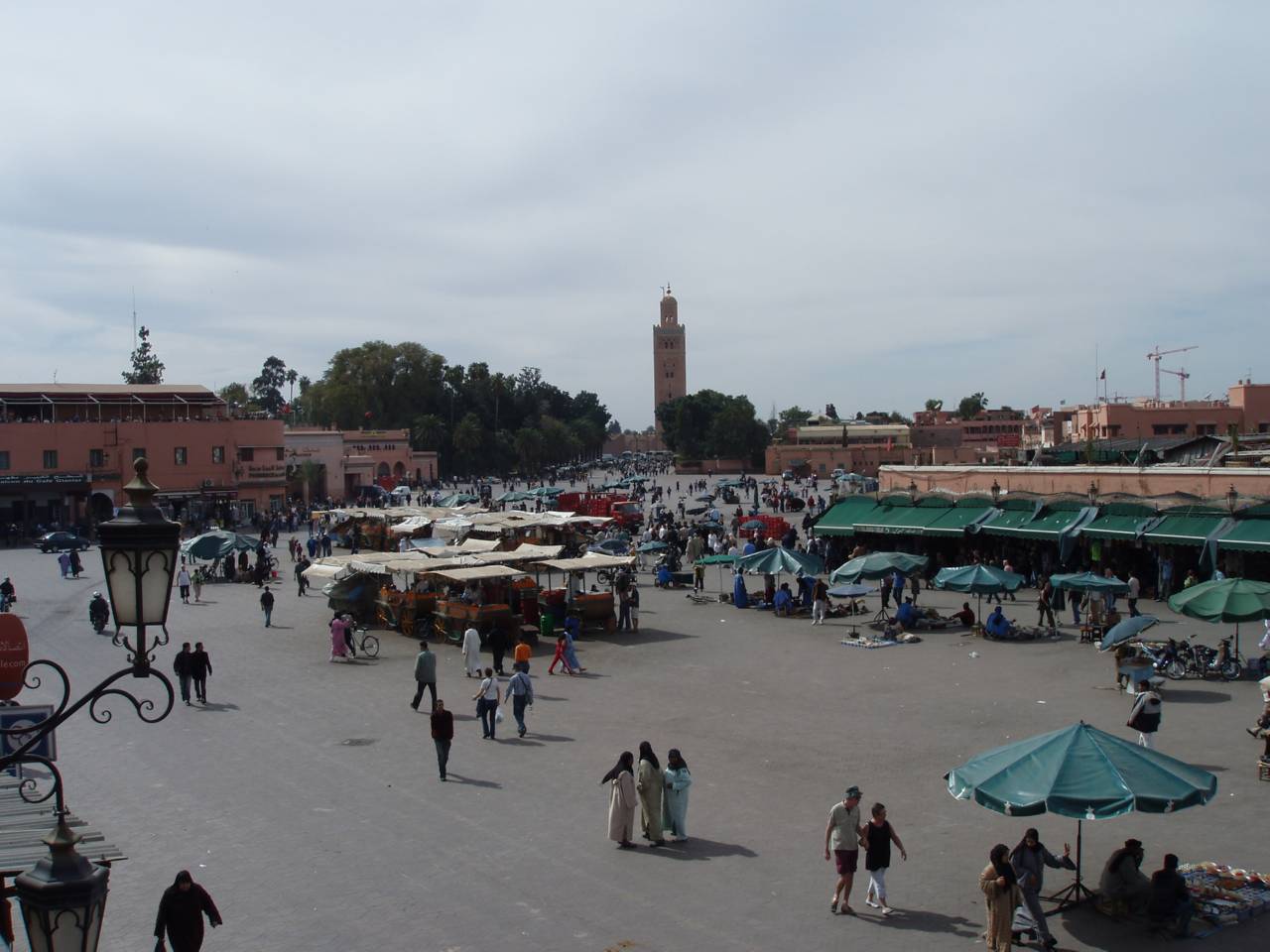
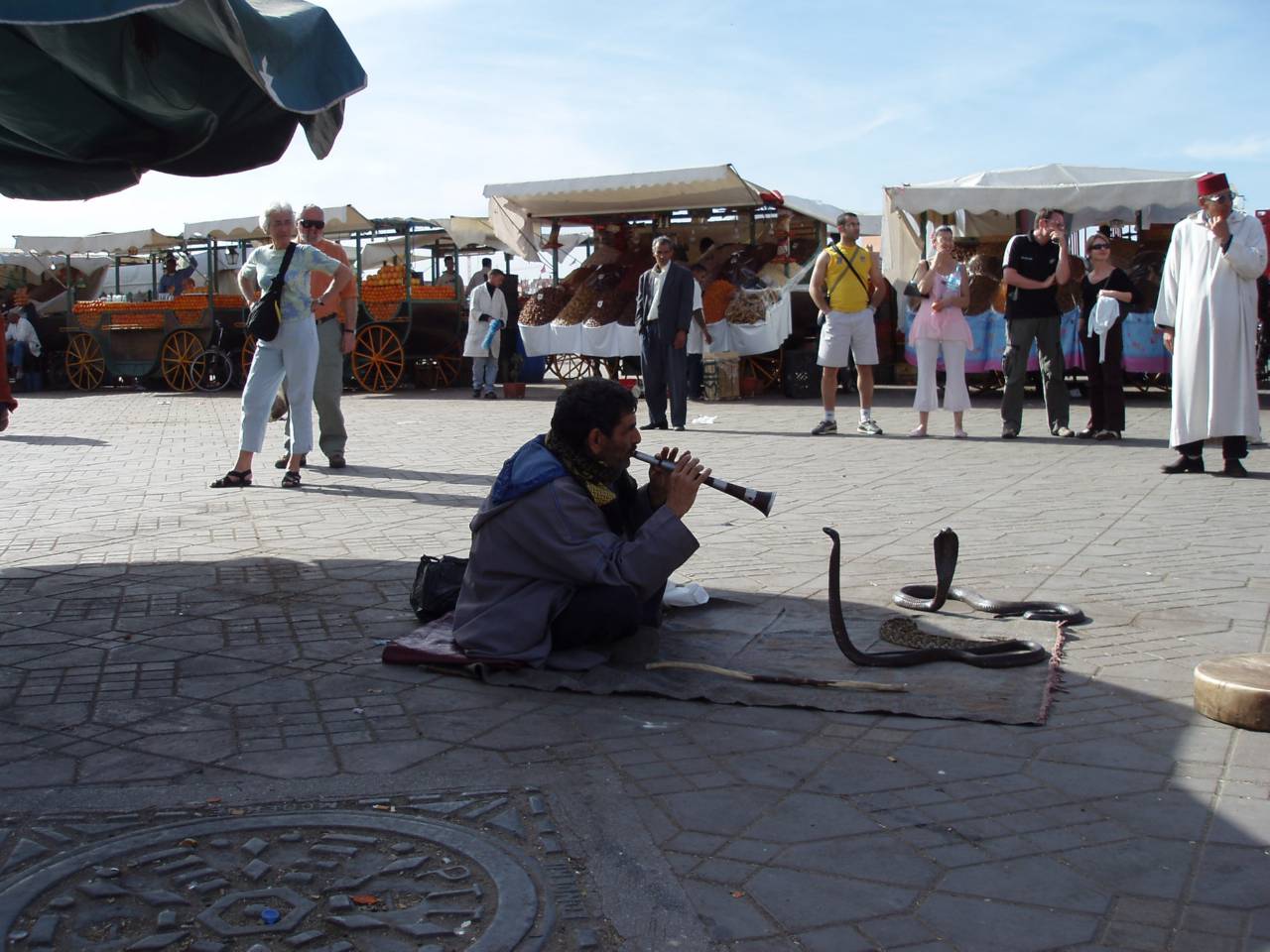
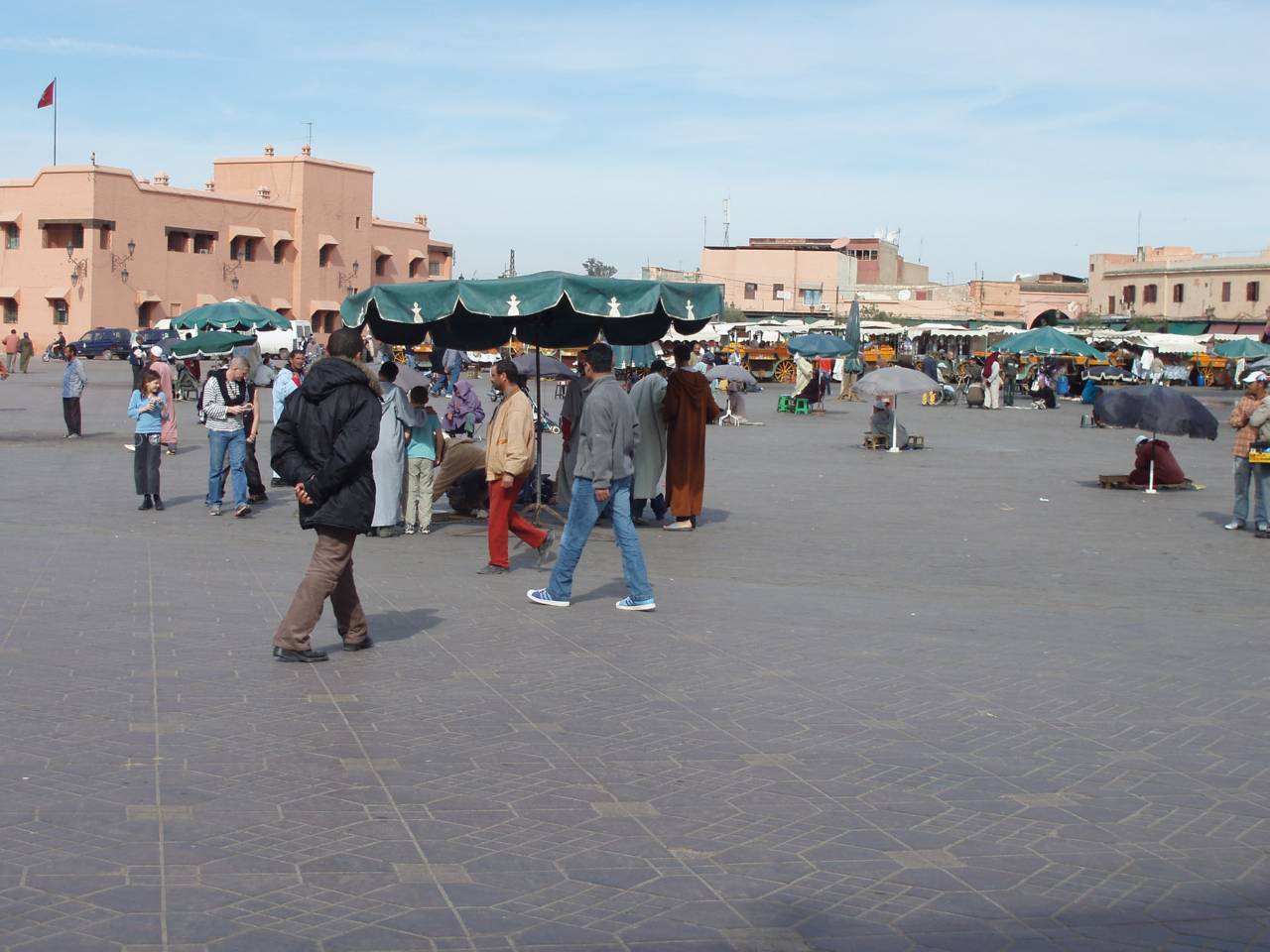
We follow my guide’s map until we finally reach the big square. It’s hot and the square is filled with orange juice vendors’ carts yelling at you and commanding you to come over. The lack of courtesy quells our thirst for freshly squeezed orange juice and we look for a hotel. We don’t really like the first one we find, because it only has cold water. We find a better one and take a triple room; Unfortunately it is the only room without a balcony and we take it out of consideration for Olli, who would have to pay a good chunk more for a single room.
Unser erster Gedanke ist: Duschen! Doch nein, da wir Susanne natürlich den Vortritt lassen stellt sie fest, dass zwar der Hahn der Dusche, nicht aber der Duschkopf funktioniert.
After a complaint and some reorganization with the manager of the hotel, we get the double room with a balcony directly above the square and an extra mattress for Olli.
We find our accommodation
While one after the other washes, each of us has enough time to admire the view from the balcony over the square. As so often during the day, the hustle and bustle of the day is repeatedly interrupted by the prayers of the muezzins, whose singing is carried over the city through loudspeakers on the minaret towers. As soon as the last of us is done, let’s throw ourselves into the hustle and bustle of Marrakech.
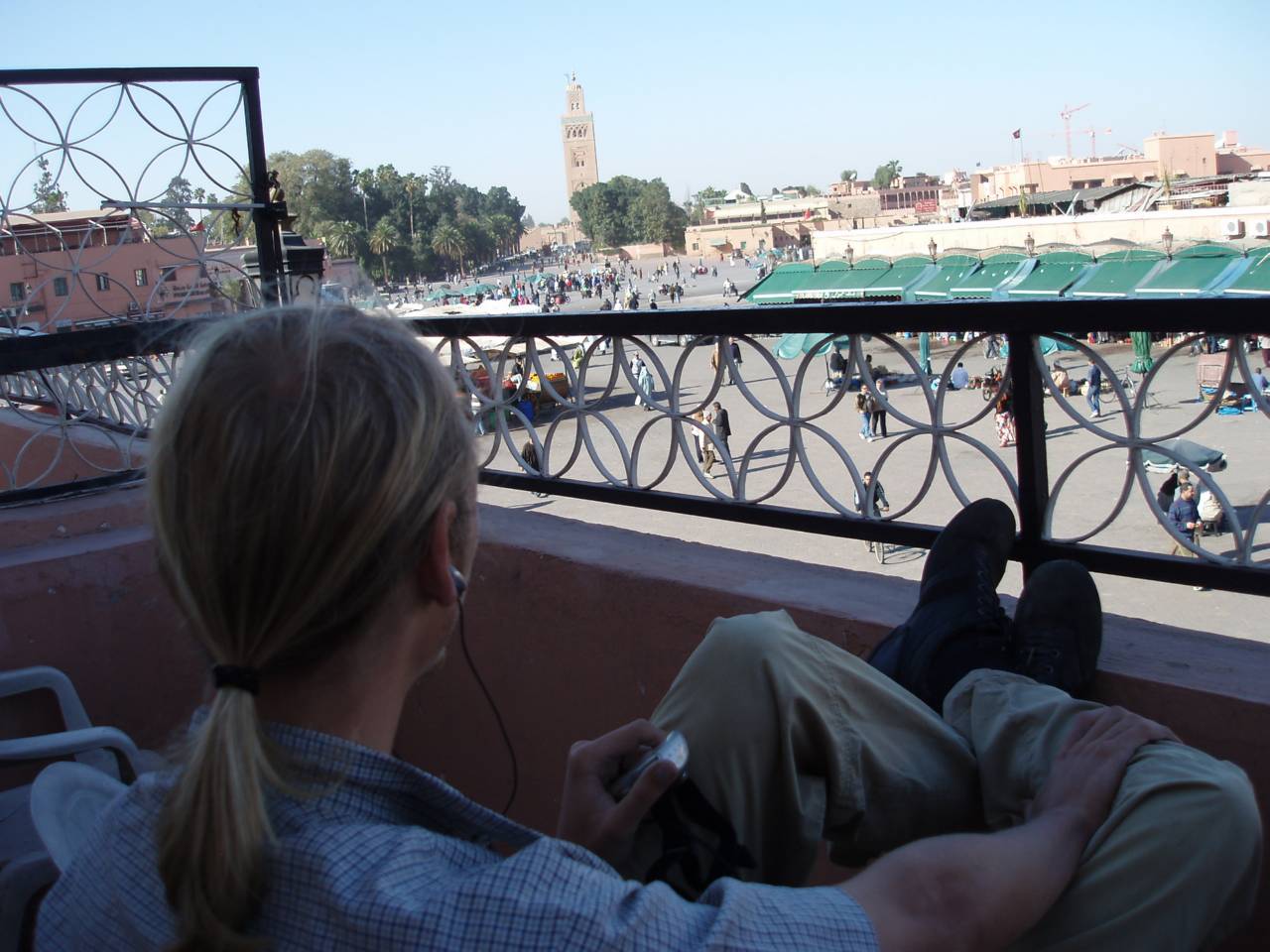
The cars of the aggressive orange juice vendors are lined up on the square. To celebrate the day we want to treat ourselves to a glass despite the roar and pay a reasonable 30 cents for it. An old lady comes up to me, shows me a euro and tells me that she would like to exchange the coin for dirhams. I rummage in my bag, fished out the current equivalent of 10 dirhams and give it to her. When I want to take the euro from her hand, she closes it quickly and disappears into the crowd with the euro and the dirham at a speed that might be record-breaking for her age.
The hustle and bustle on the Djemma-el-Fna
Towards the afternoon, food stalls are set up in the middle of the square, wagons with street food and inviting beer tent benches lure people in for lunch.
Scattered are jugglers and storytellers who gather people around them. There are even snake charmers on the floor playing in front of cobras.
Above all, the square fills up with tourists, for whom the Djemma-el-Fna is the absolute highlight of their trip to Morocco; people come with their imagination of the Orient and 1000 and 1 Nights, which are fulfilled in all facets by the Moroccans in this place. It doesn’t matter if the stupid package holidaymakers don’t have a clue about prices or bargaining and are willing to pay a huge sum for any nonsense.
Bus-wise, tour groups are carted in and Neckermann package tourists fall in packs across the square, chasing a colorful umbrella and armed with heavy photo guns. But only in the safe vicinity of the guide, after all this is Morocco, a backward Third World country where, if you are not careful, you could quickly fall victim to a crime committed by the primitive population. The average age of the tourists is about 50 years; There is also no sign of considerate clothing and so the tourists still provoke women and men with thigh-length trousers and tight undershirts, as well as deep necklines and tomato-red sunburns.
Unfortunately, Marrakech seems to have gotten used to it, but the tourists are bled in a different way, through the steep prices that the unworldly English, Japanese, French and German pensioners immediately pay. When they make a purchase, nobody notices how disparagingly the dealer looks down on them. The square is like a small zoo, where Morocco is presented as a small, harmless showpiece for vacationers and Arabia plays on a small international stage.
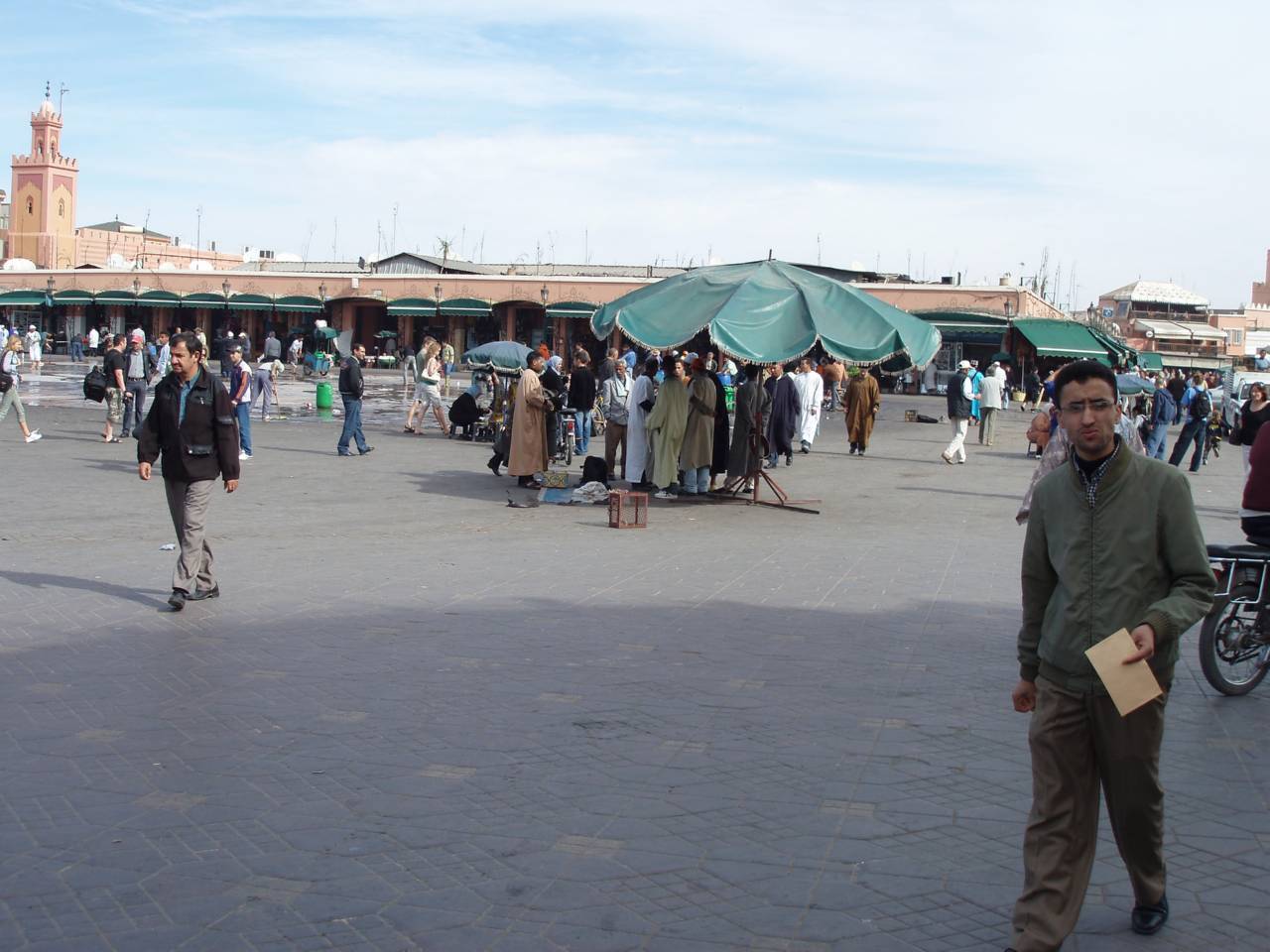
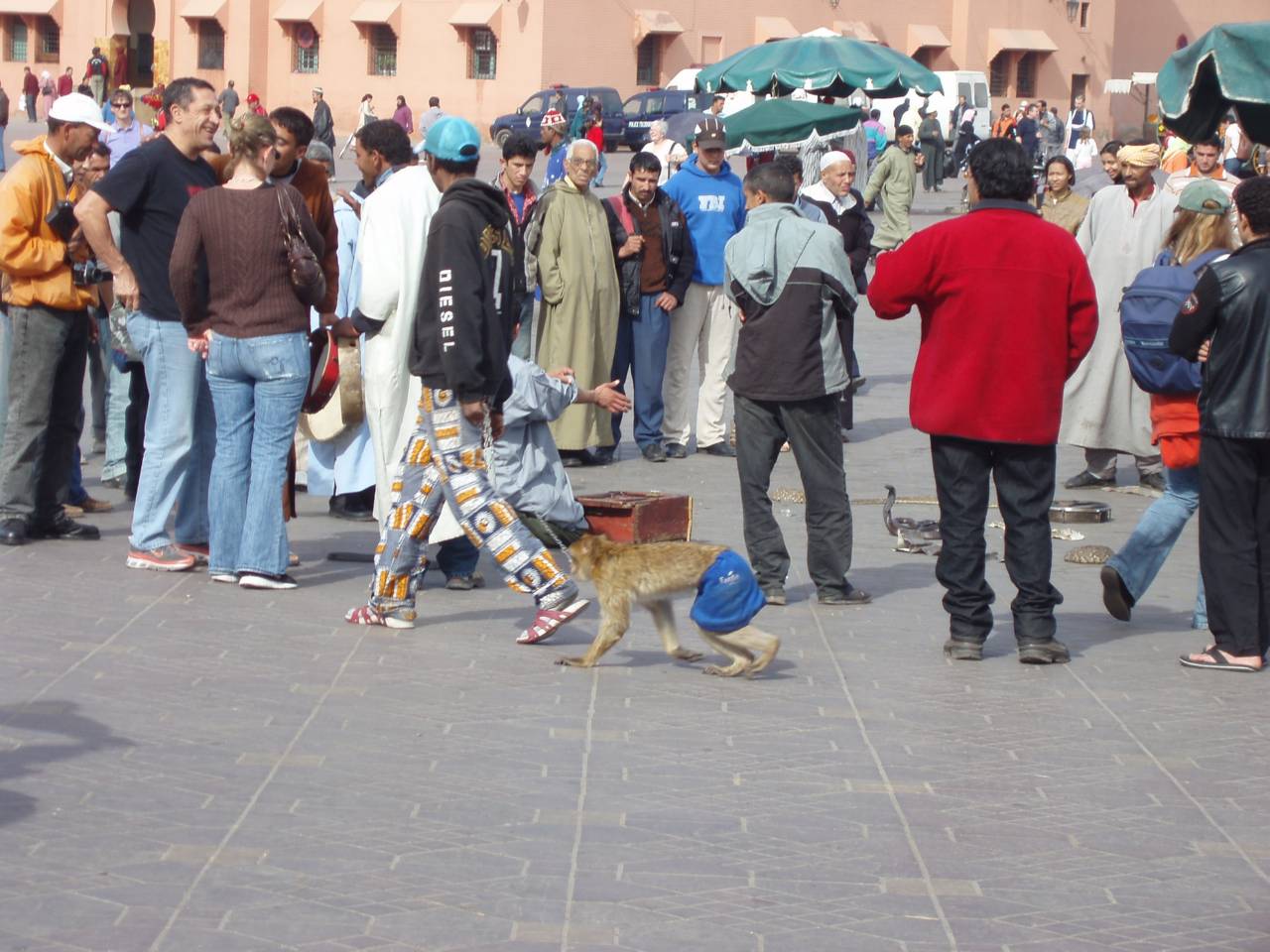
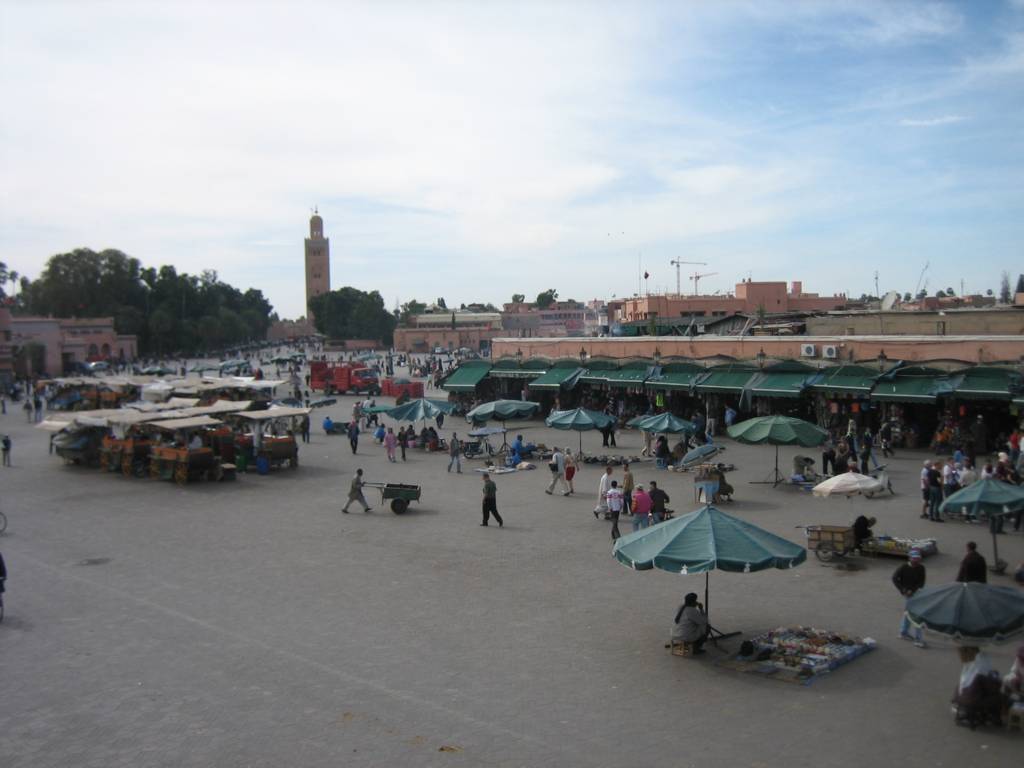
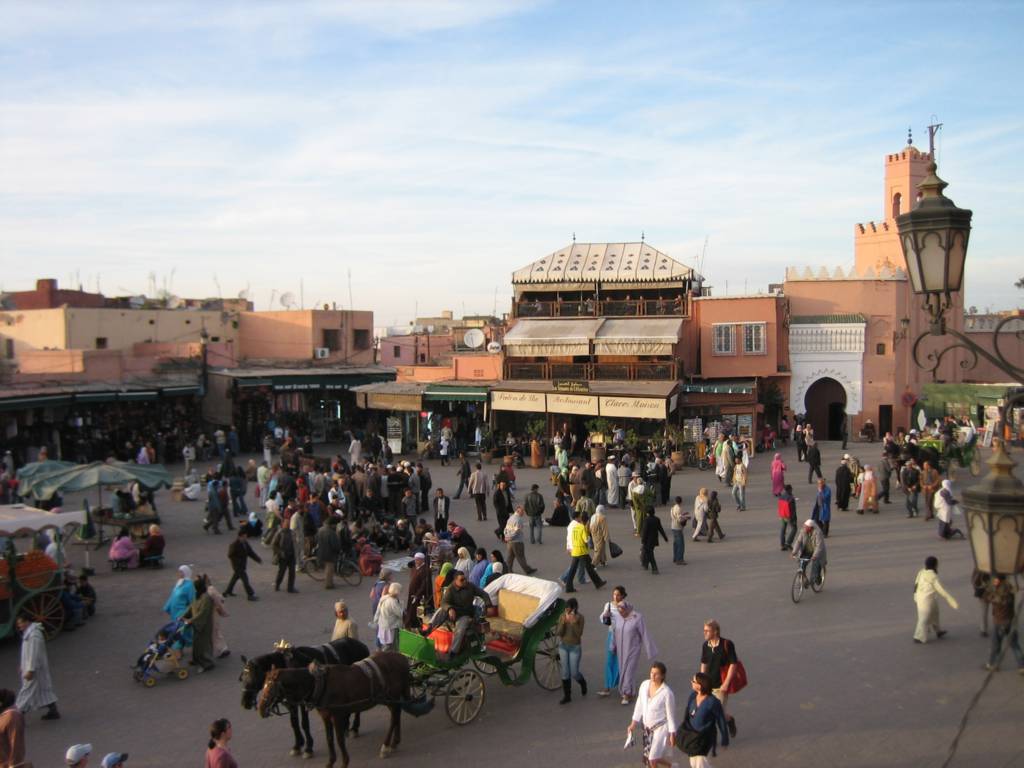
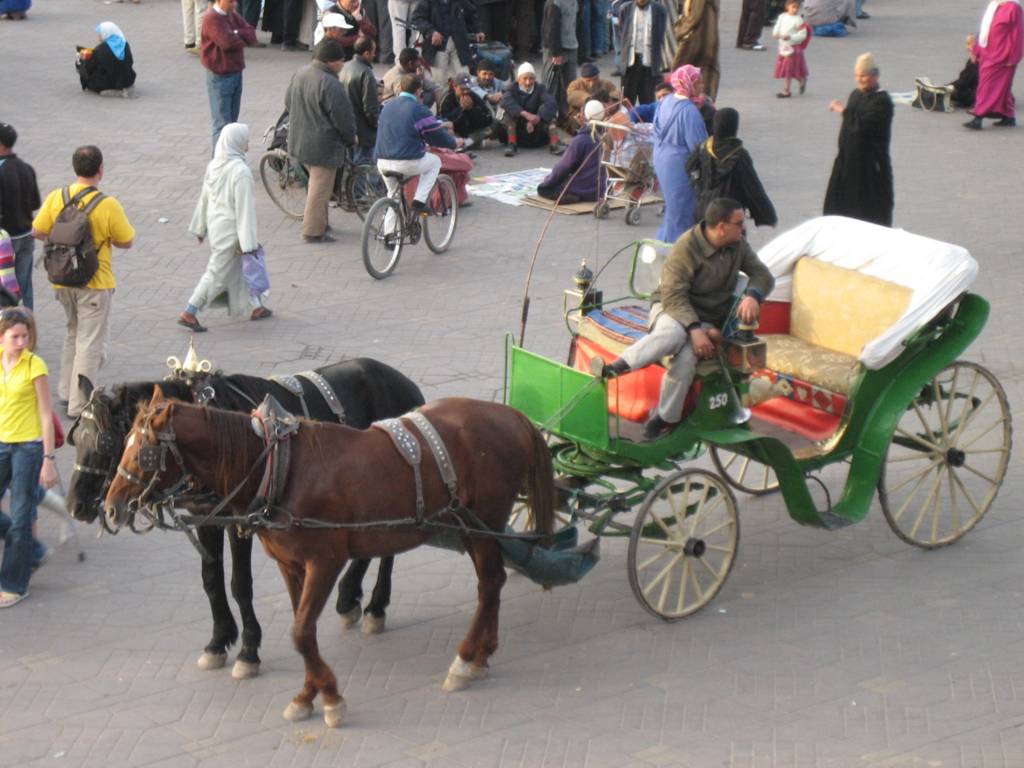
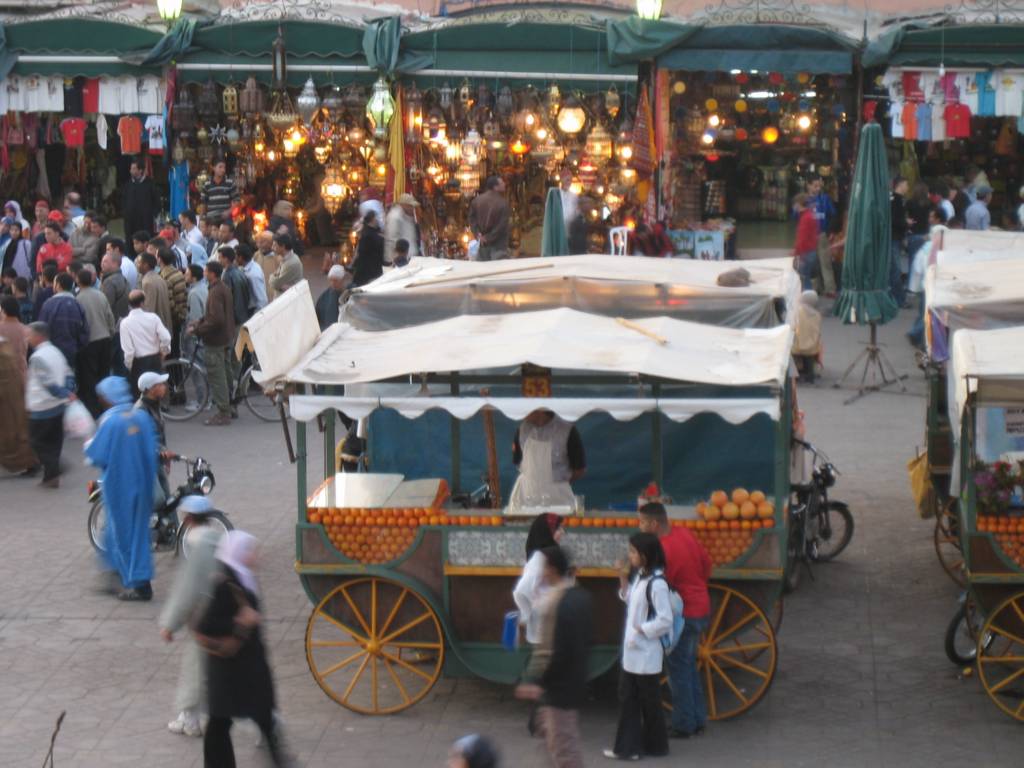
We turn down a side street and follow it, constantly dodging traffic of scooters, bikes and pack mules, and enter the market streets – the soukhs.
The soukhs
Olli falls victim to a zealous trader again and is dragged into a shop to buy shoes. The shoes aren’t even pretty, but the retailer actually charges 900 dirhams for a pair. Olli just wants to get out as soon as possible and tries to make it clear that he is not interested in buying shoes. The dealer disagrees and pulls out a pad to let Olli write down what he would be willing to pay. Olli still doesn’t need new shoes, but when the dealer doesn’t give up, he provocatively writes 60 dirhams on the block – even at the risk of being thrown out immediately, or just for that reason. As expected, the dealer is horrified, puts his hands to his head, then crosses out all the numbers and writes down new ones.
But Olli persists and the dealer actually keeps going down the price until they finally arrive at 70 dirhams, which Olli still doesn’t want to pay.
After a short back and forth, the dealer thanks our Finn heartily, even if the deal (just because of 10 dirhams!) doesn’t go through.
We pass countless shops, most of them carpet shops, spice shops and craft shops. However, everything here is clearly more touristy than in Fés or Meknés with partly fixed prices.
I also keep my eyes open for djabalas, because I obviously liked the American one and I can imagine being able to use one of these for the numerous medieval markets on the Rhine. What I see here about djabalas and cloths I don’t like as much as the things from Fez.
Of course we drink mint tea again and I take a look at an internet café. In the evening we go out to eat and look at the square in its fiery bright colors from our balcony in the dark of night. However, we are too exhausted for another nightly walk and sleep at 9 p.m.
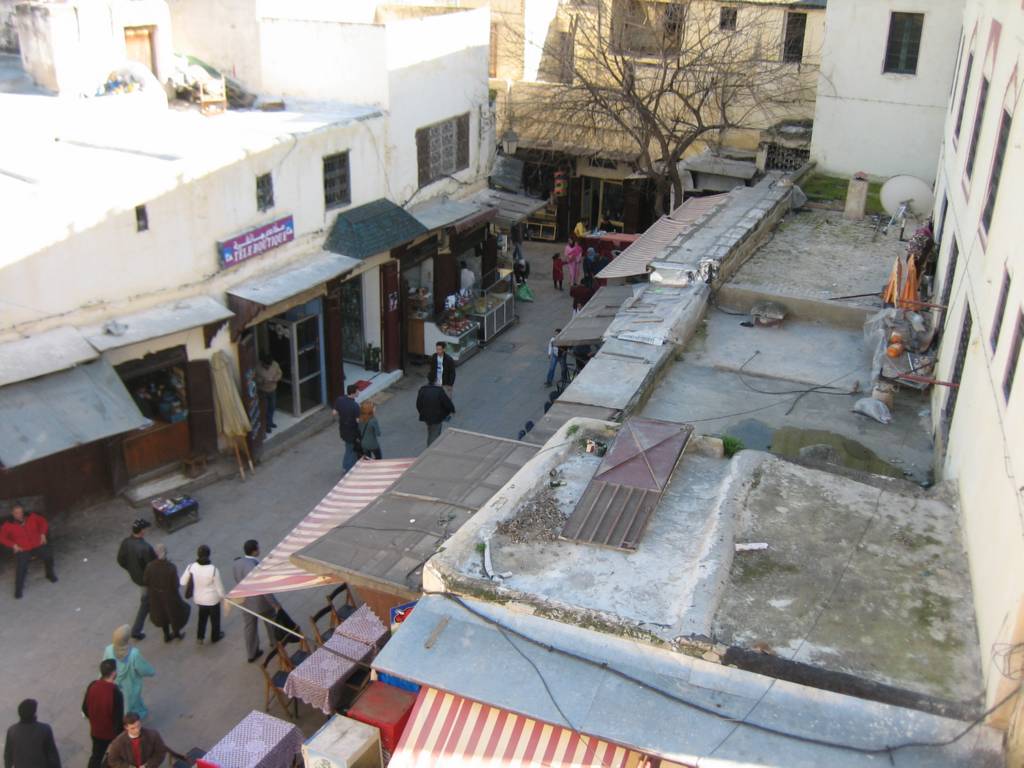
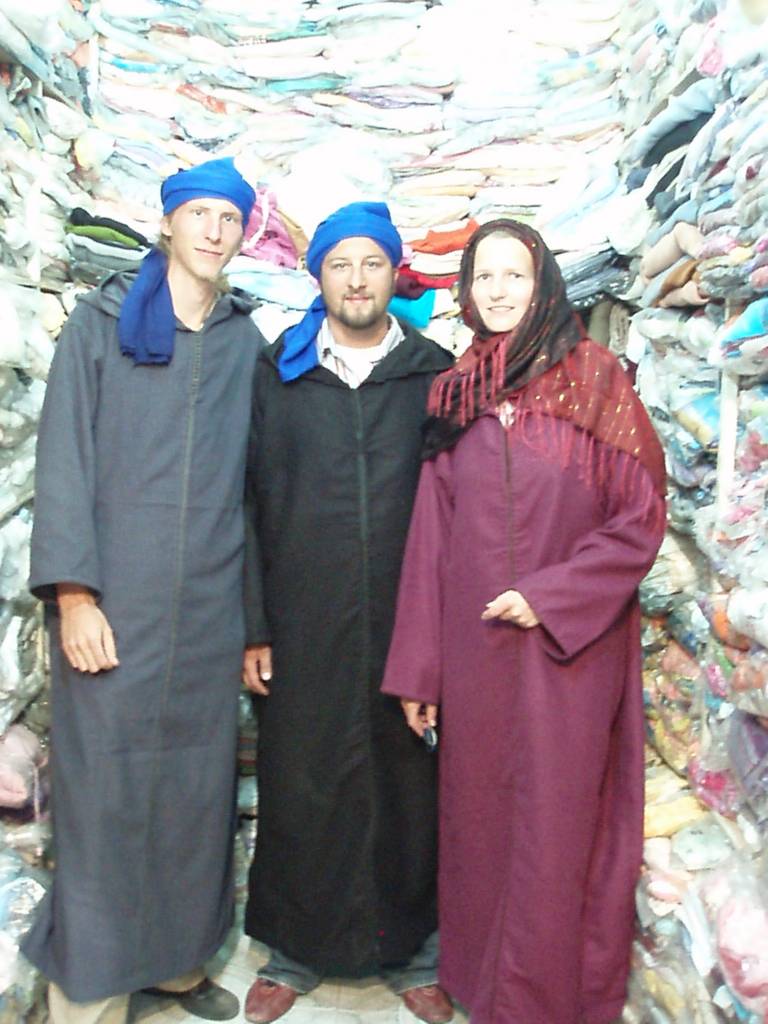
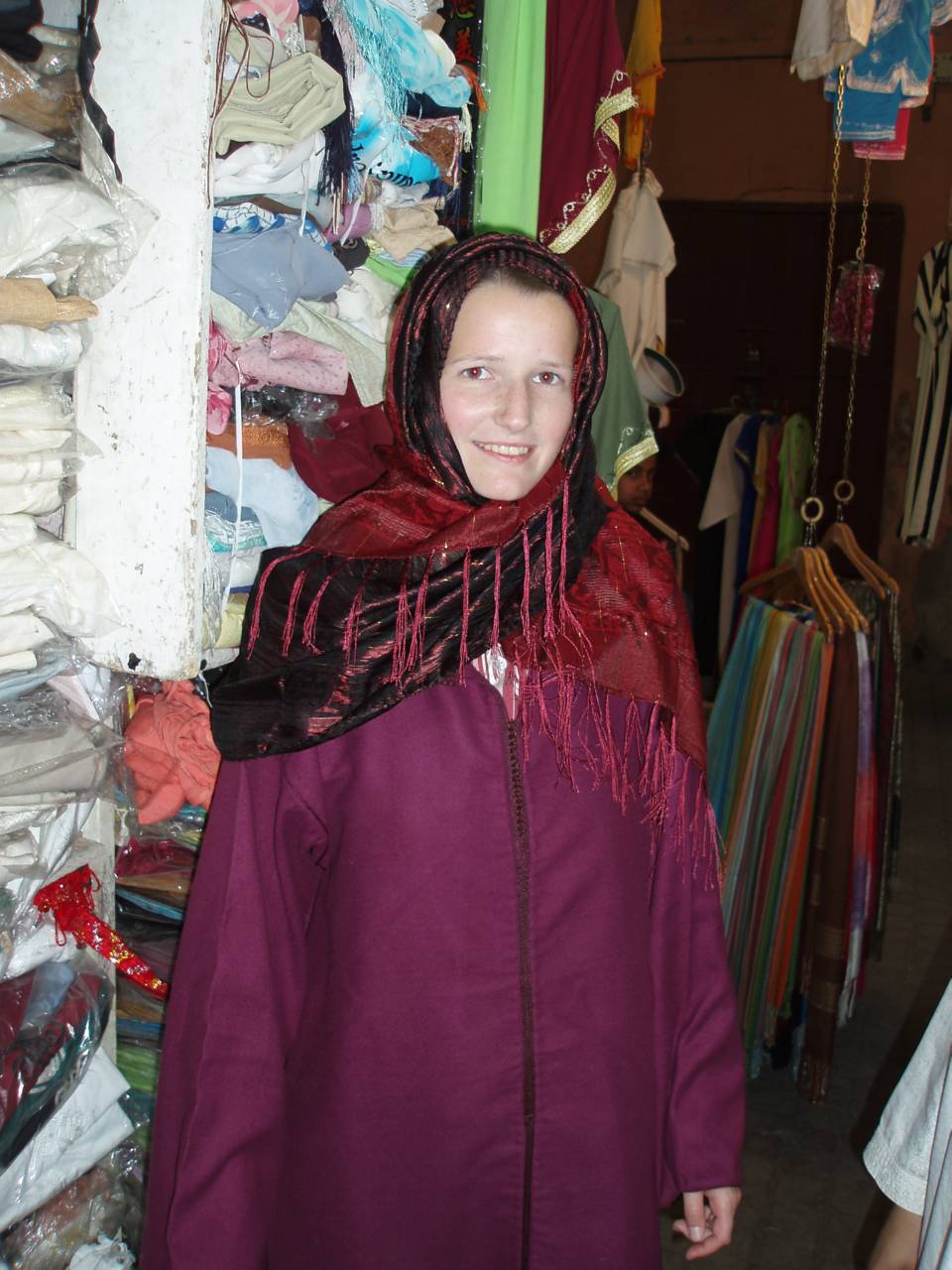
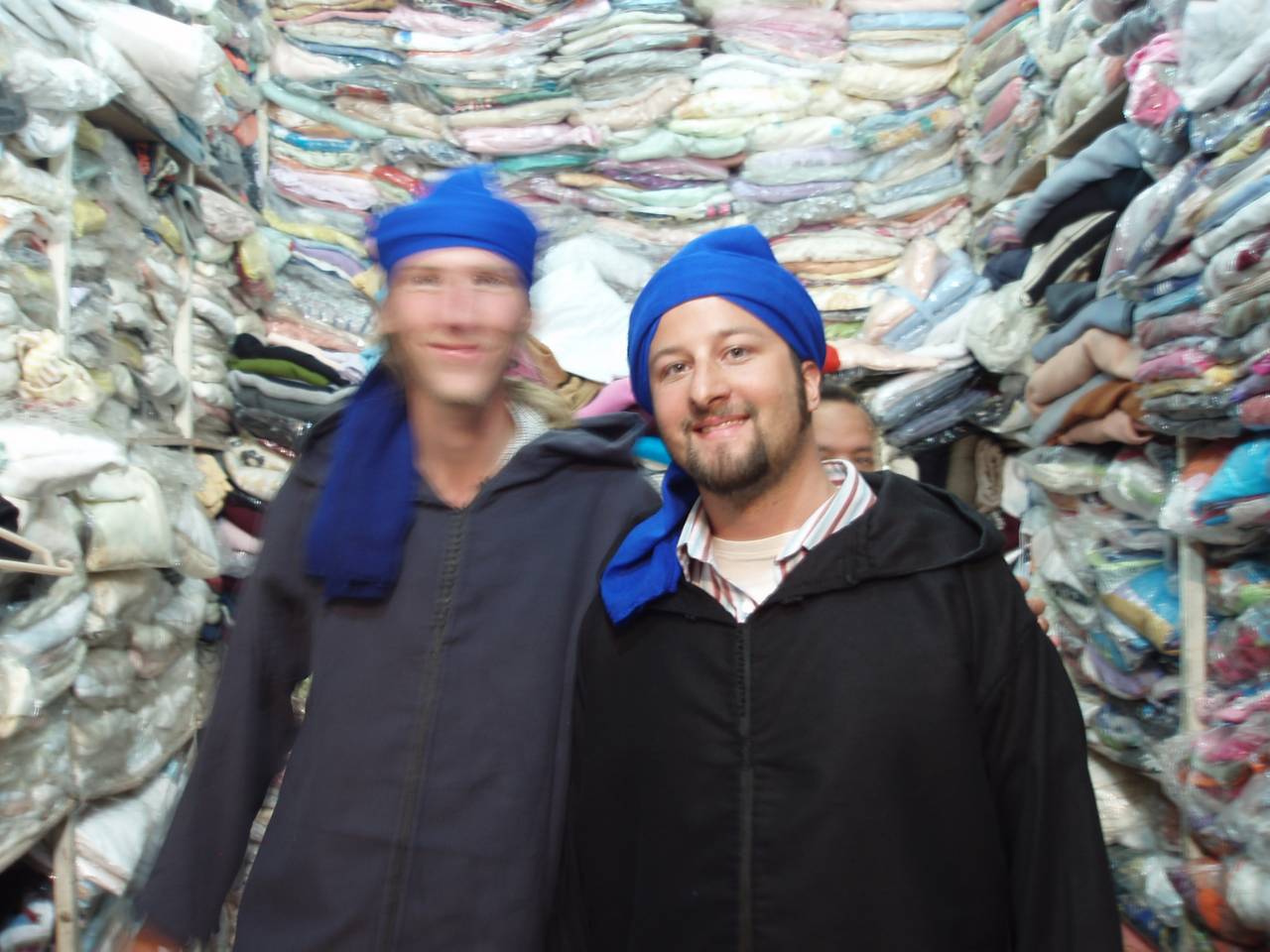

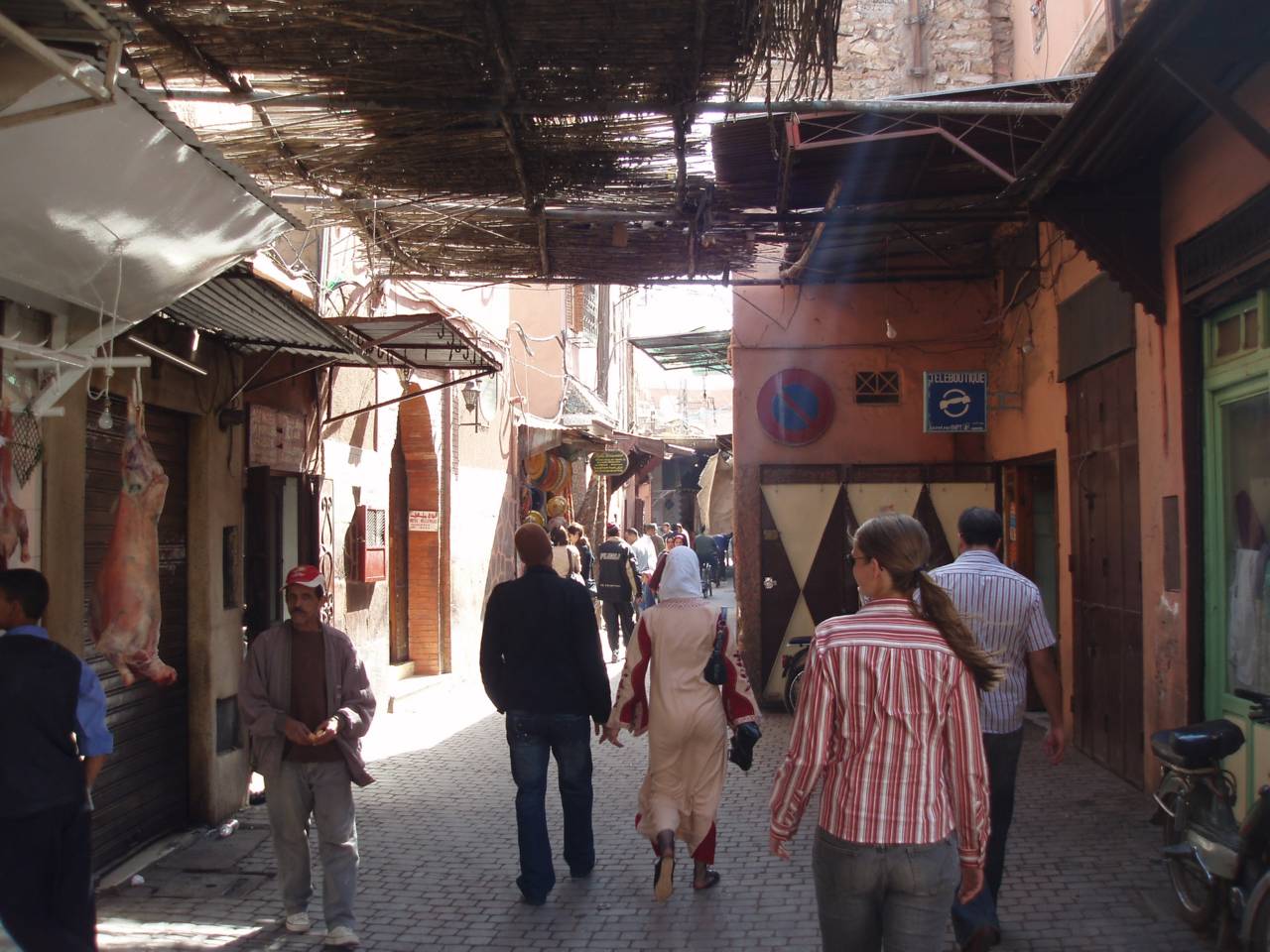

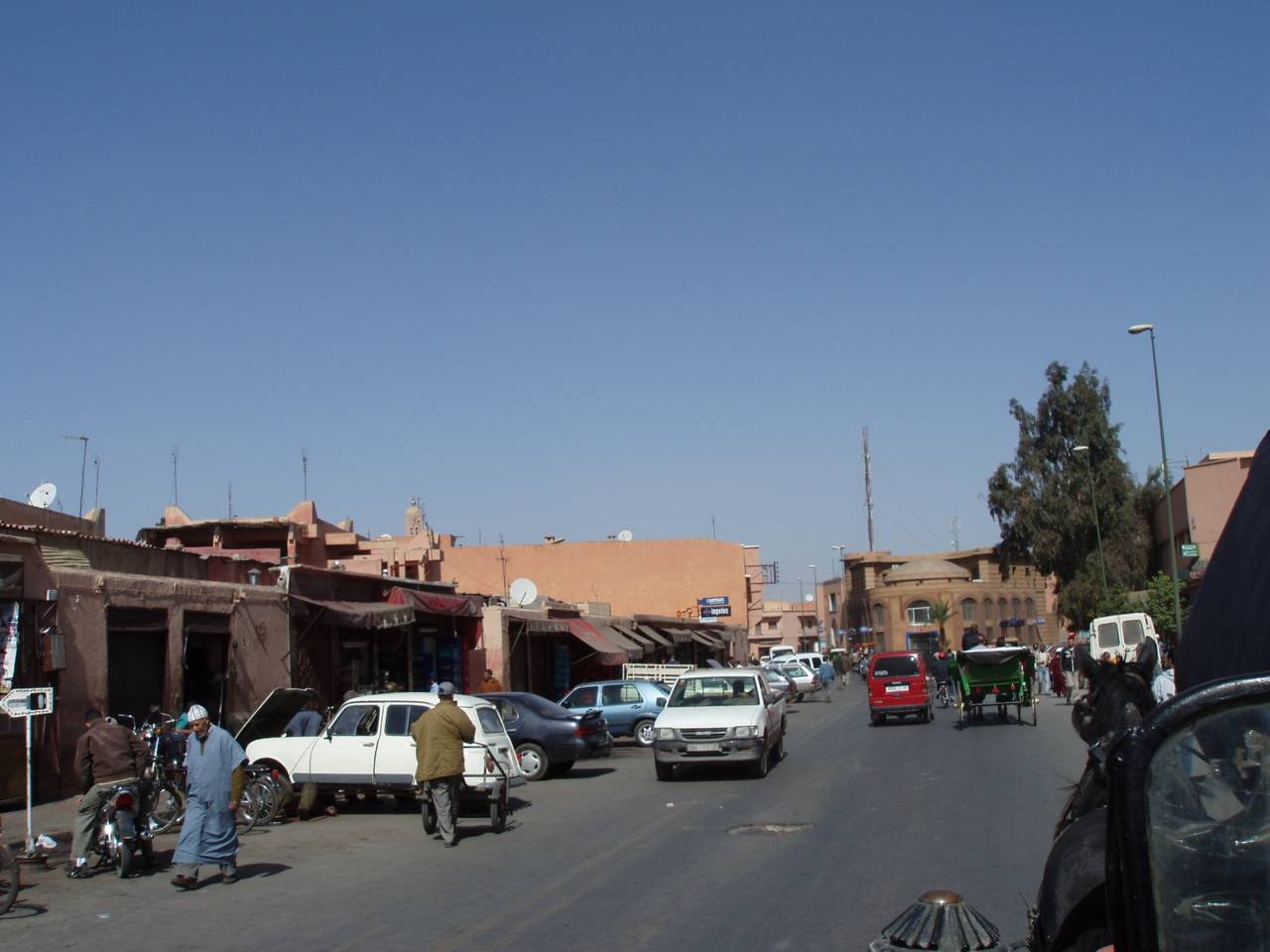
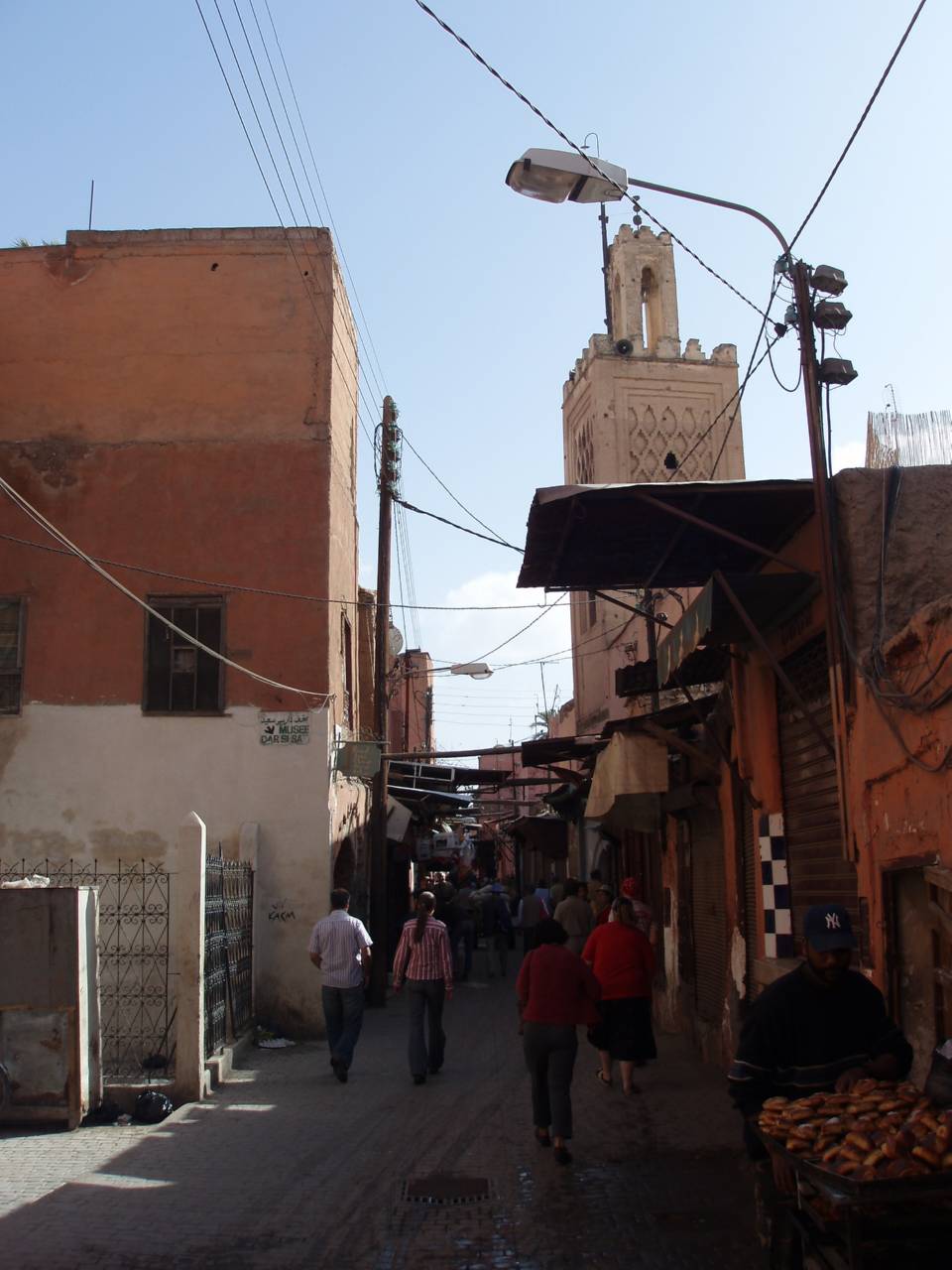
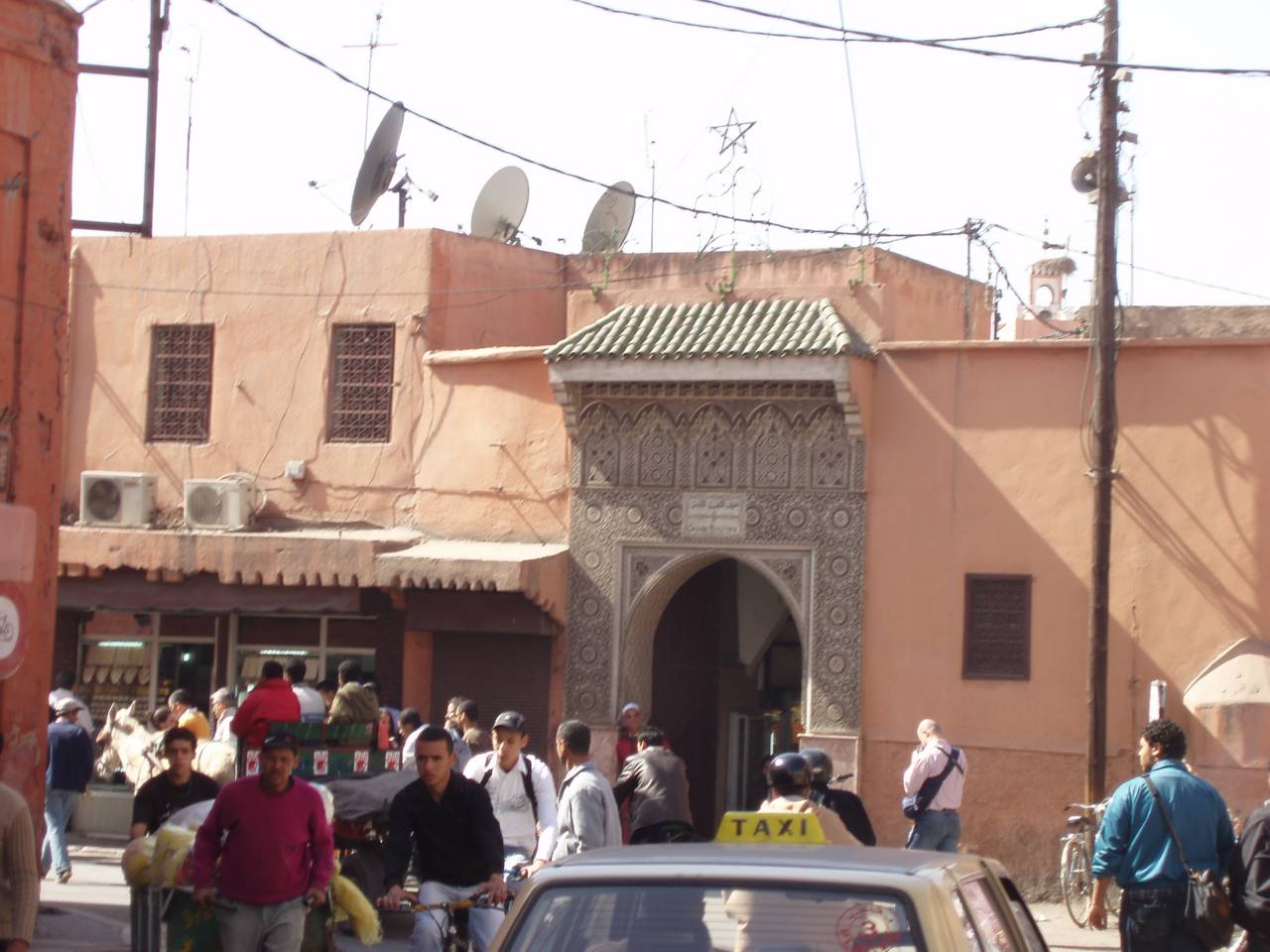

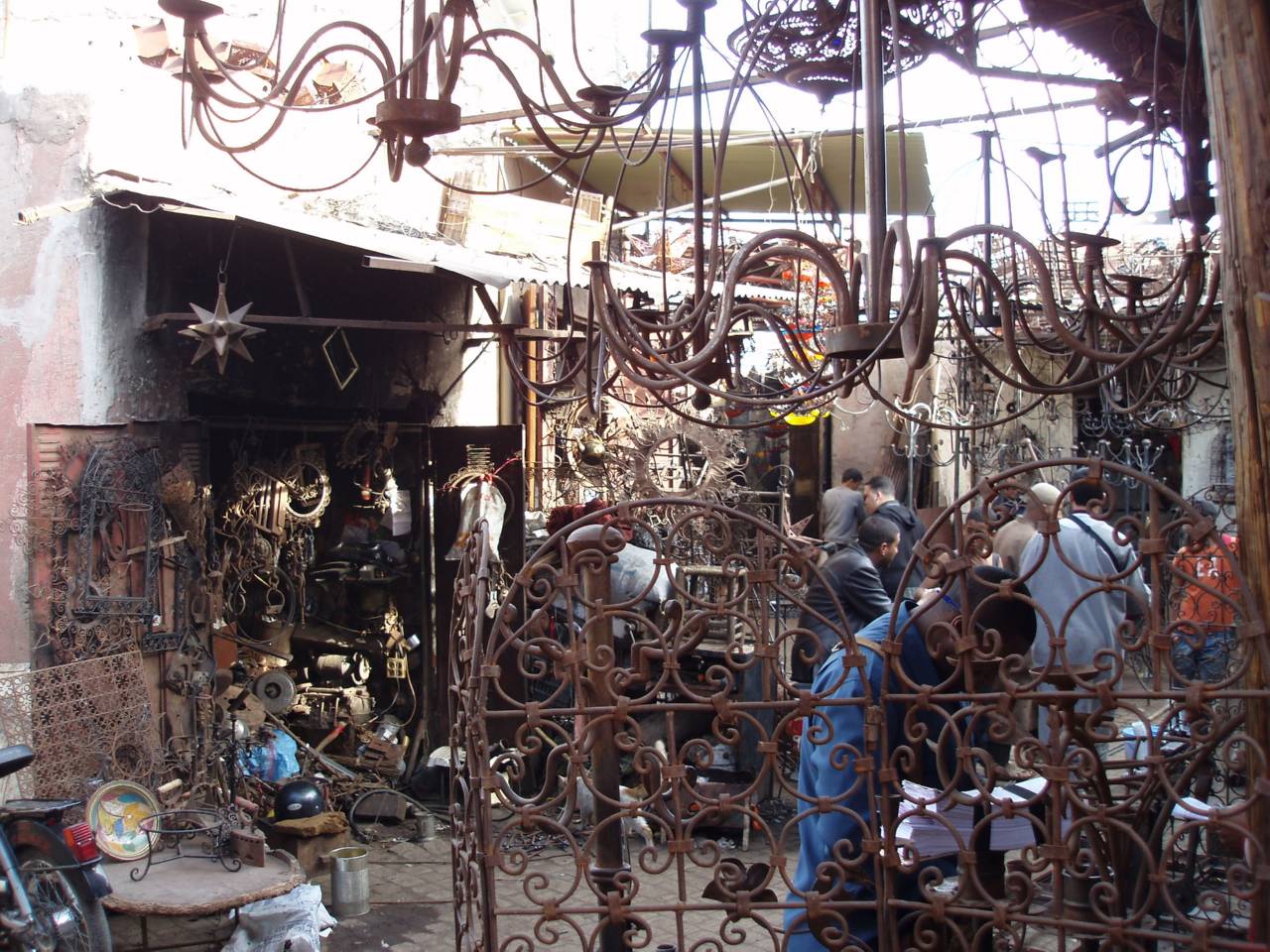
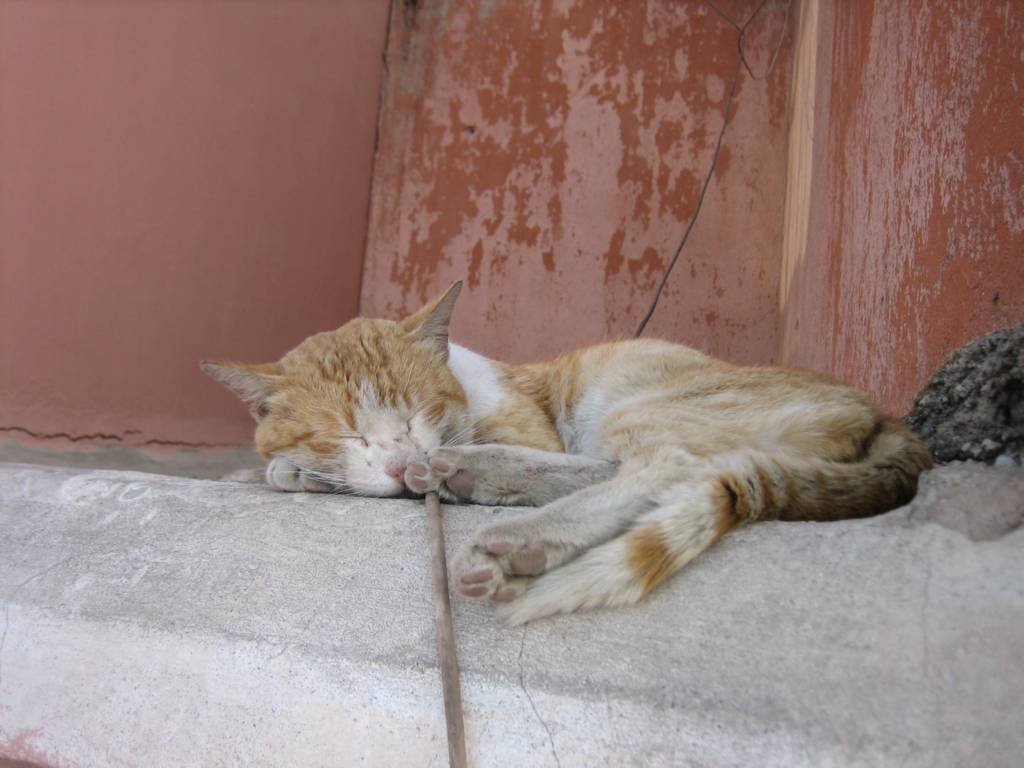

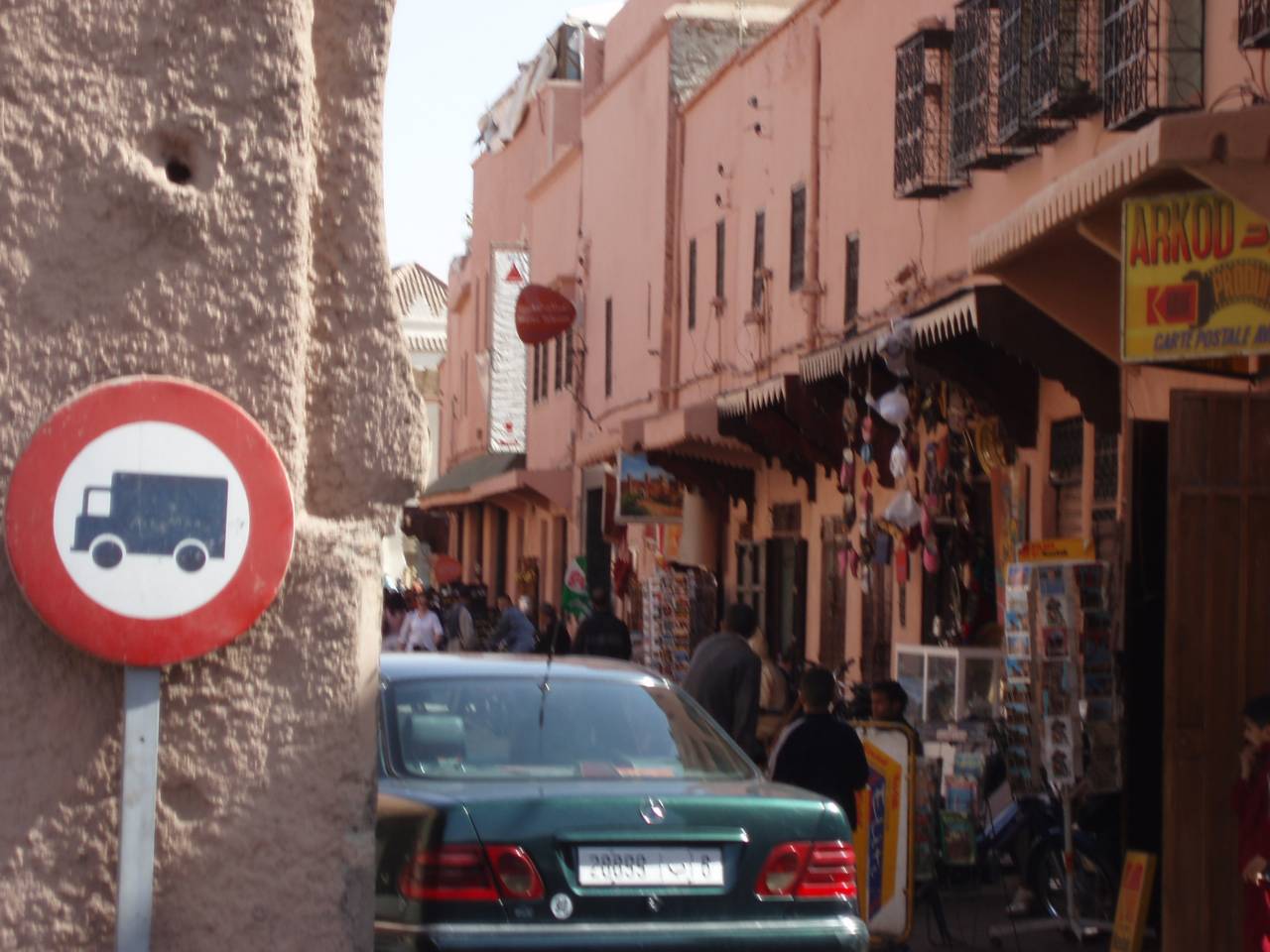
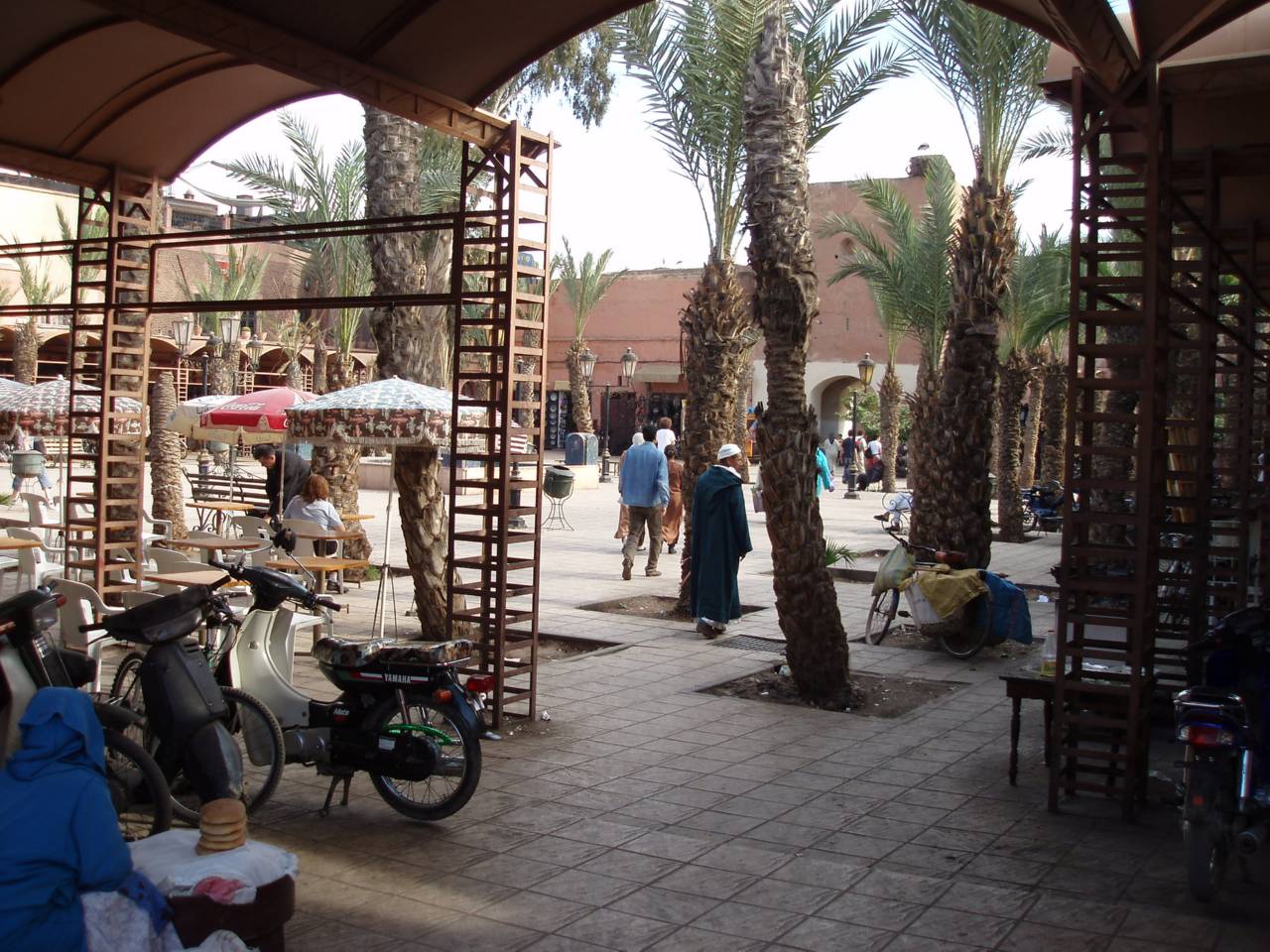
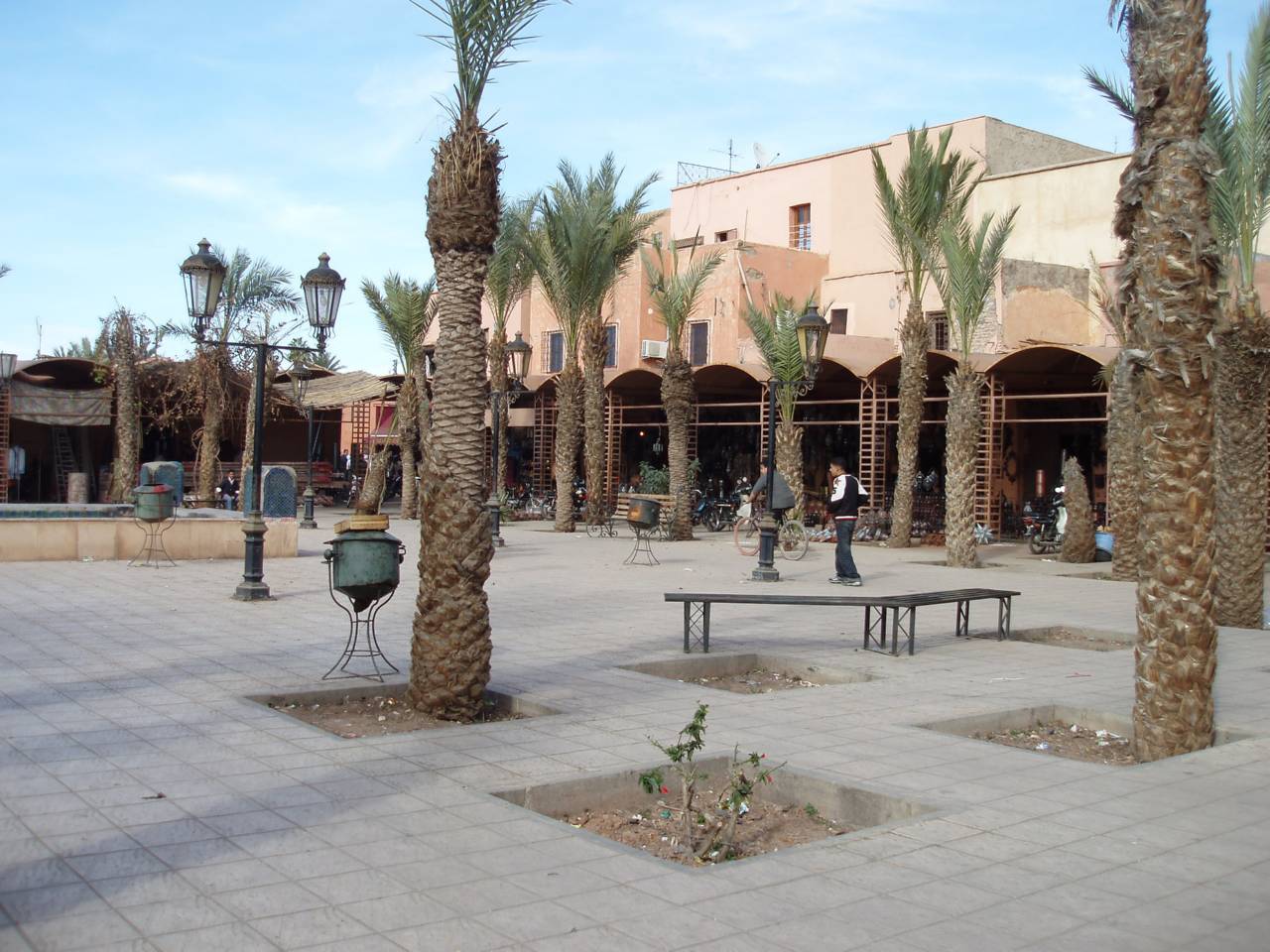
In the Bahia Palace
Marrakech is also one of the four royal cities in Morocco, along with Meknés, Fés and Rabat. Therefore, there is also one of the sultan’s accommodations to visit here: the Bahia Palace.
The spectacular building was actually built quite late, namely in the 19th century. The resemblance to the Alhambra and the buildings of Andalusia is unmistakable.
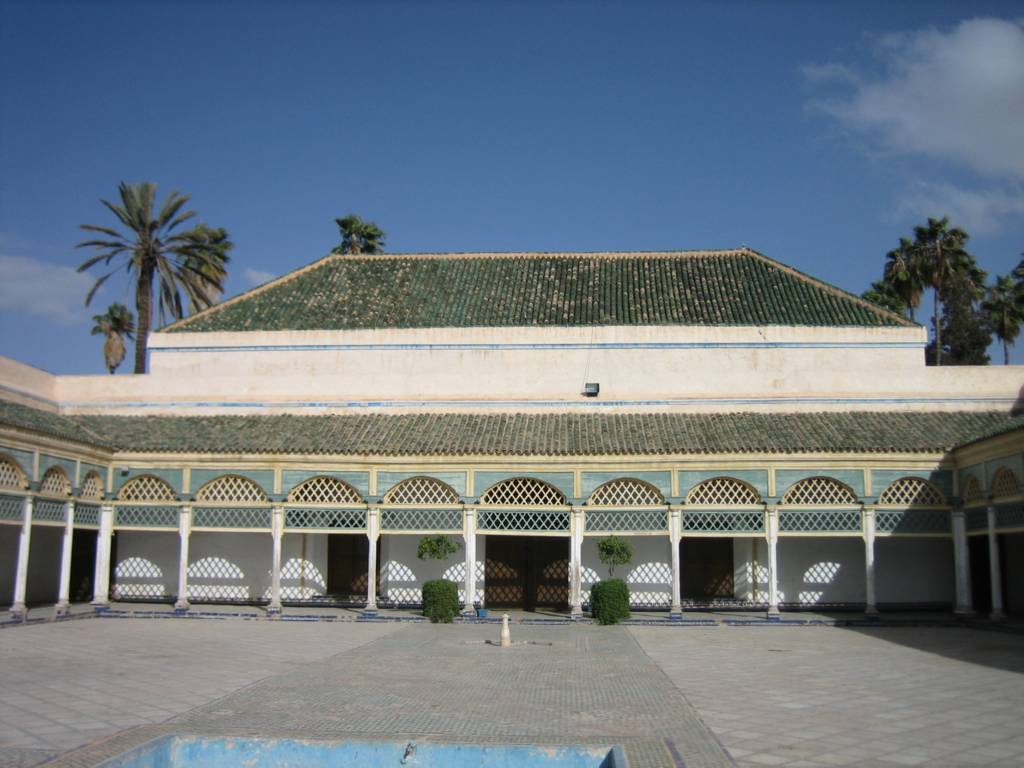
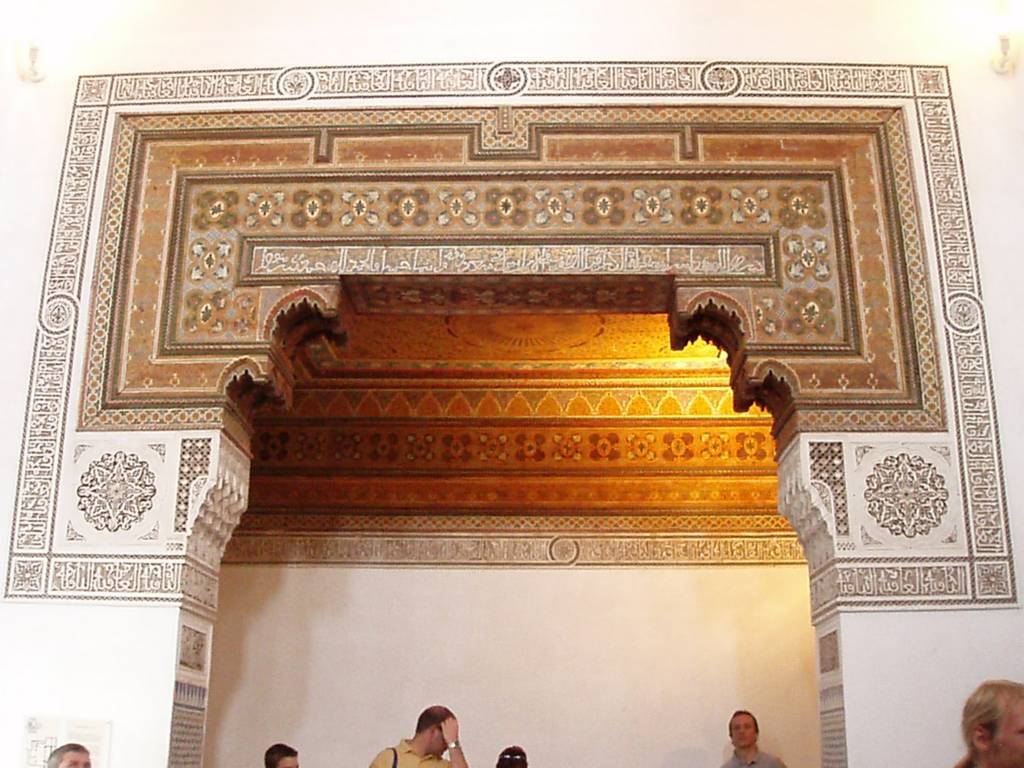
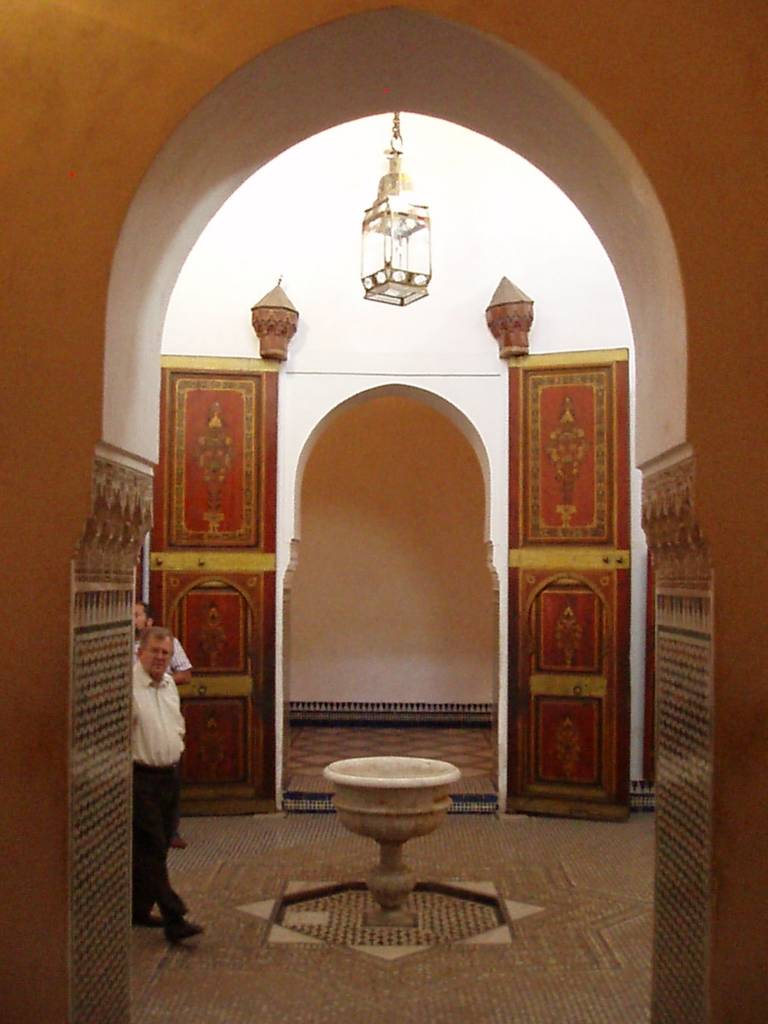
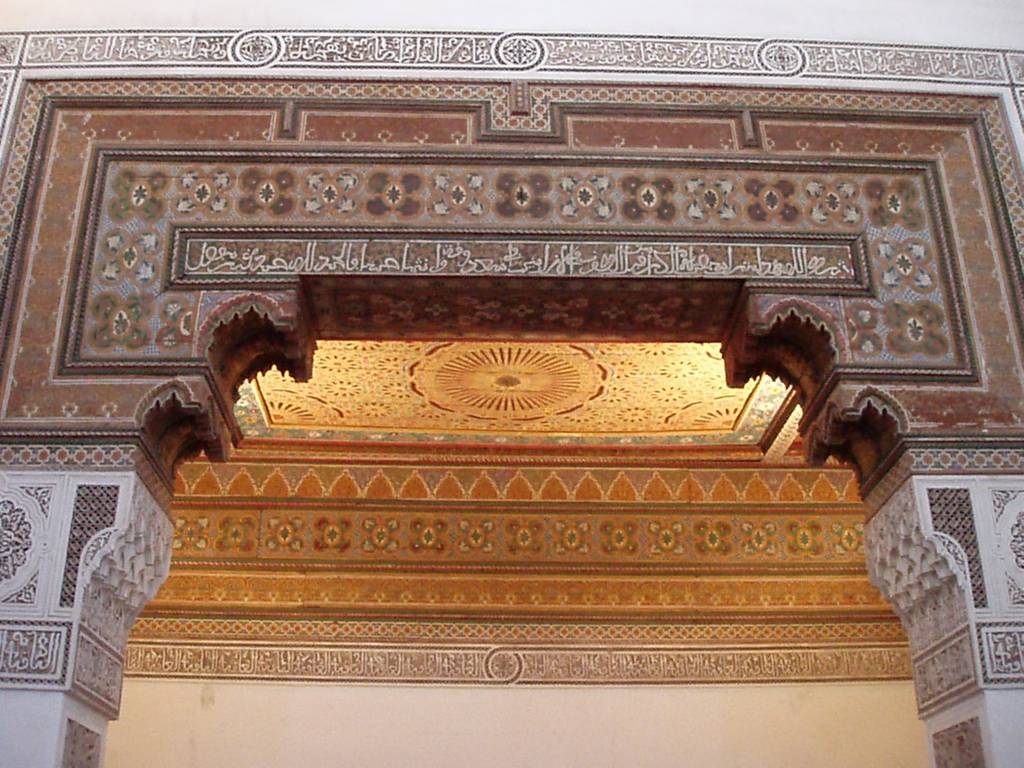
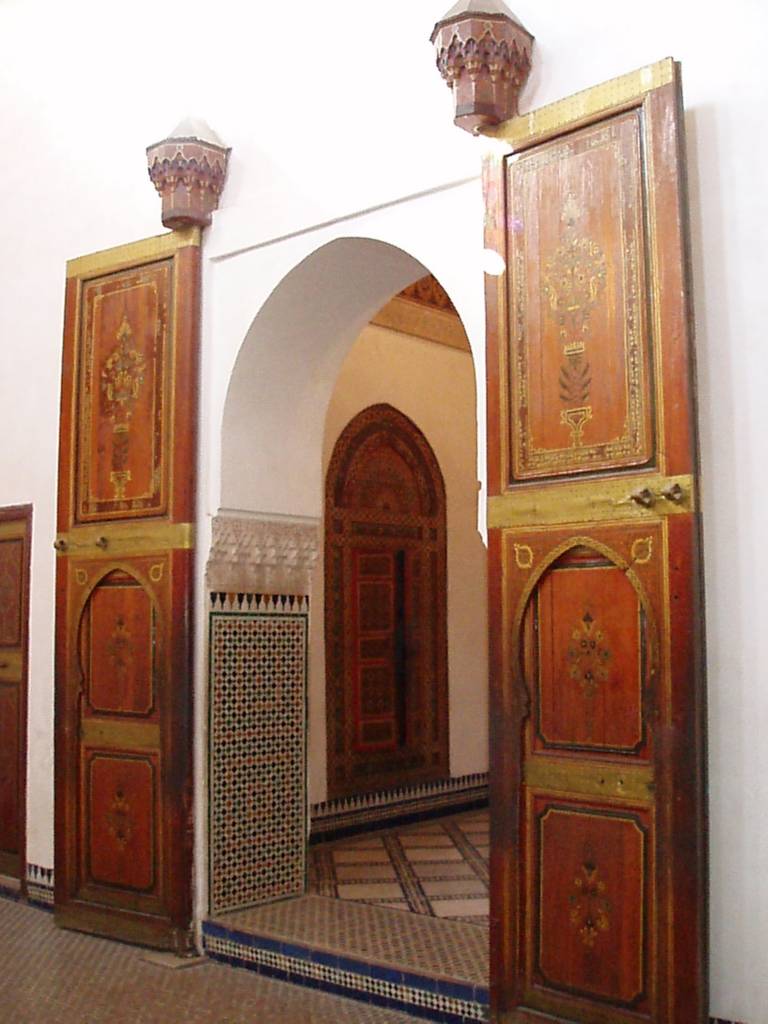
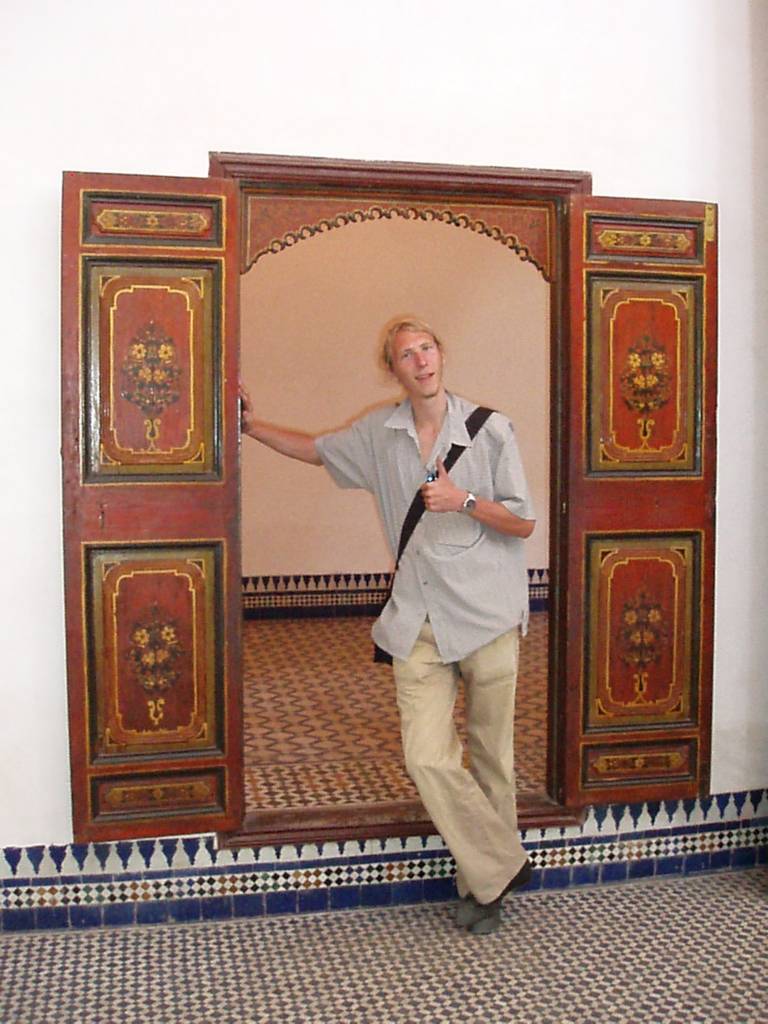
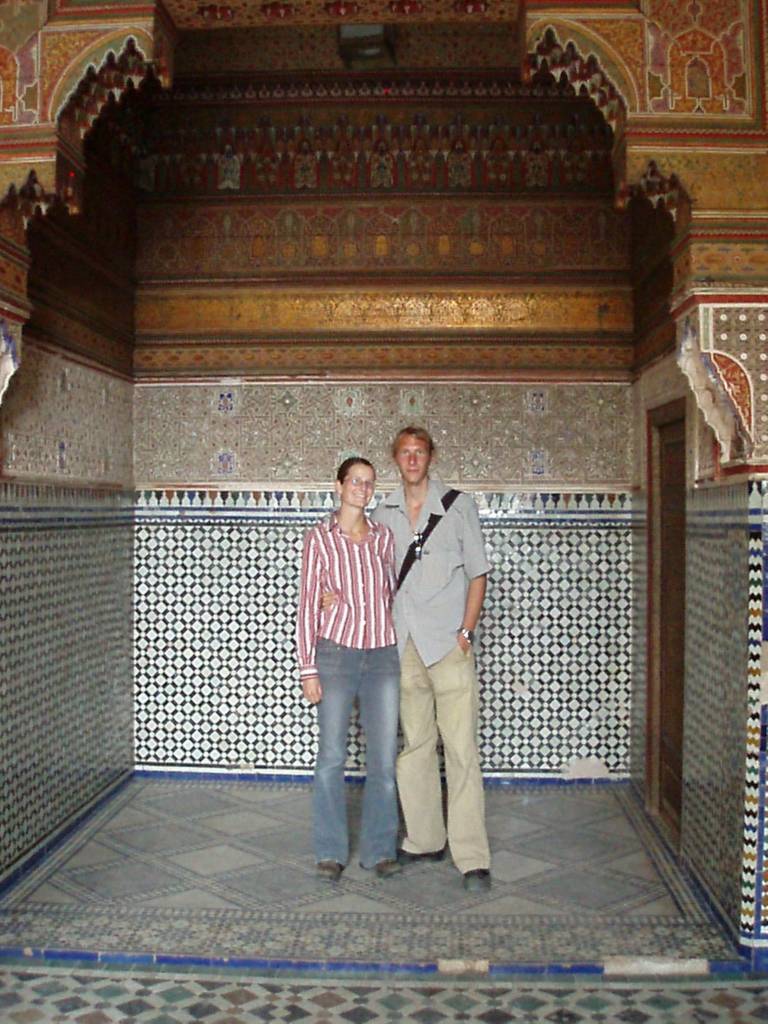
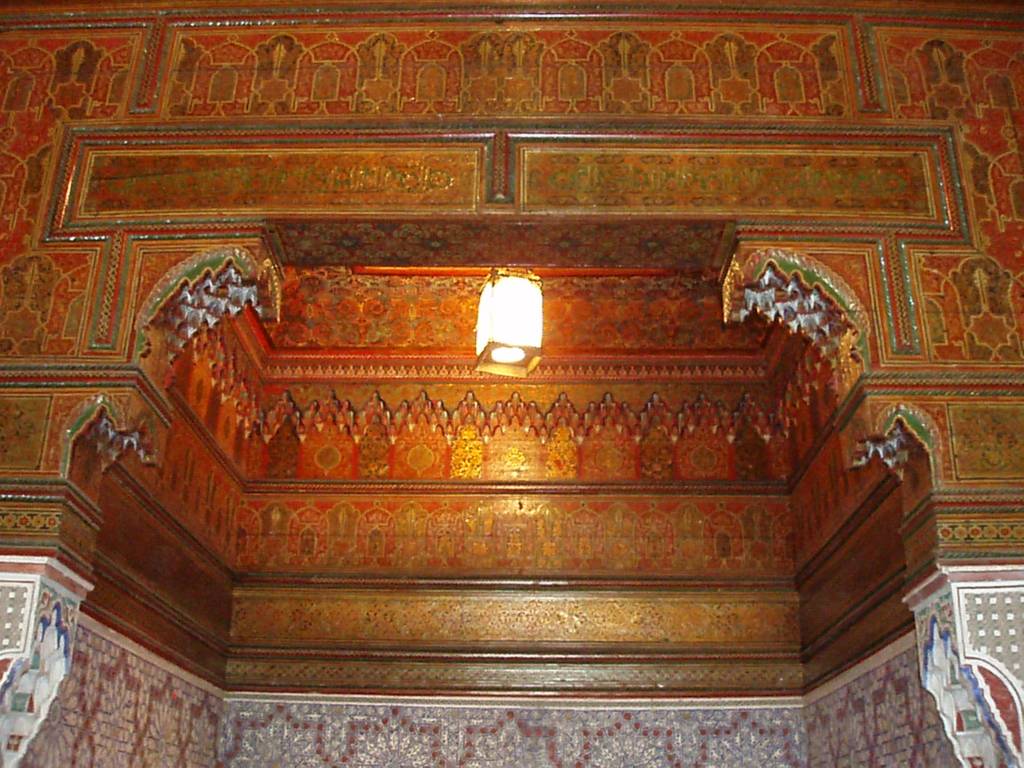


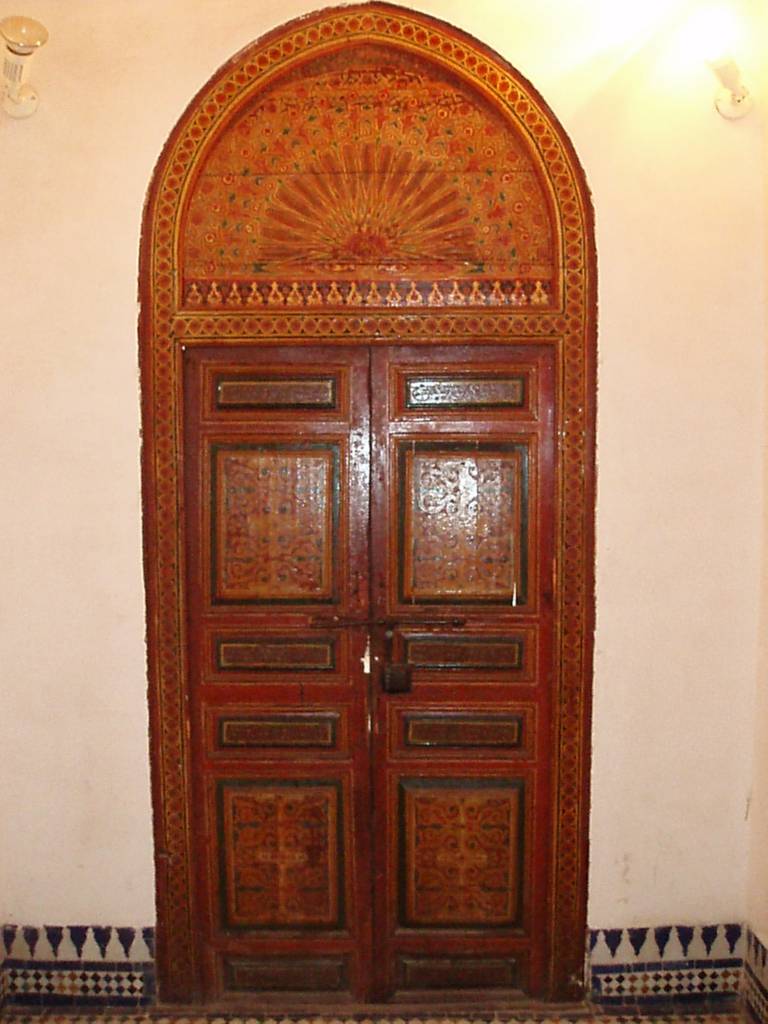
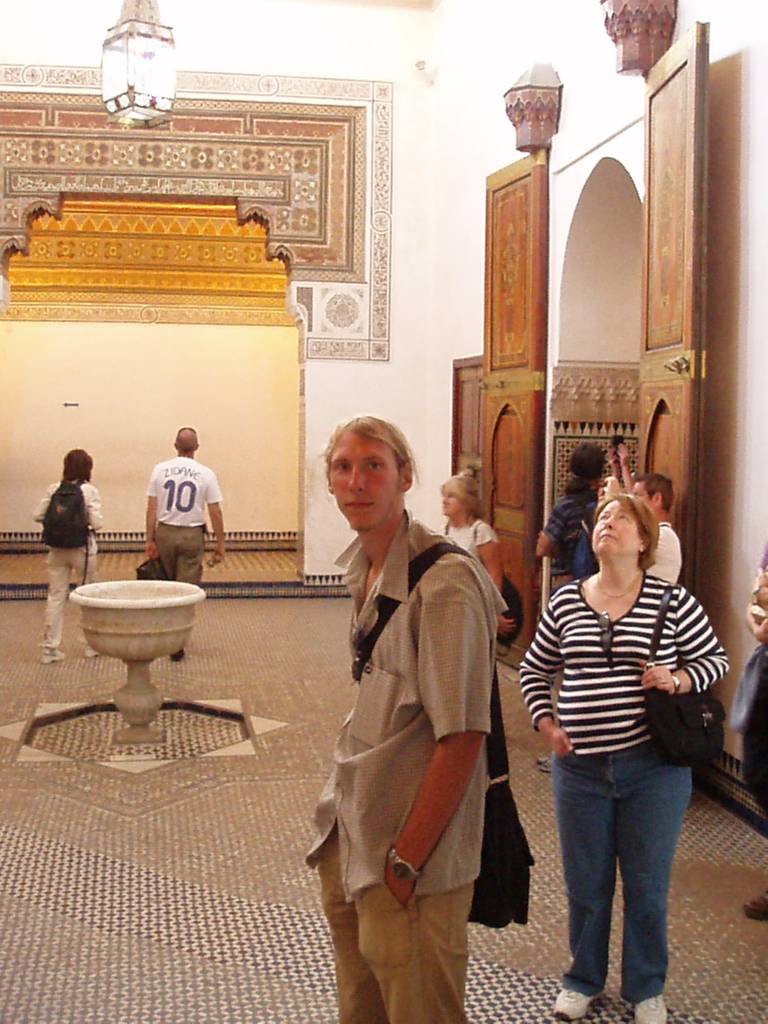
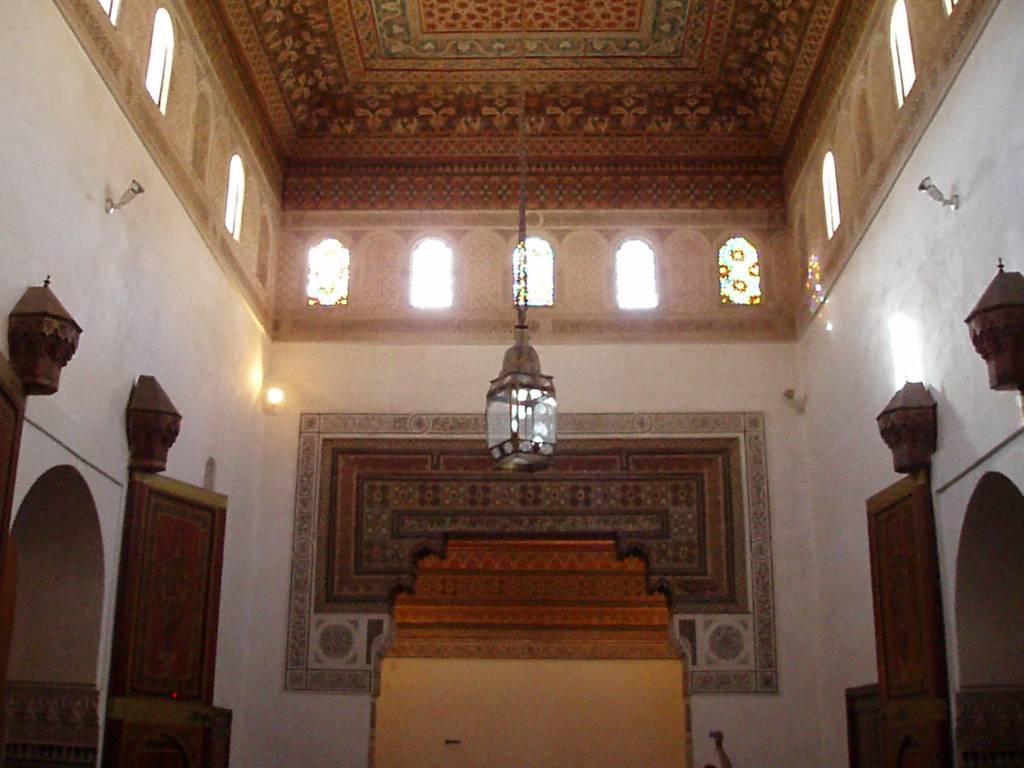
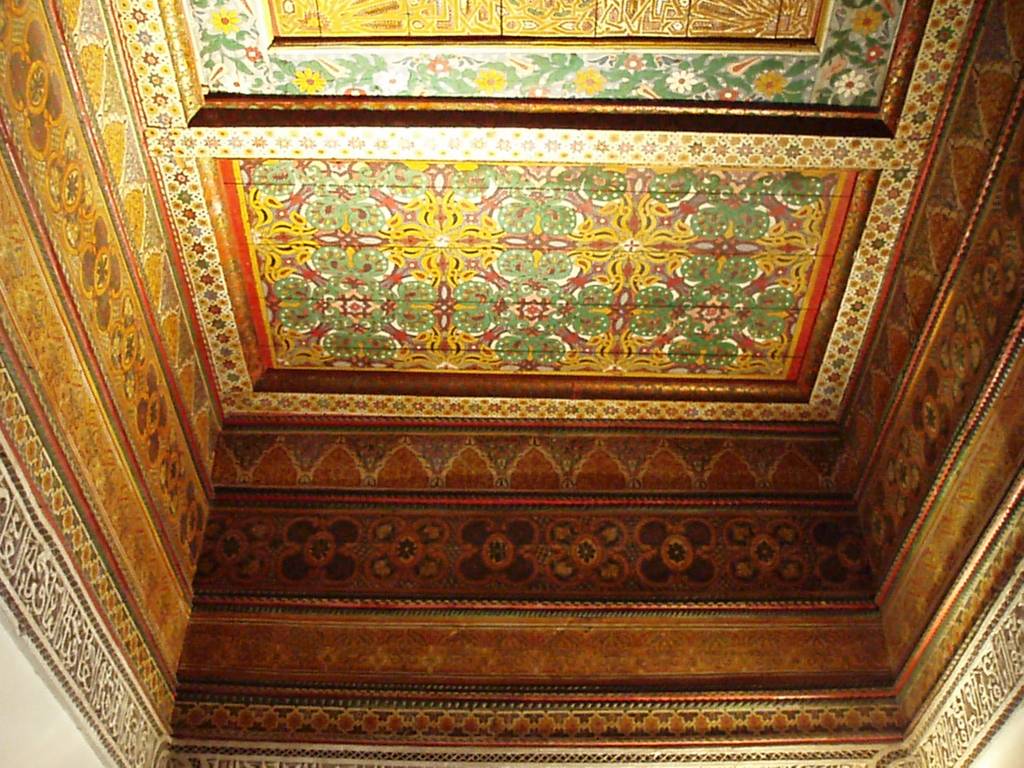
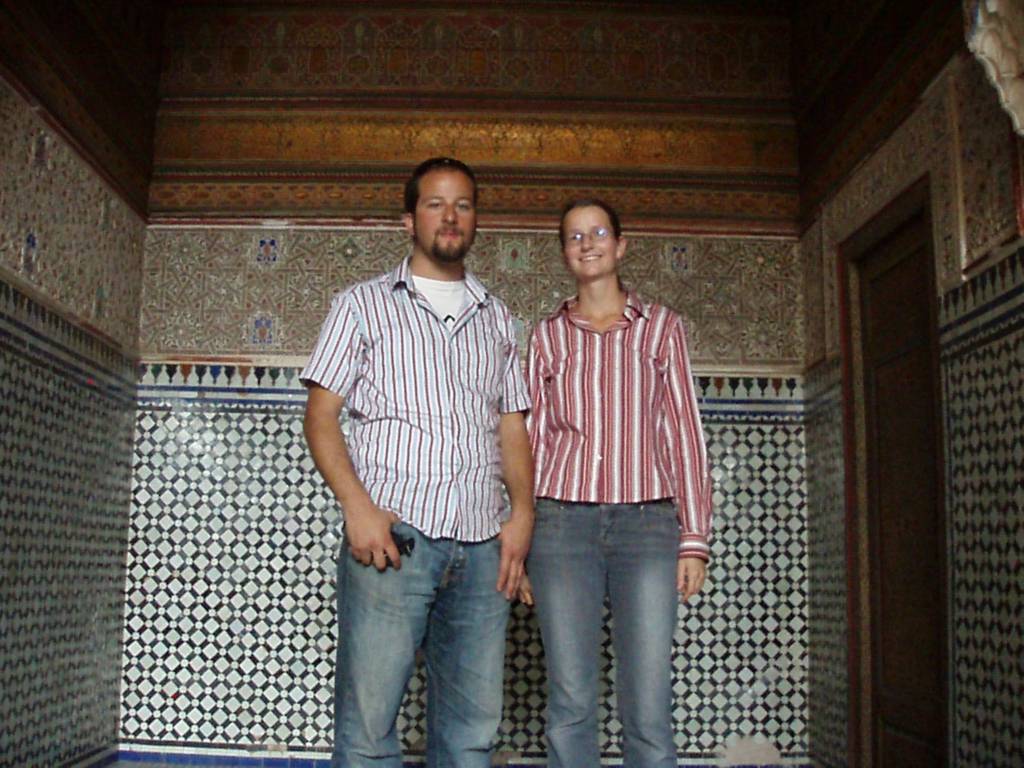


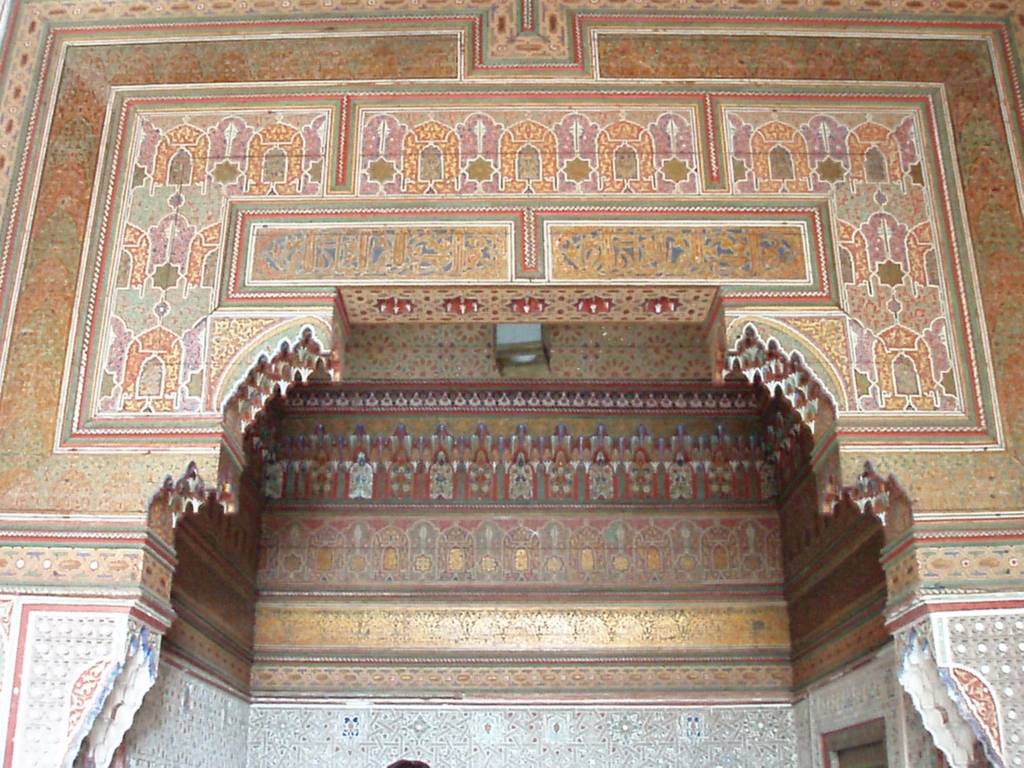
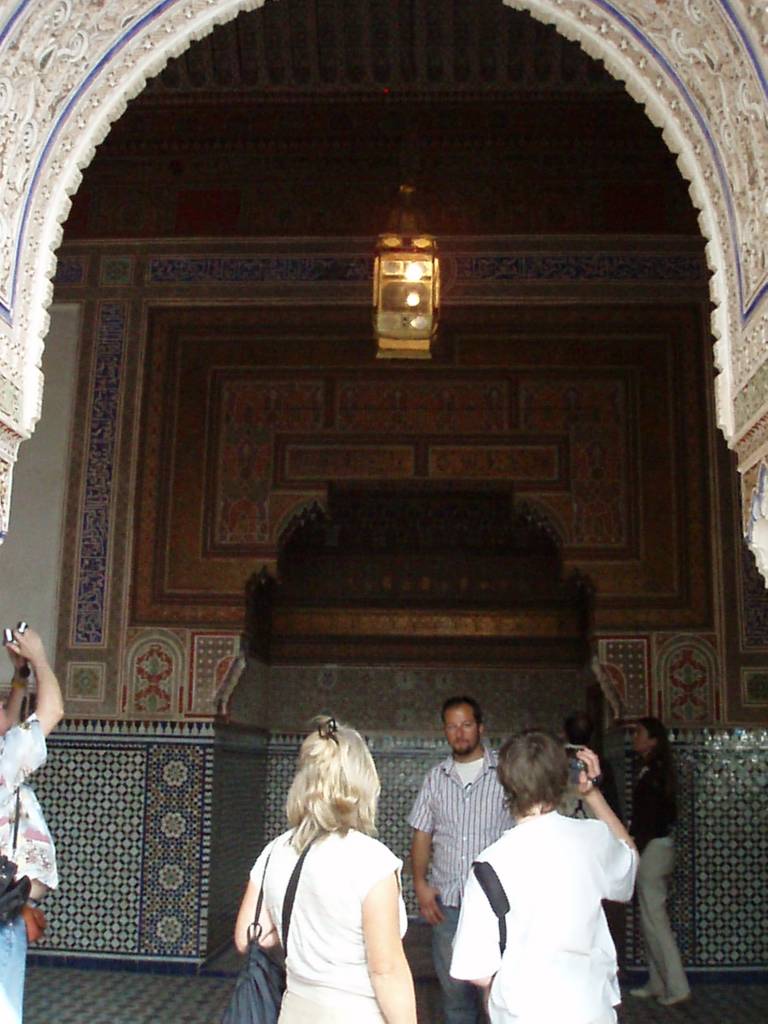
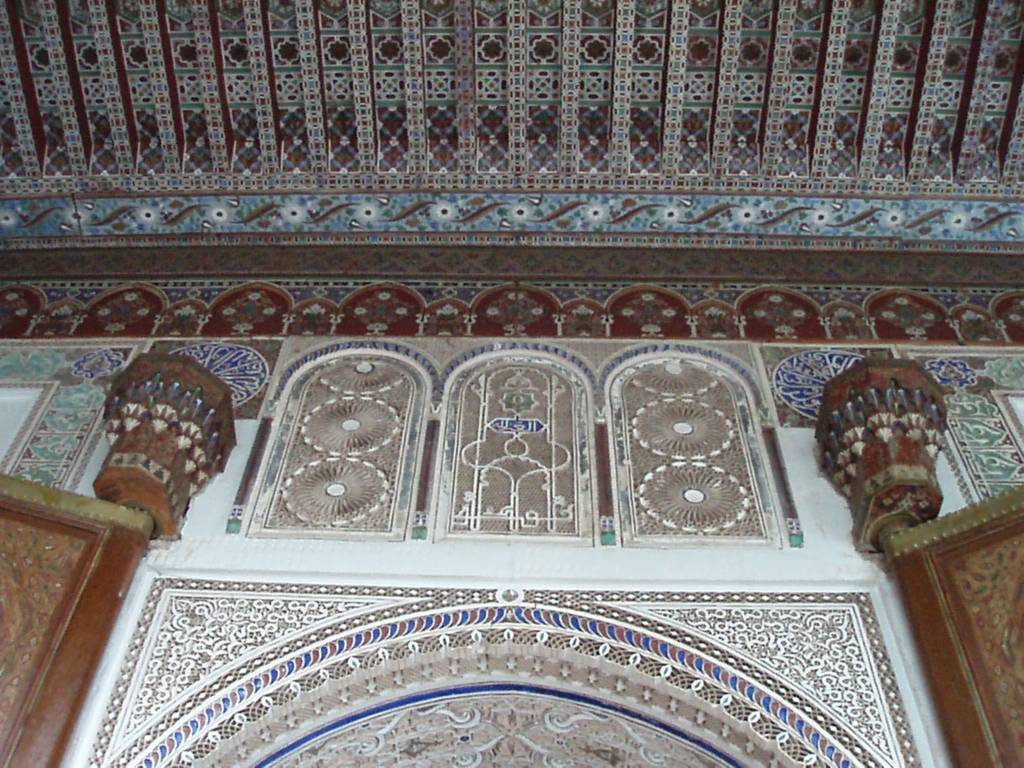

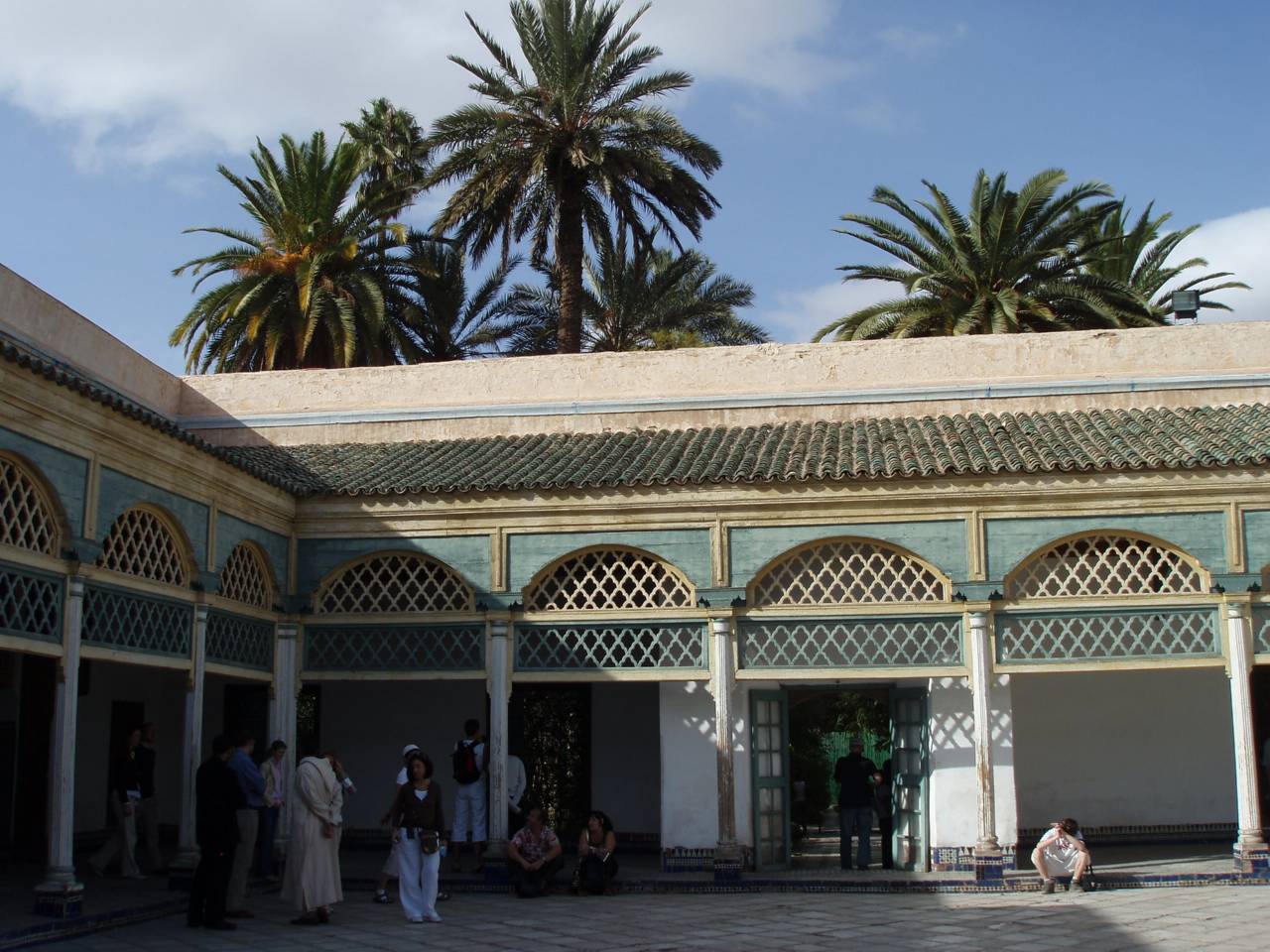
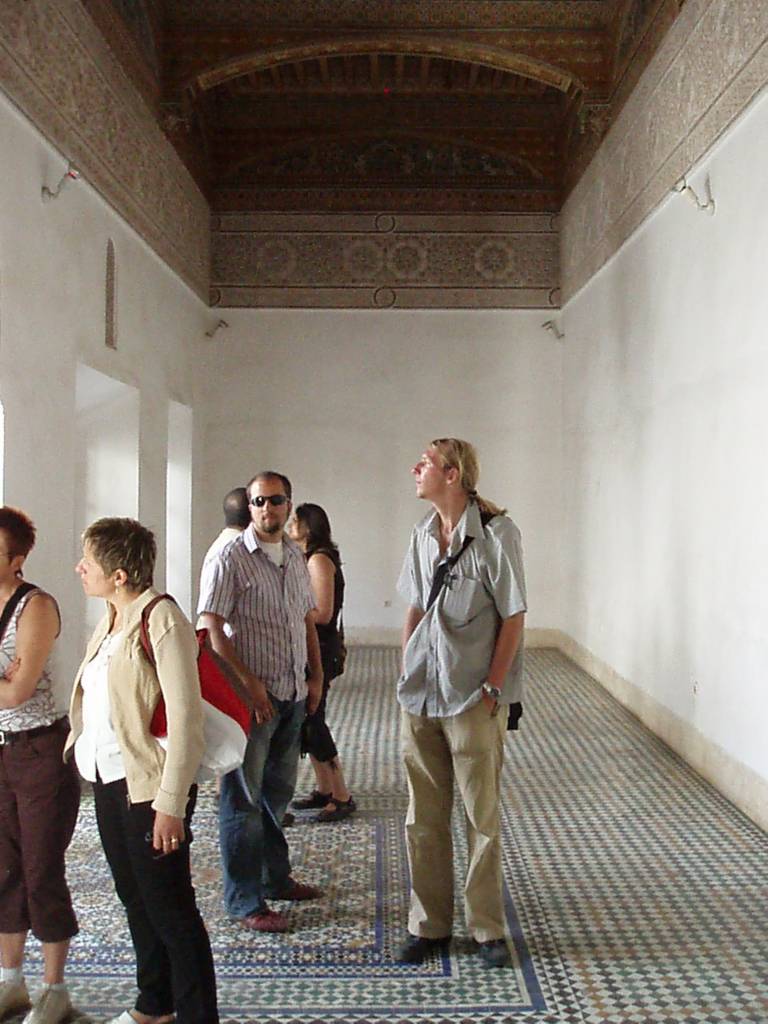
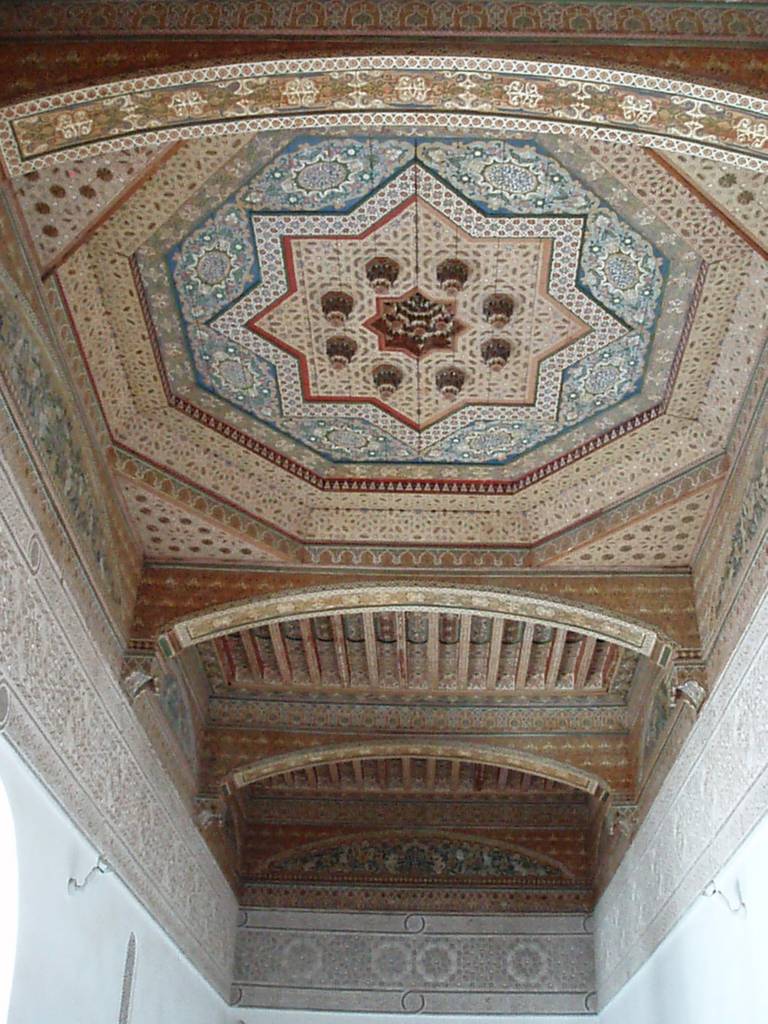



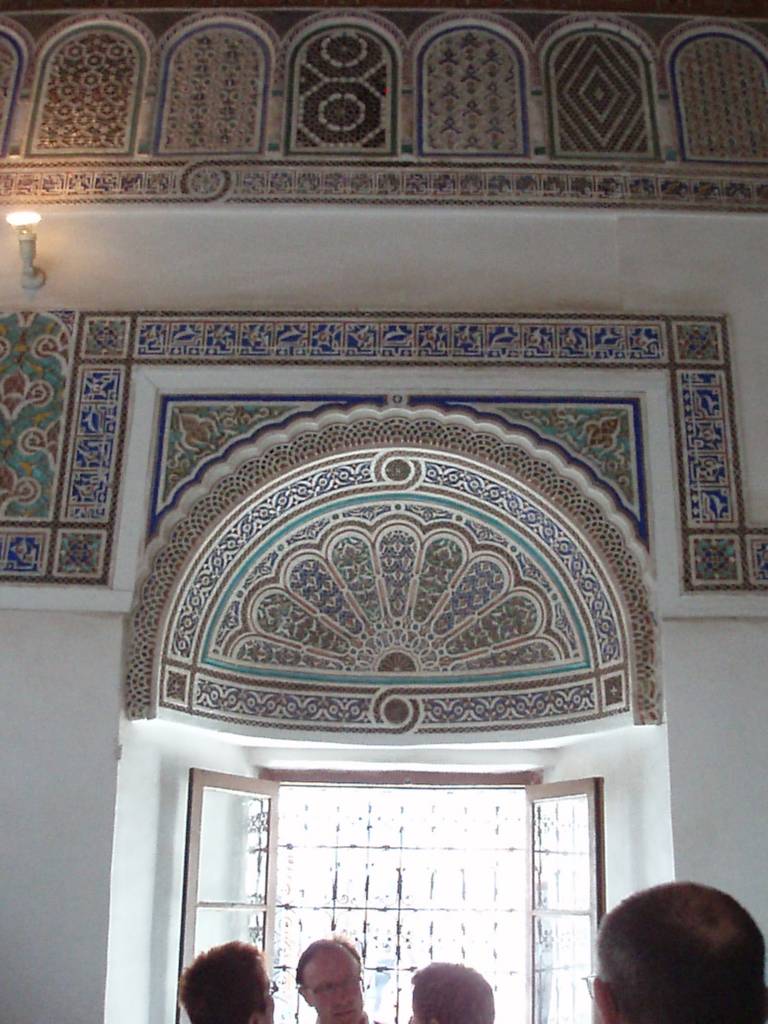


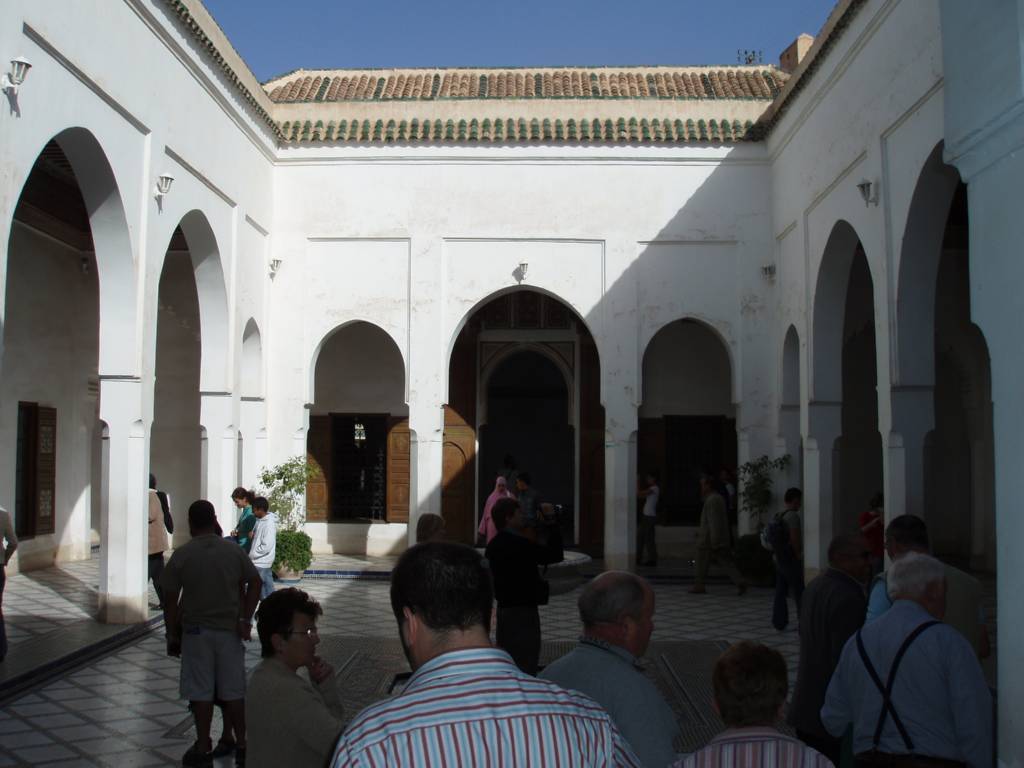
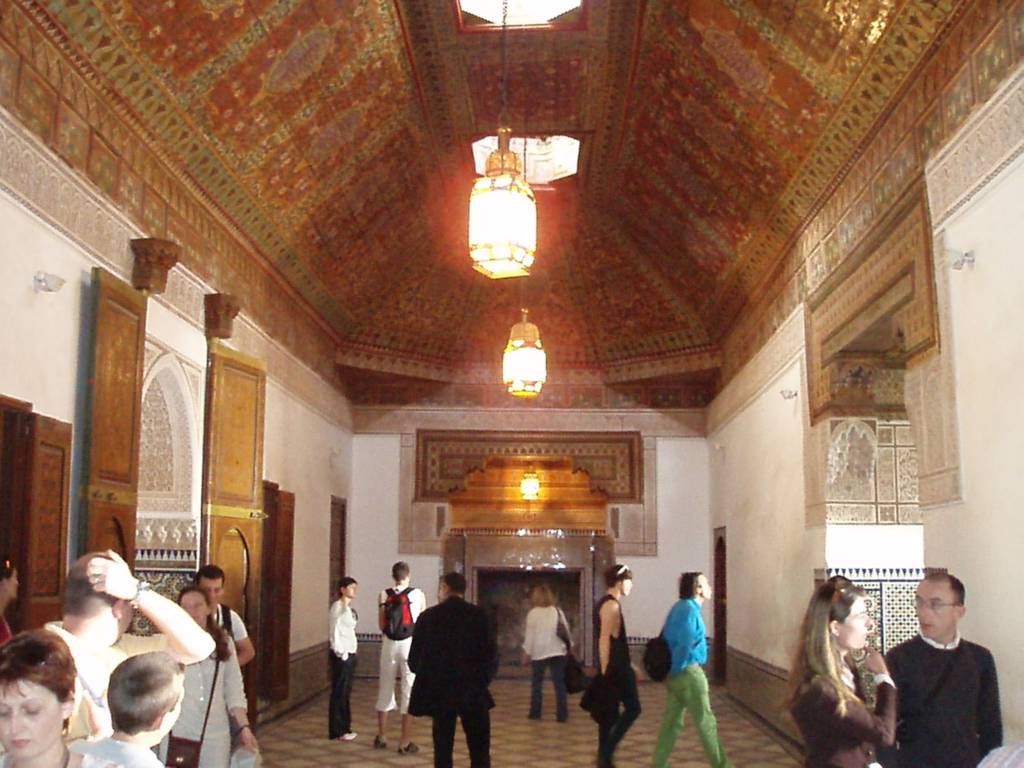
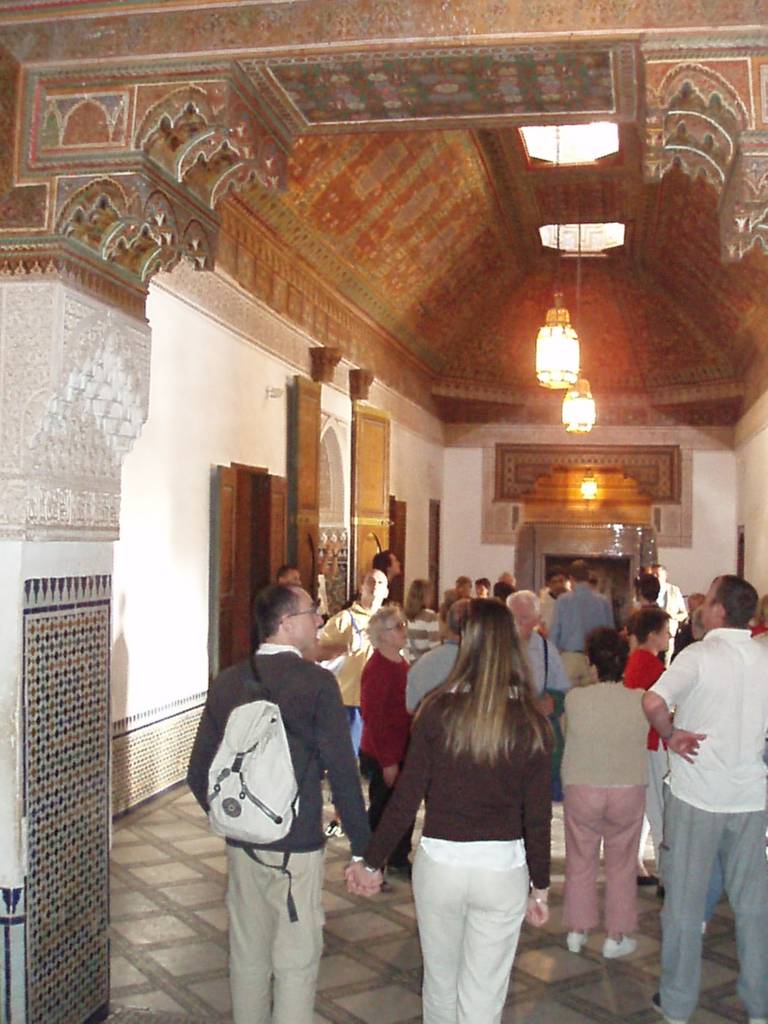
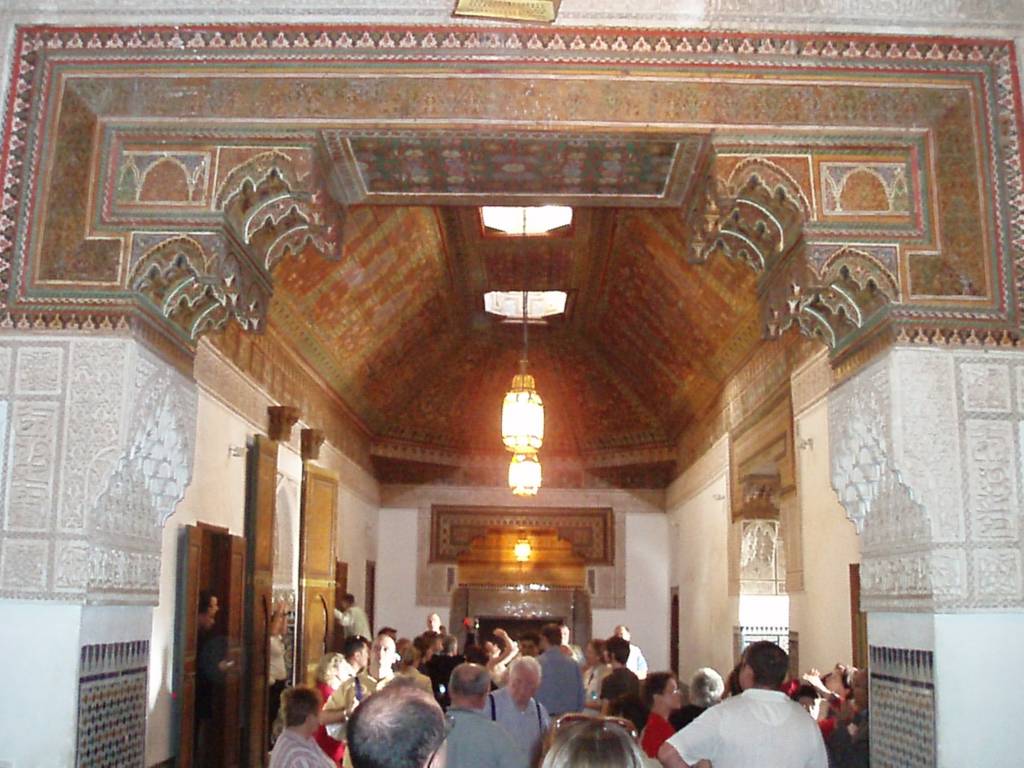
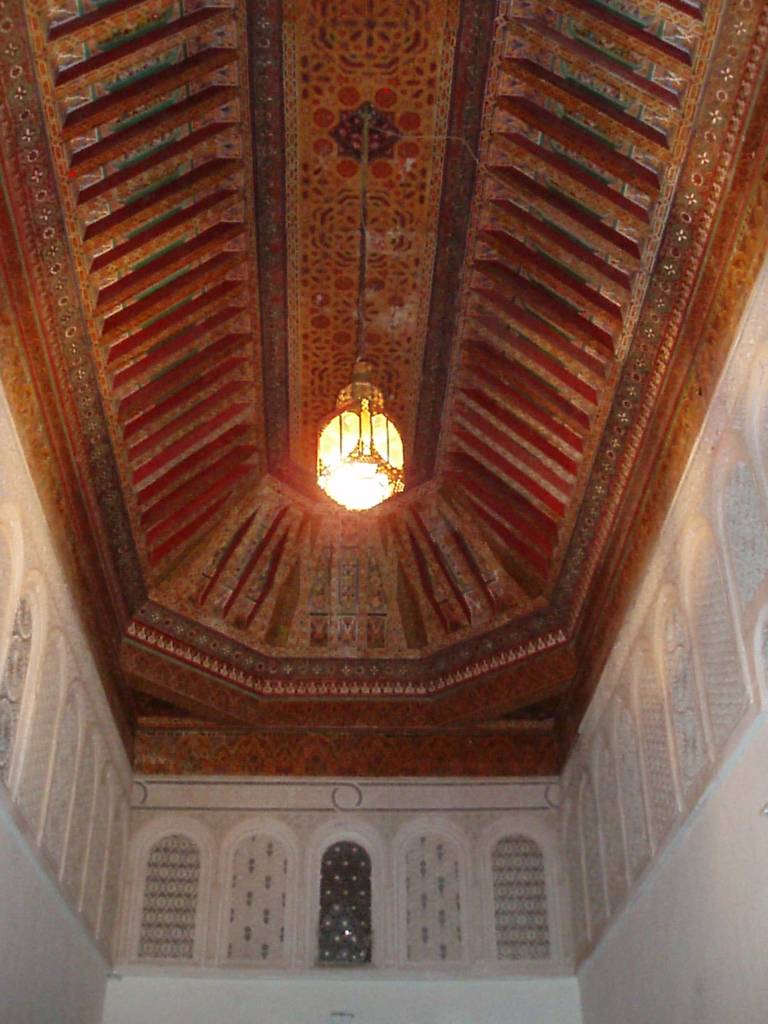
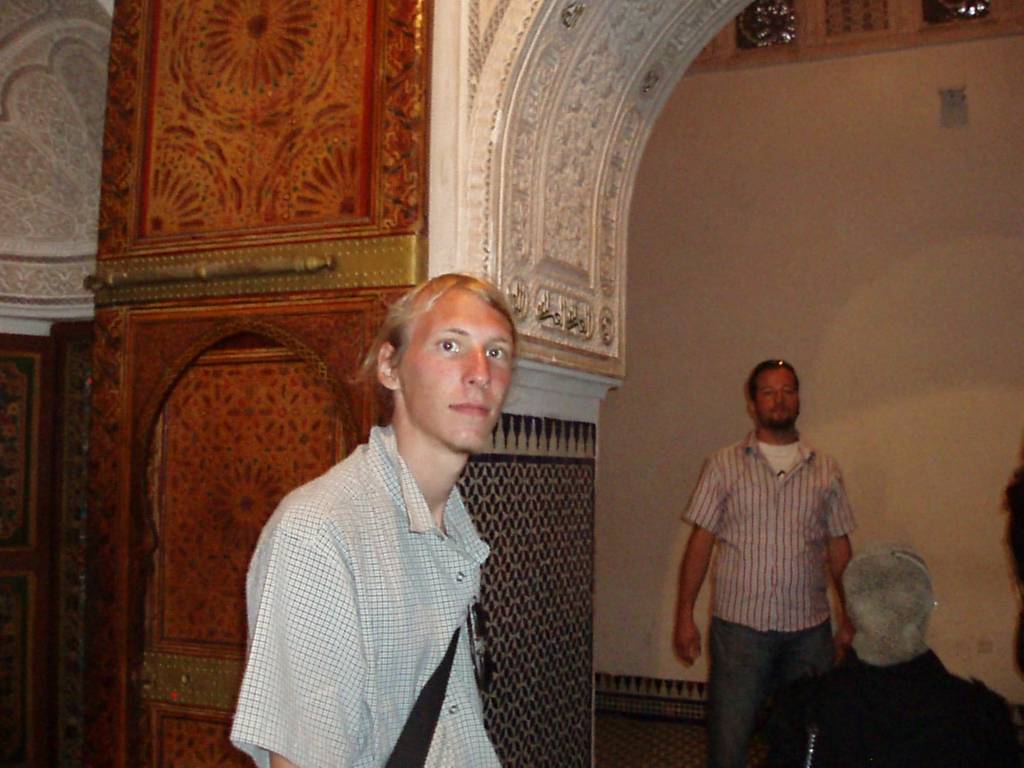
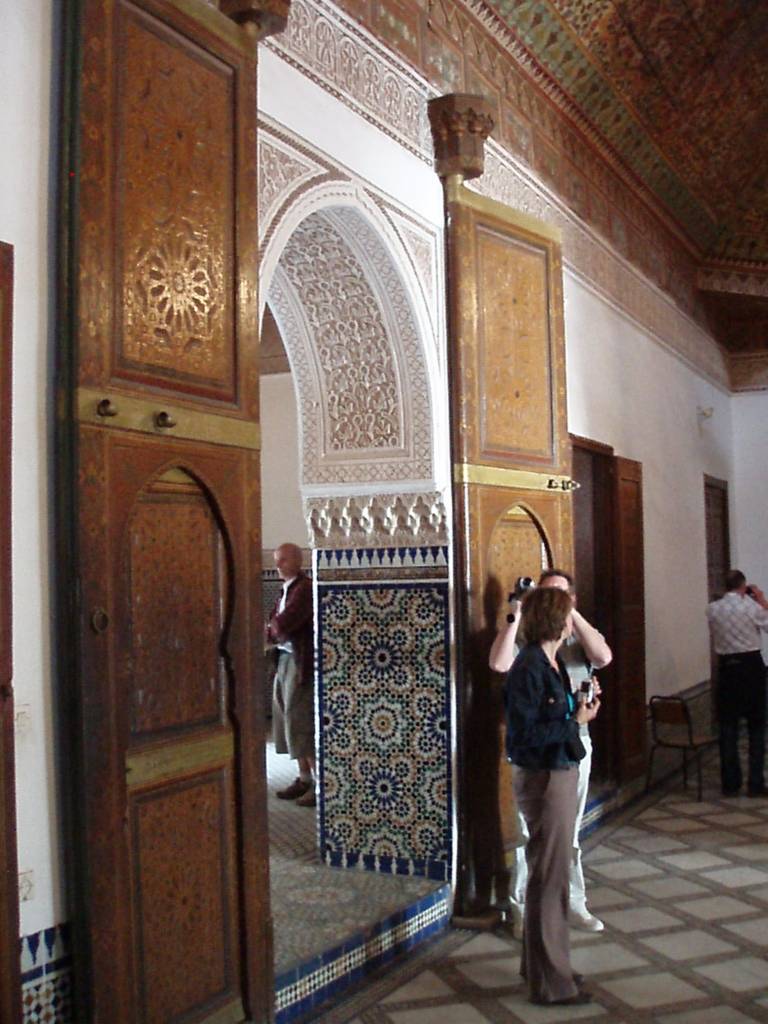
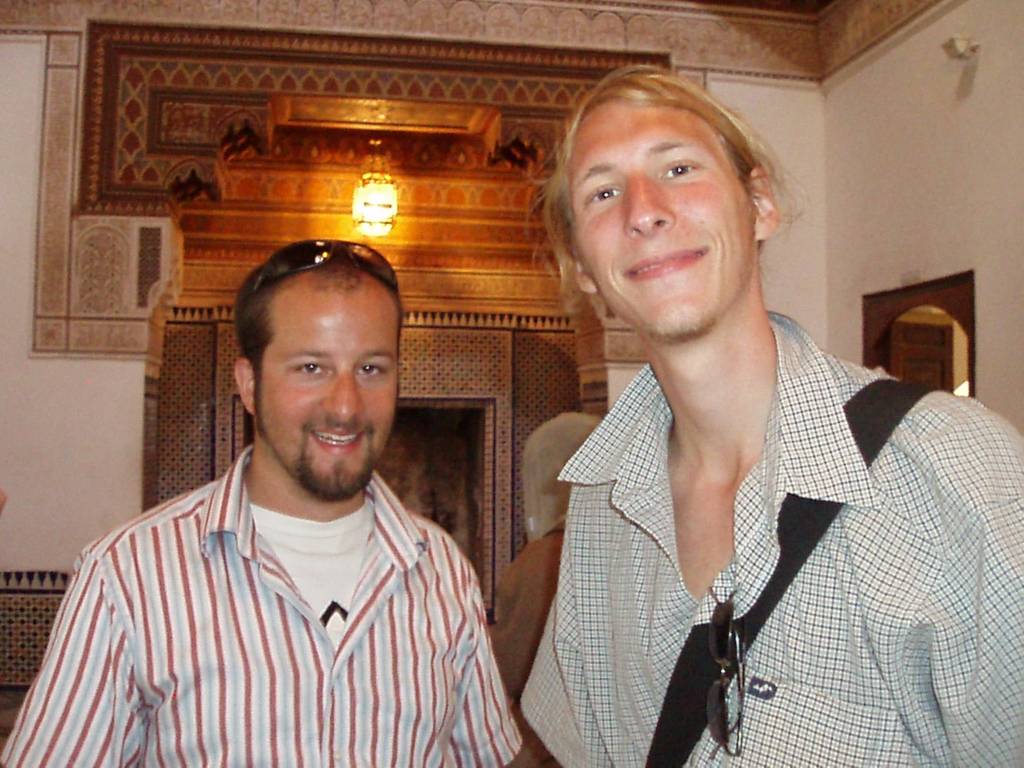

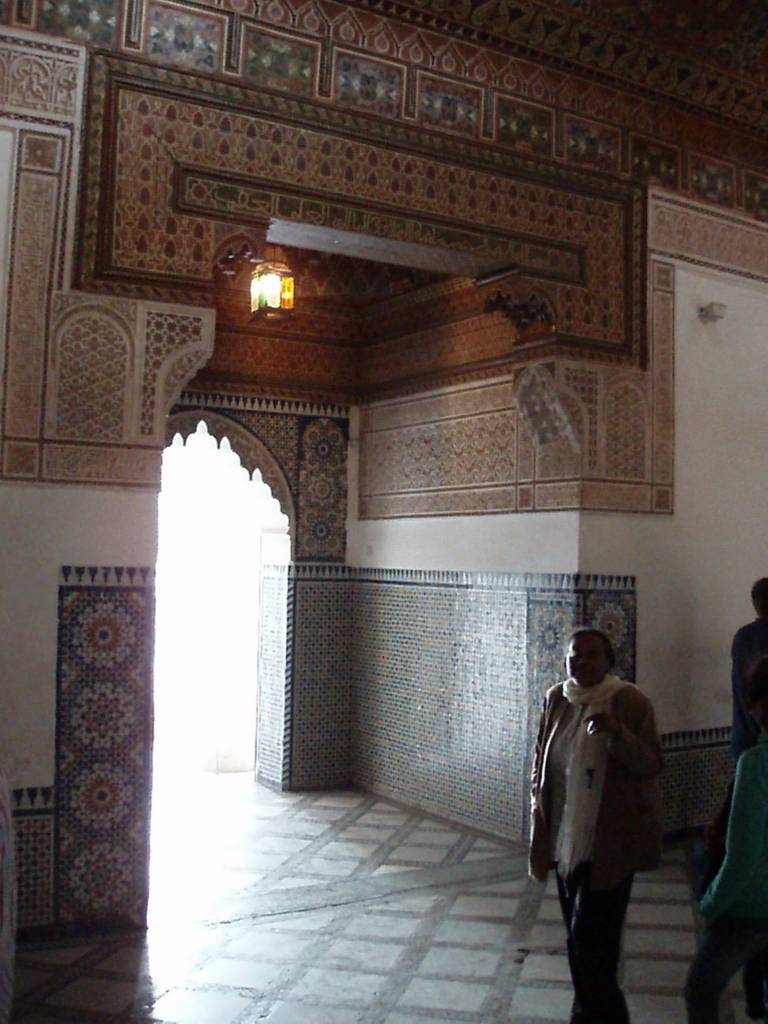
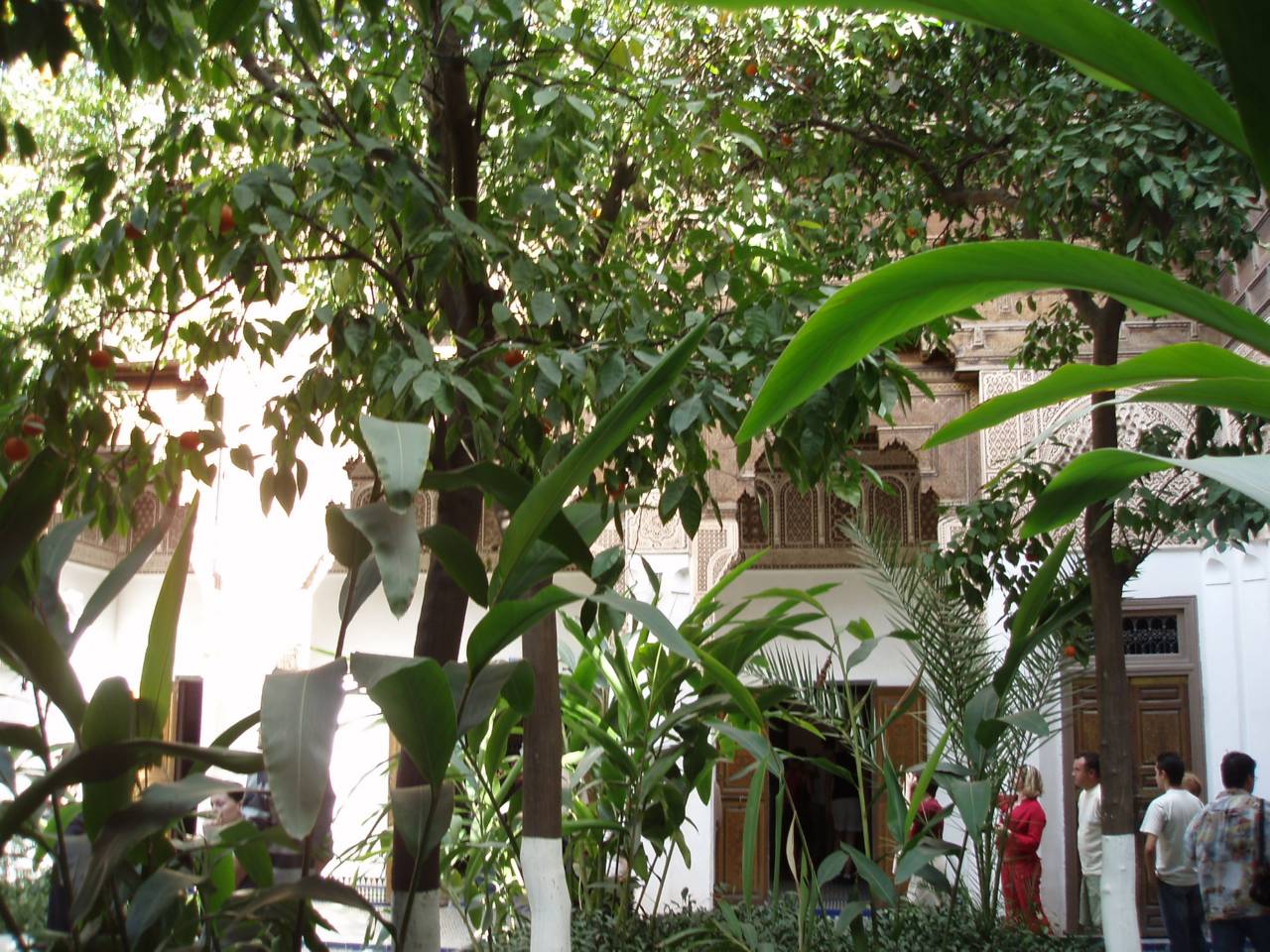
The fight to the train station
We have an appointment with the Americans, but the place where we have an appointment is very big; so we let Susanne keep an eye out on the balcony while Olli and I go searching across the Djemma-el-Fna. At the same time we explore the cafés for a cheap place to have breakfast. After an hour we give up the search and try crépes with honey and freshly squeezed orange juice on a terrace at the corner of the large square. Here we can comfortably observe the early morning hustle and bustle of the Gauklerplatz. The breakfast is so good value for money that we will come here for the next few days. However, Marrakech is already so far advanced in terms of tourism that we encountered here for the first time in a restaurant: “service not included”.
Finally, from here we also see the American couple with whom we arrange to meet for dinner.
After breakfast we go prophylactically to the bus station to find out when buses leave south to Ouarzazate – our next destination. The day is stiflingly hot and the air is still, so we keep stopping and taking breaks, even if the walk isn’t that far.
We follow the city walls and finally reach the station in front of which there is a “normal” Moroccan market. Before we get about 300 meters to the bus station building, we are already intercepted by men who seem to be waiting there all day for opportunities like us. “Hello, where do you go to? Where do you want to go? Ouarzazate? Agadir?” The guys are really annoying, you can’t get rid of them and the closer we get to the train station, the more and more of them there are.
“Ouarzazate?” – “No, bus station.” – “Are you from Germany? You want to go to Ouarzazate? come with me!” But we don’t want that and try our best to ignore the guys. That just seems impossible since we are pretty much the only tourists here and every tourist catcher wants to win us over. The fact that we only want to inquire about the departure times irritates the people and the men try to put pressure on them: the buses are always so crowded and we should get the tickets now. But we just want the times and as thought there are buses every hour and the journey itself will take 4-5 hours.
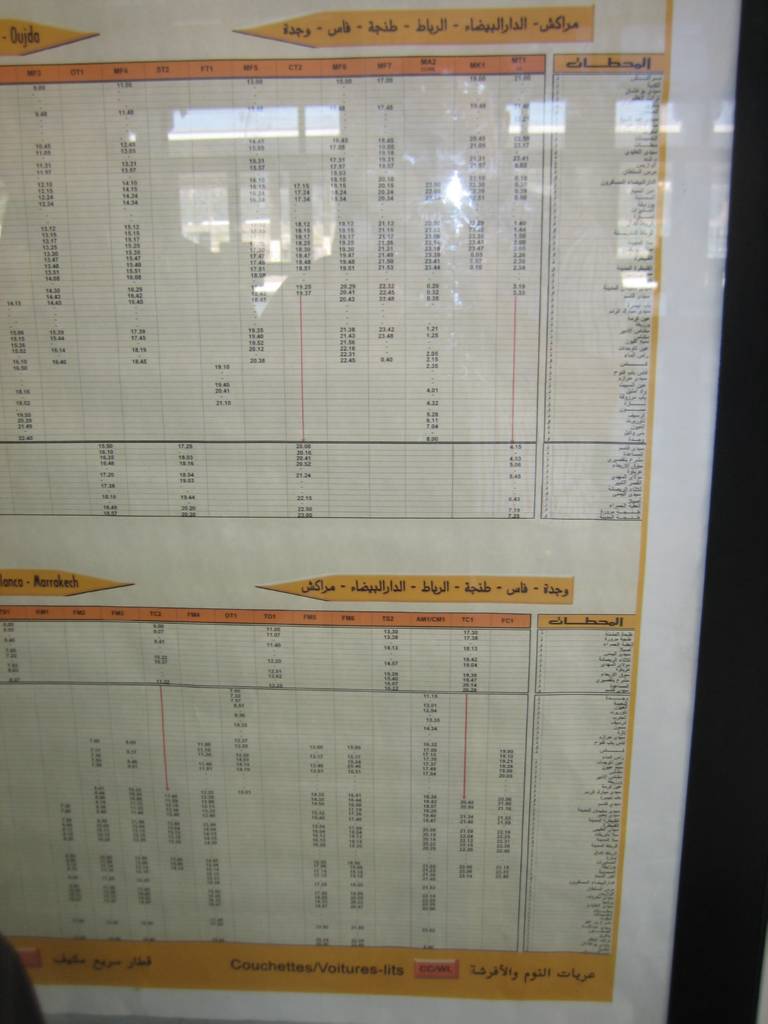
Disappointment at the mausoleum
Through the heat of the day we fight our way back towards the city center and choose the path through the nearby park, which has been prepared like a small oasis. On the bench under date palms we plan the rest of the day. A famous image of Marrakech is a mausoleum in front of a large lake with the snow-capped mountains in the background. However, this thing is quite far out of the city, but according to the map, the city and the mausoleum are separated by a fairly large park called “jardin des olives” – the olive park. That at least sounds like an enticing shady stroll. We buy some water, which we always have with us and which is very valuable, especially today. Susanne is already having a headache, a clear sign of dehydration, but Olli and I are also exhausted in the intense sun. It’s just February.
We bravely keep walking, pass the big minaret of the largest mosque and another landmark of Marrakech and finally turn in the direction of the park. We pass the casino and have to take a small detour because of a construction site.
Occasionally other tourists come towards us, who, like us, press against the walls at the edge of the street and their shadows. However, there is nothing to be seen for miles from the park in which we are already located according to the map.
After a few more corners around the old city walls, the time has come: finally we see the biggest disappointment of the day. The “jardin des olives” is not a park, but really a grove of olive trees reaching to the horizon, which, to make matters worse, are so far apart and at the same time so small that there can be no question of any kind of shade.
A large new street stretches out in a straight line in front of us, at the end of which one can glimpse the actual park with the mausoleum. The only difference is that this road is a good two kilometers long and devoid of any possibility of shelter from the sun.
We consult and take the long way in the hope of finding a taxi for the way back. It is now around 3:00 p.m. Susanne helps herself with the rice brochure from the Hotel “Majestique” in Meknés to give herself some shade.

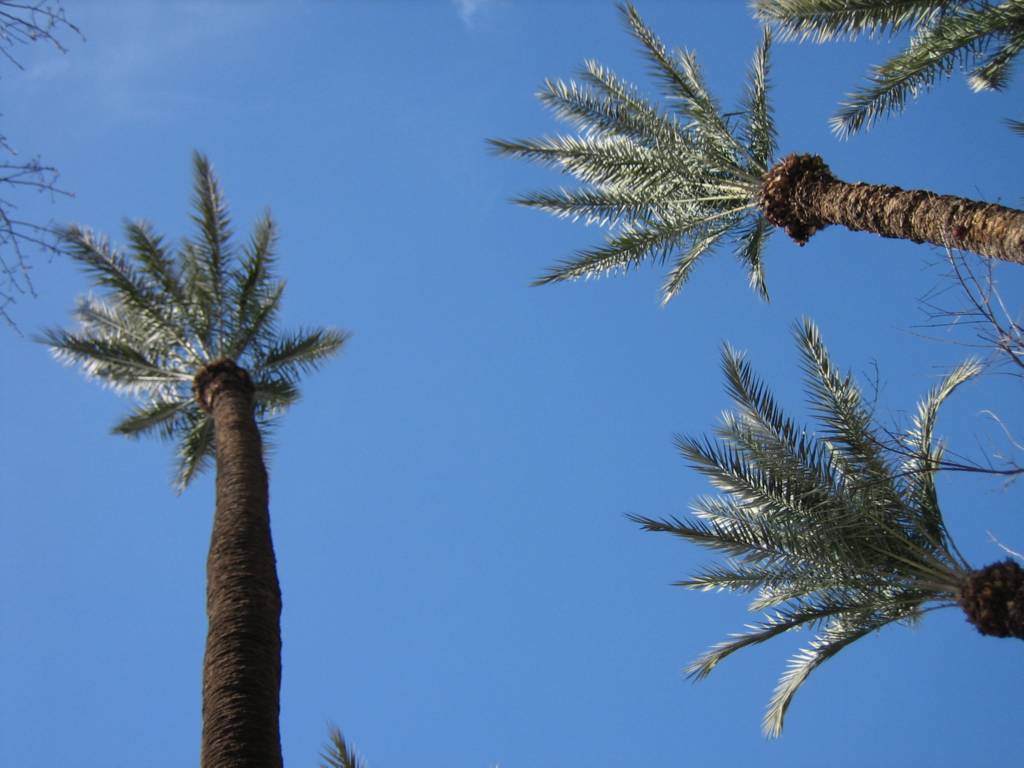



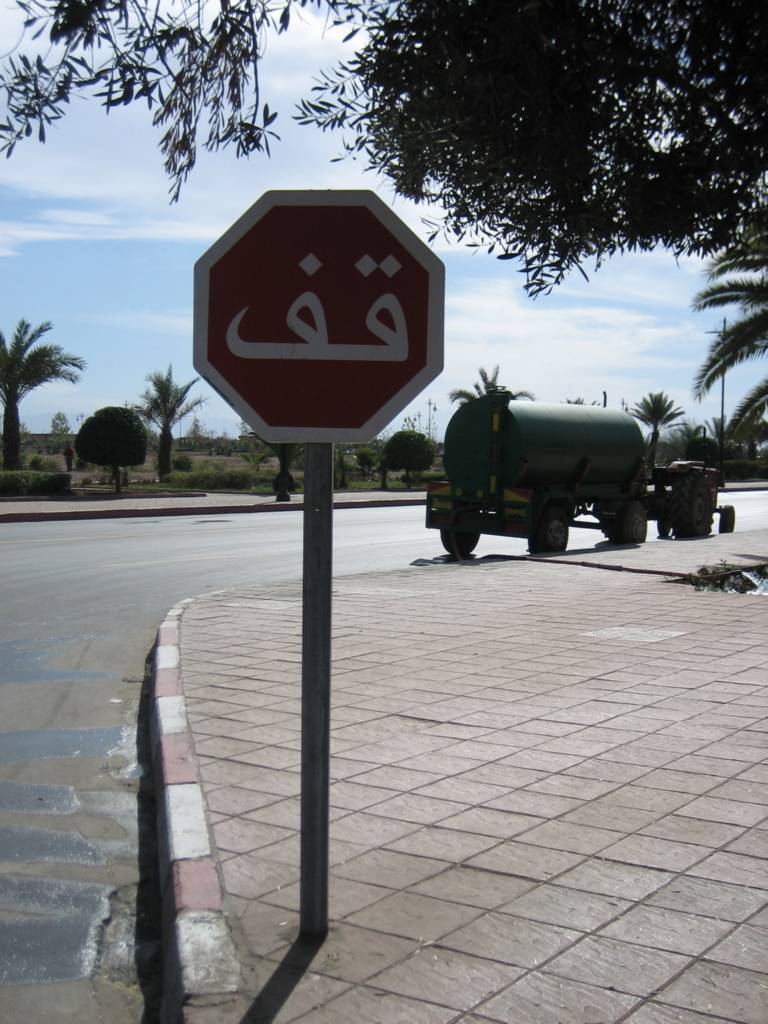
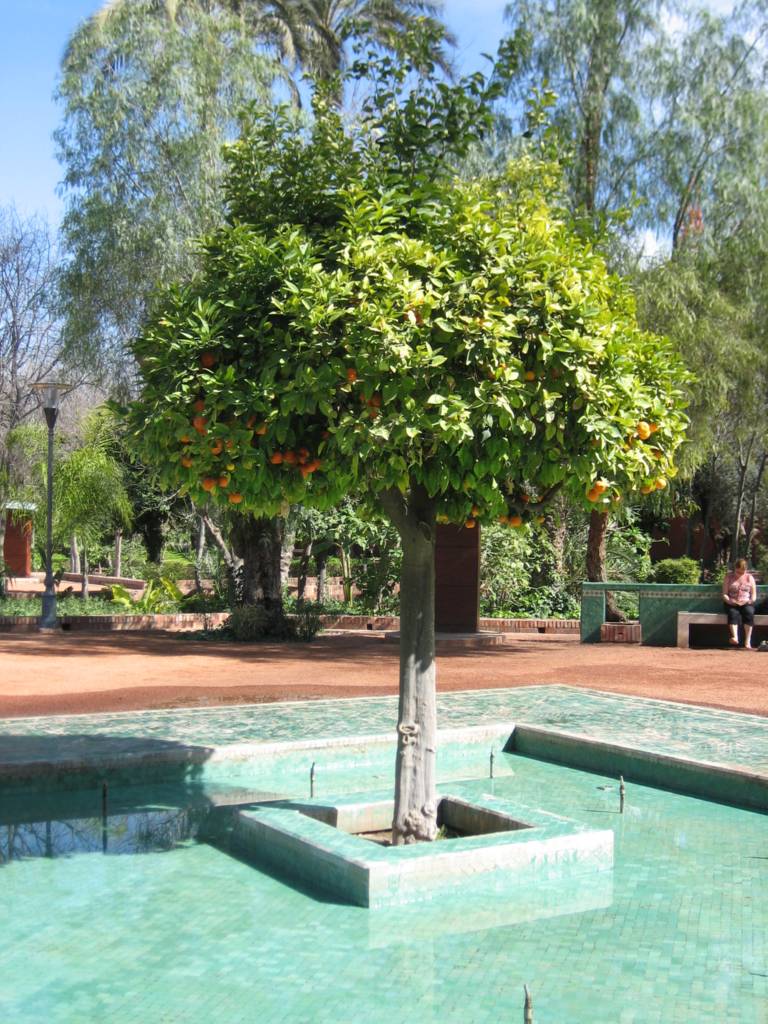
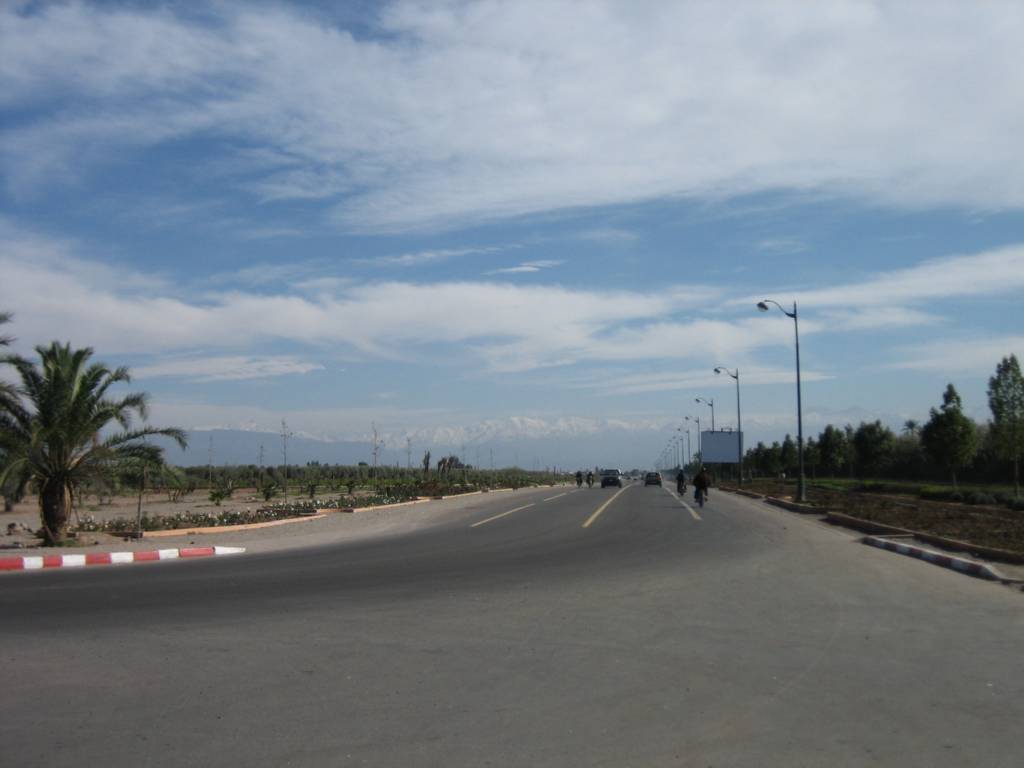
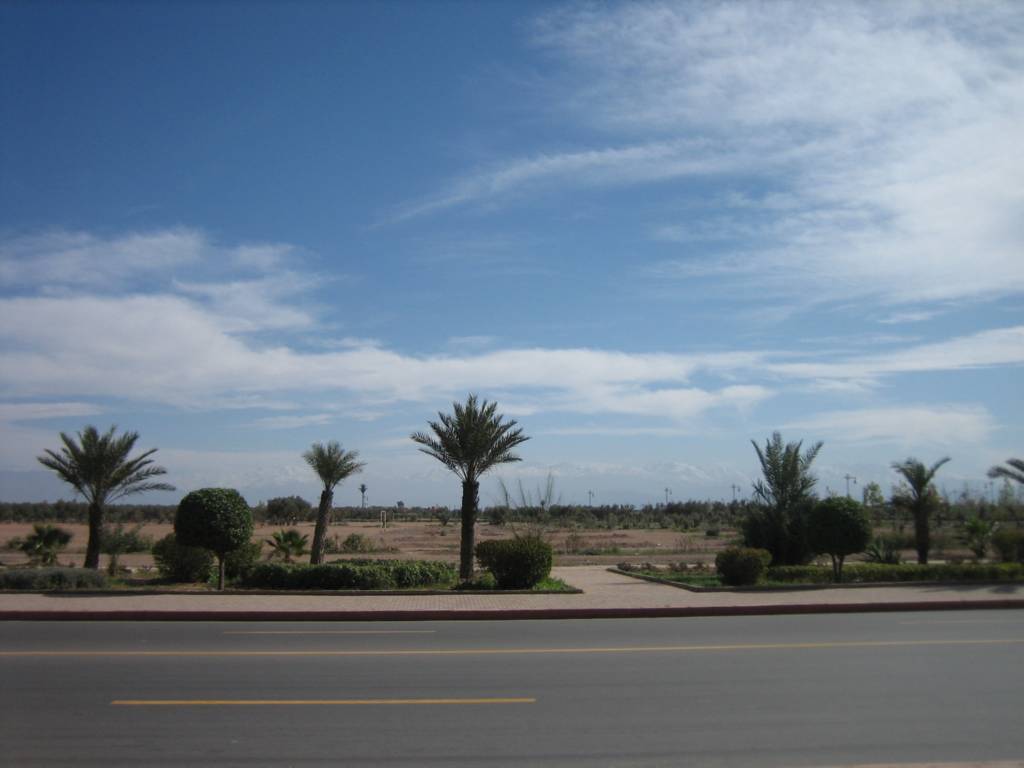
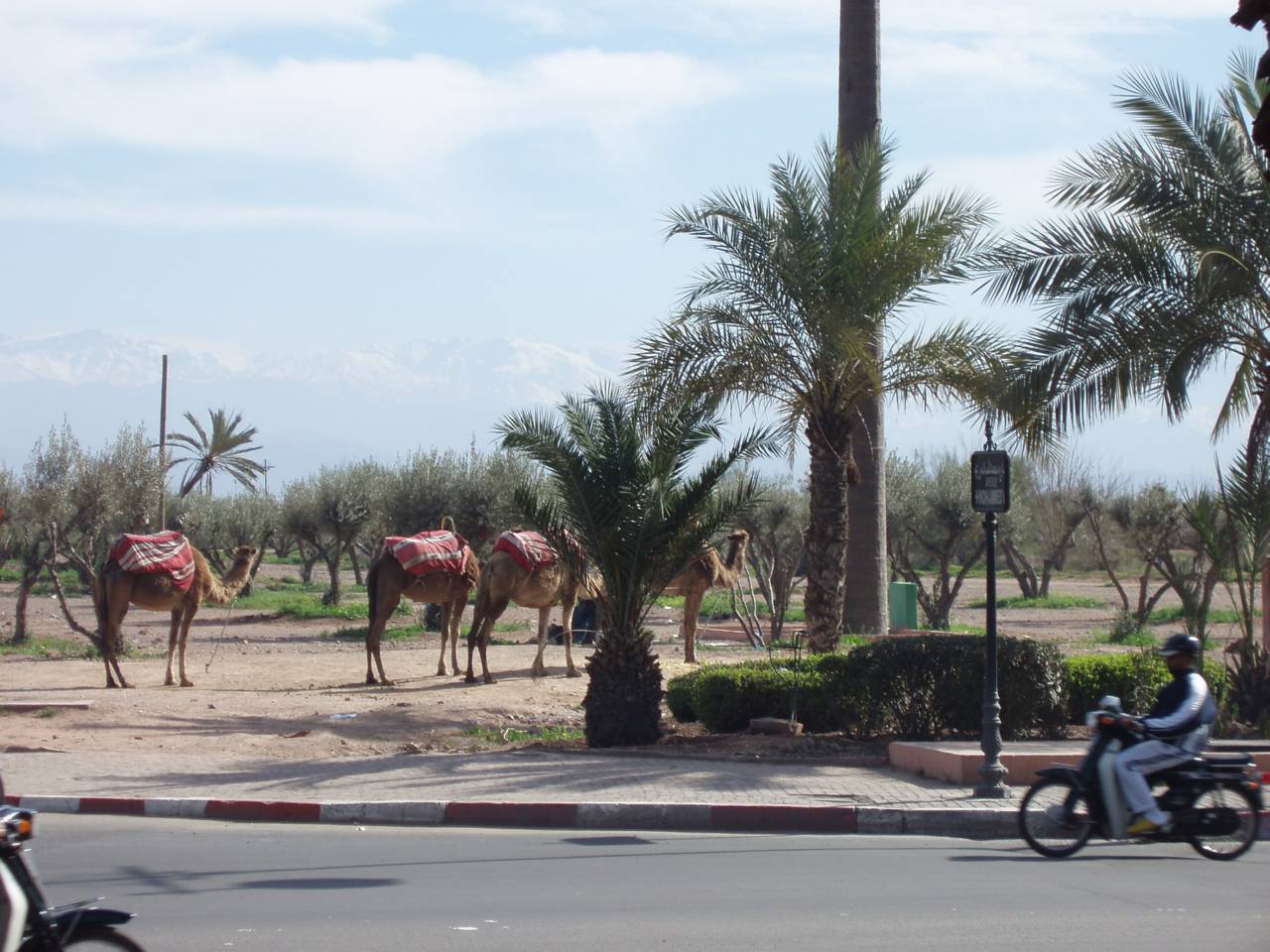
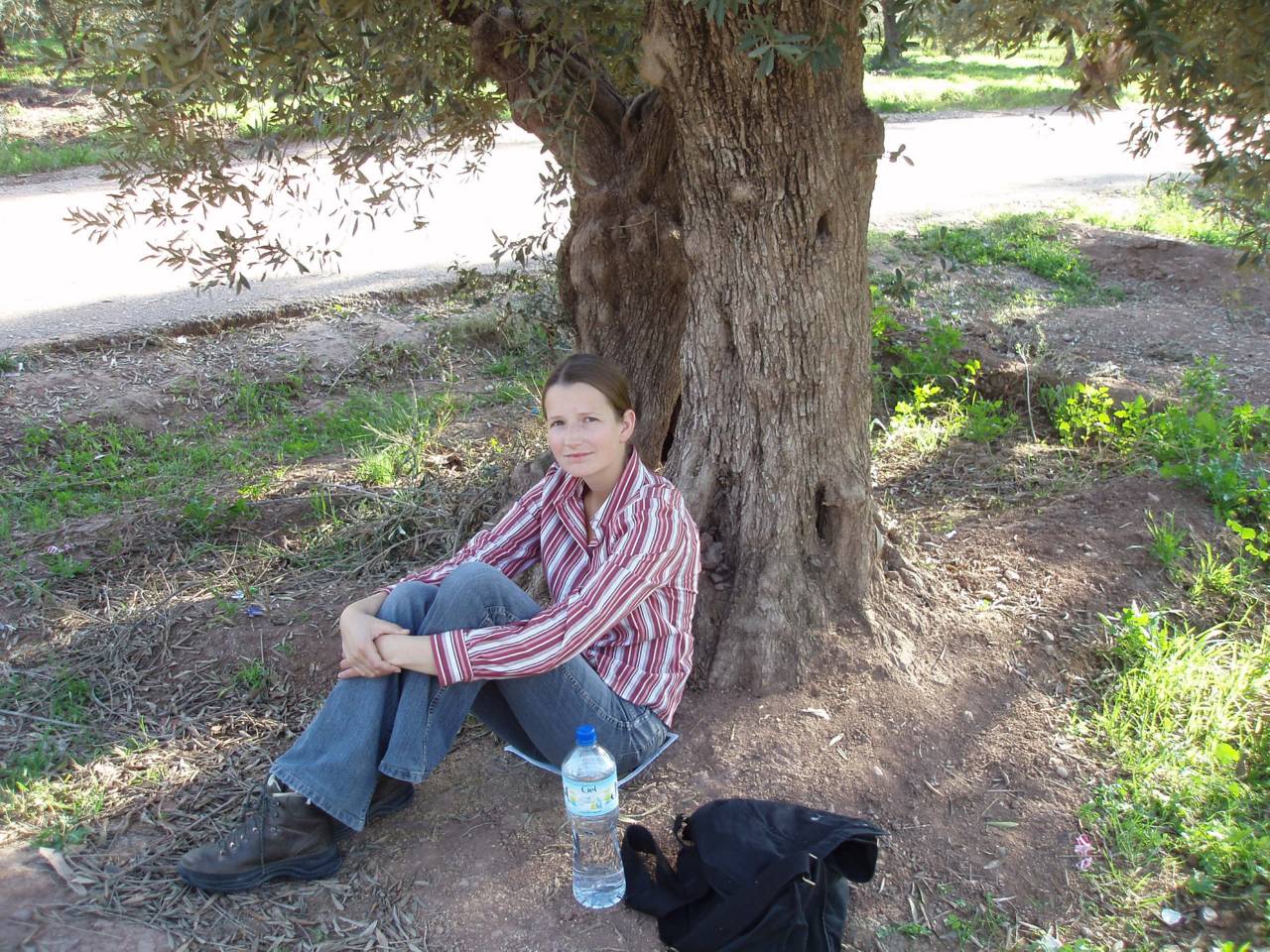
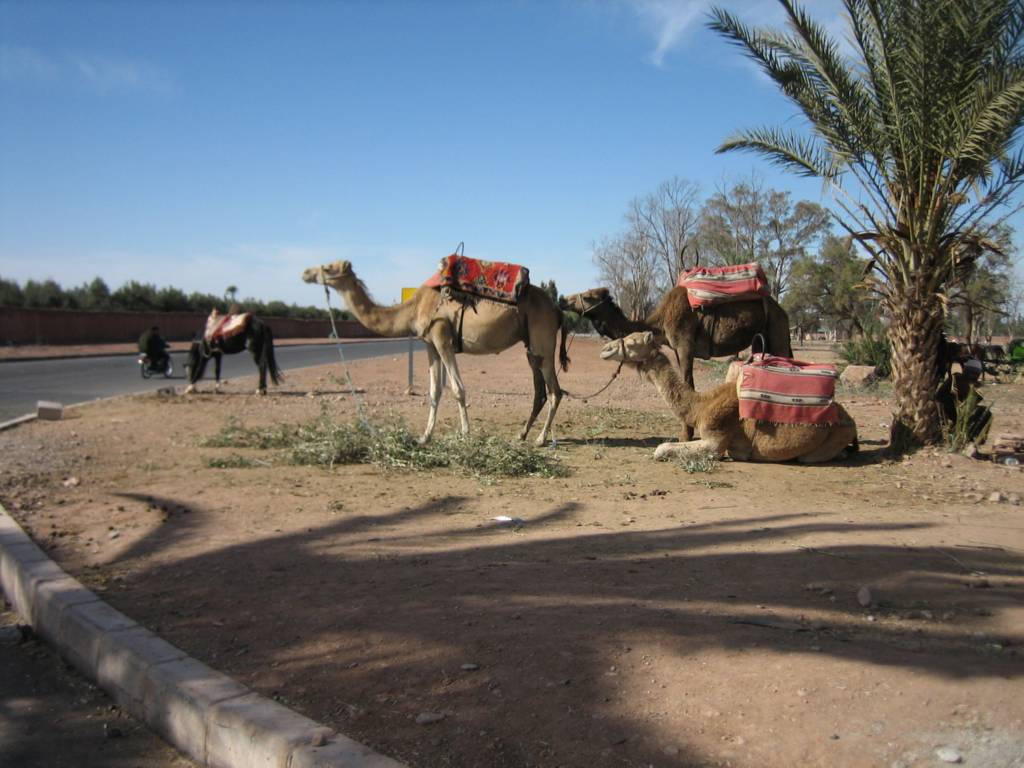
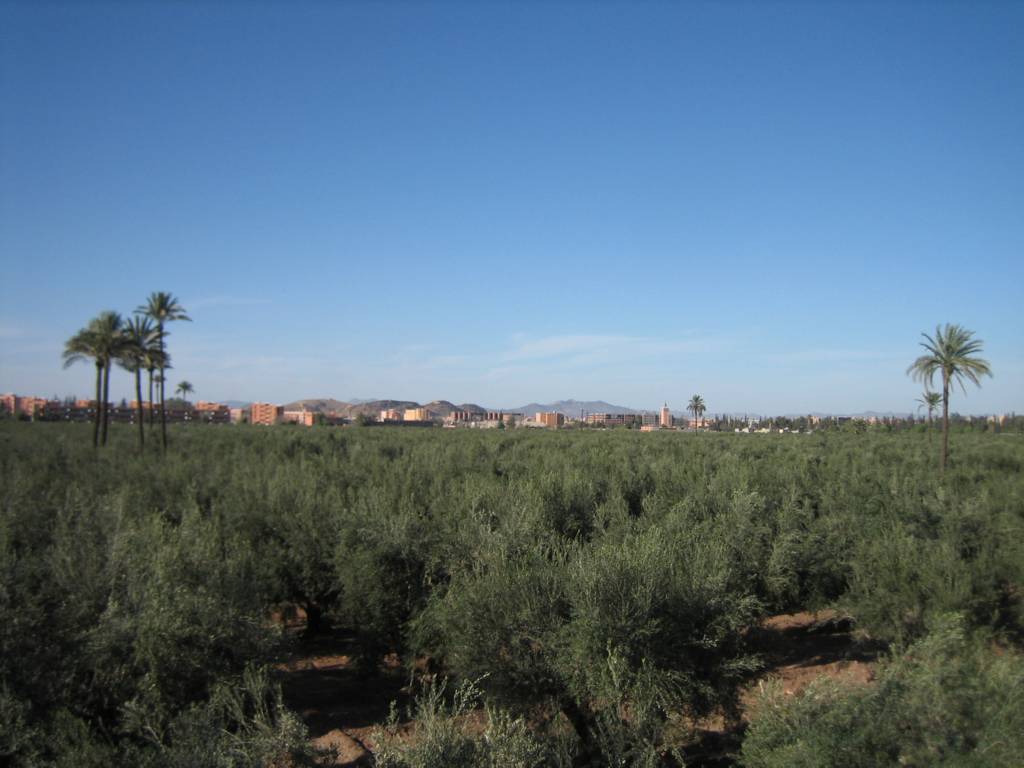
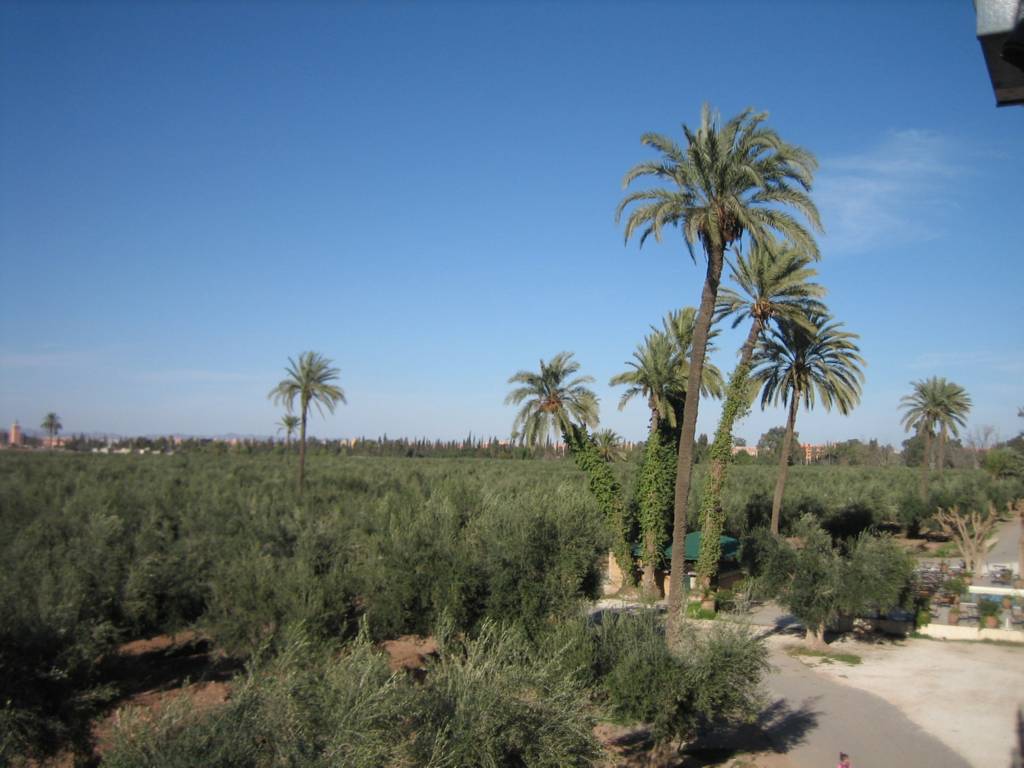
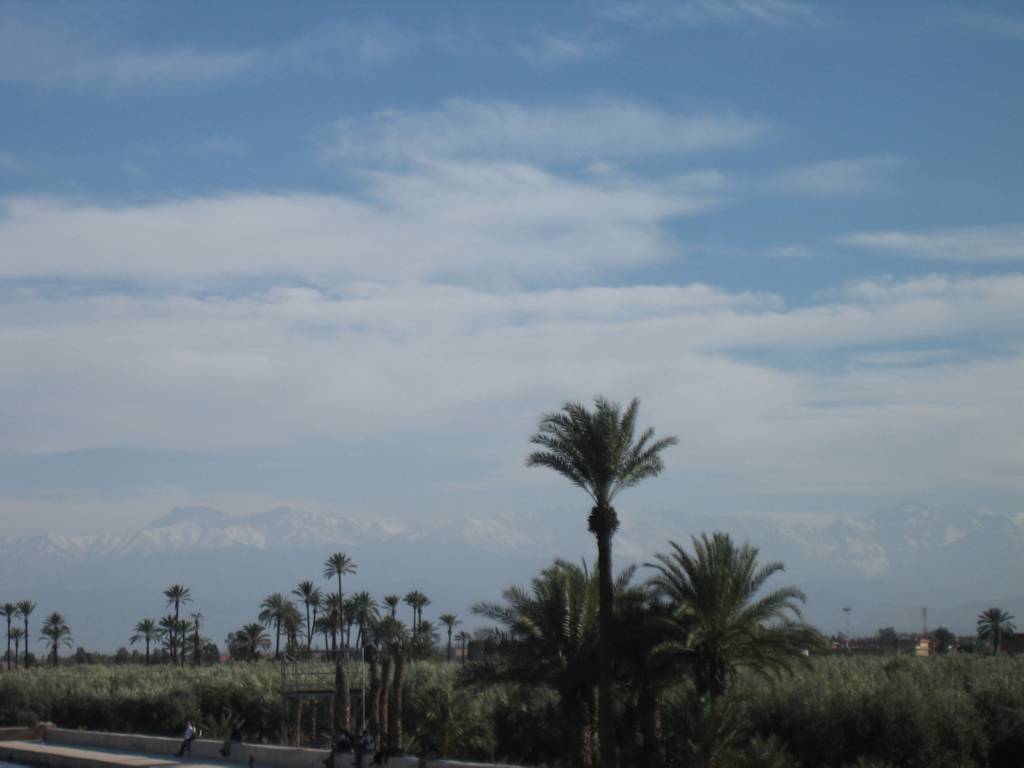
Ollis and my path leads from palm shade to palm shade. I remember a game when I was a kid where you had to jump from stone to stone over fictional lava to avoid getting burned.
In between, we observe small groups of camels on the side of the road, which offer tourists even more Arabic atmosphere for a small or large fee. We decline offers to come along and want nothing more than shadows.
Finally we reach the entrance of the park, but the gatehouse is empty and we save ourselves the 30 dirham entrance fee. But even this “park” is a disappointment, the grove of olive trees just continues. Thankfully, these specimens are larger, so we can finally rest in some shade. Suzanne is not well. The heat is pretty bad for her system. Only Olli still has an enterprising spirit and sets out to explore more of the park.
A few dogs are playing around us, there is a small kiosk that plays Arabic music and where boys pass the time. There are a few benches, but they are all occupied by tourists or Moroccans.
A young Moroccan leads a woman on a camel through the olive grove. You can hear airplane noise since, as we found out later, the city’s airport is just behind the park. I use the time for a nap and Su keeps me company.
When Olli returns from his tour of discovery, he can report that there wasn’t really anything spectacular to see. At least we go to the mausoleum, in front of which, as shown on the postcards, there is a large basin. I walk around to take my own postcard photos while Olli and Su wait.
We went back to the street and, as expected, were immediately picked up by a guy who wanted to organize a camel ride, a carriage ride or at least a taxi for us. But when he asks 50 dirhams for a ride to the interior, I immediately go on. The maximum I’m willing to pay is 30, but since he’s not willing to go into town for it, I hail another taxi, which then takes us back to Djemma el-Fna for the price I offered.
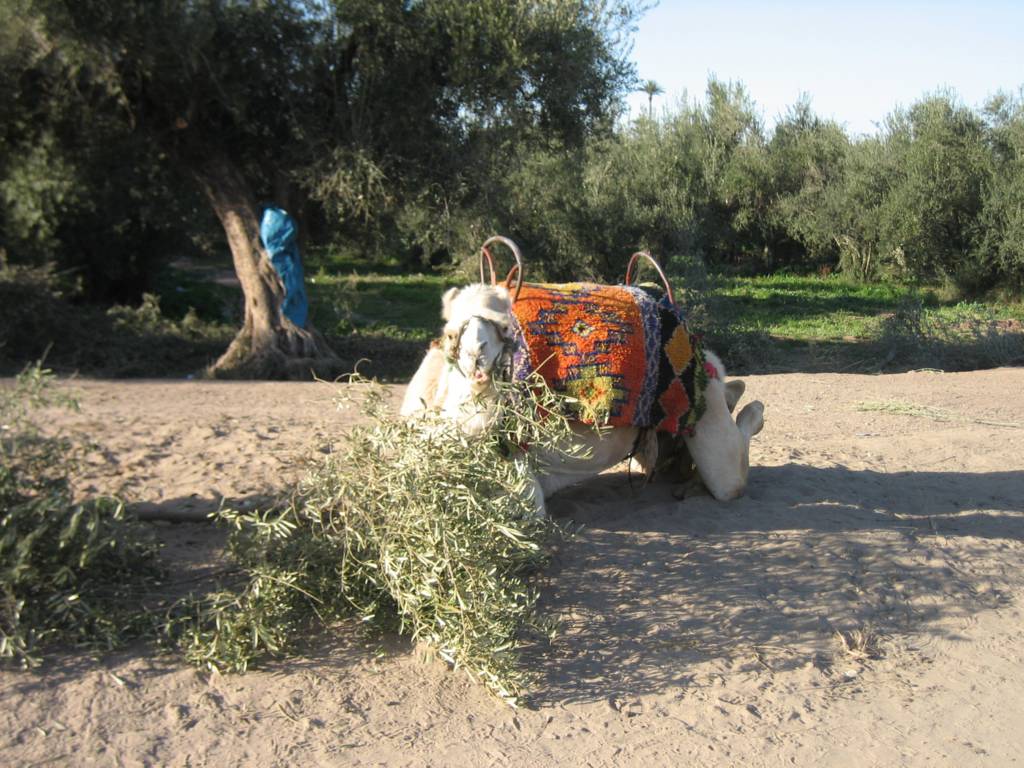
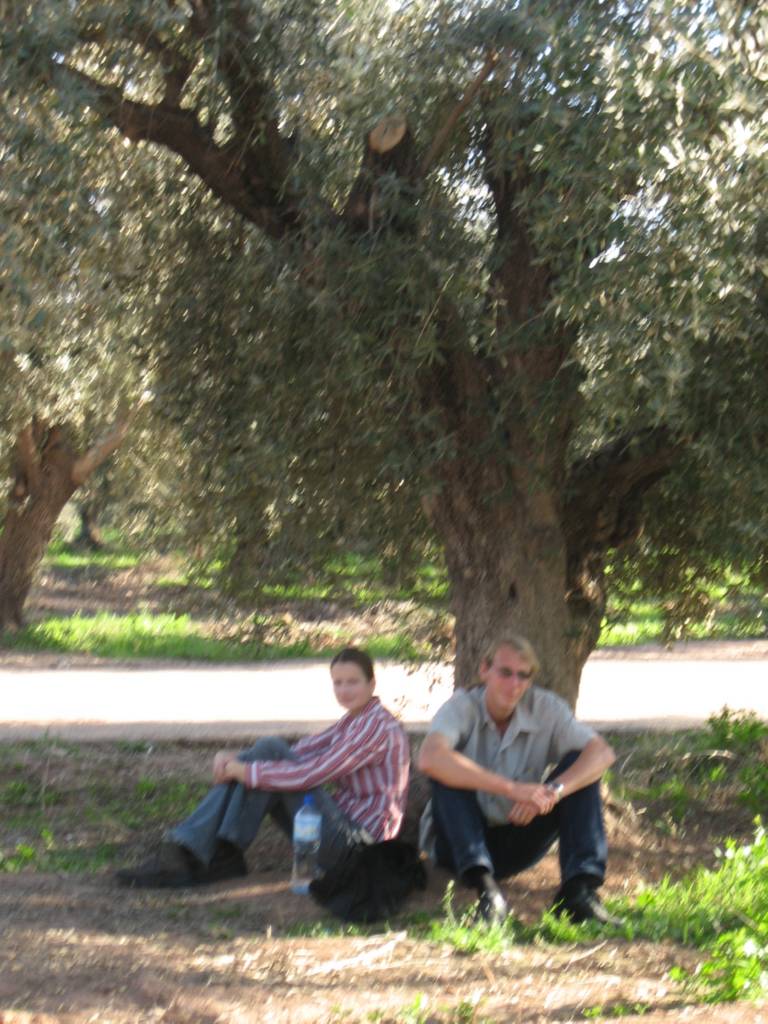
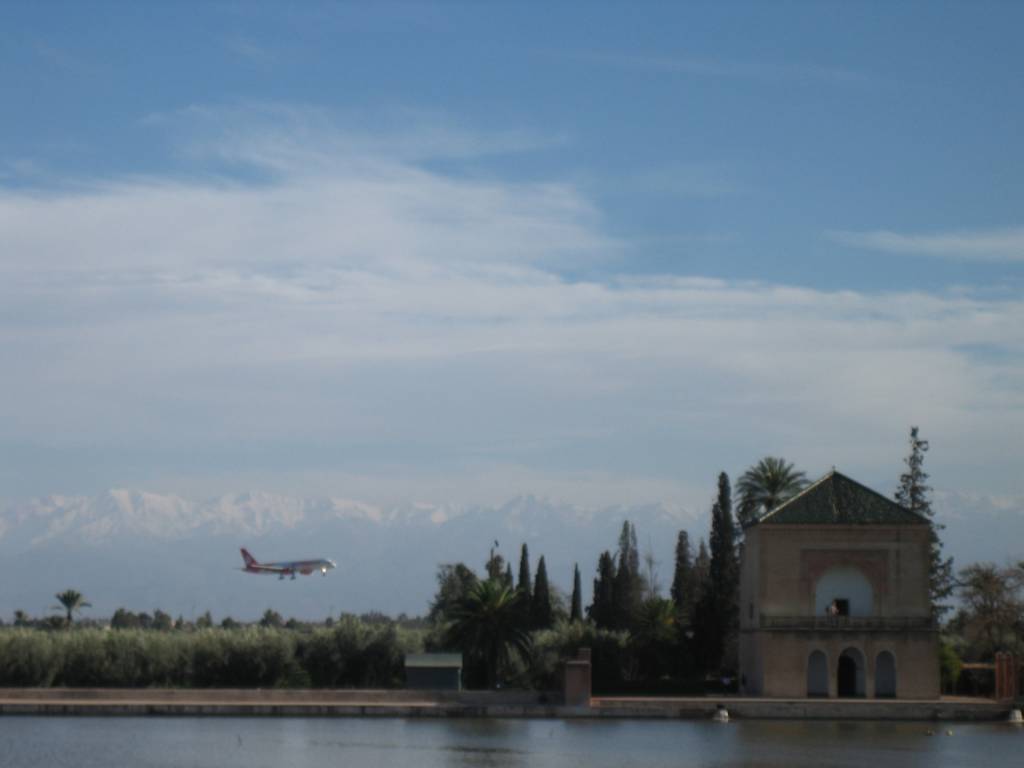
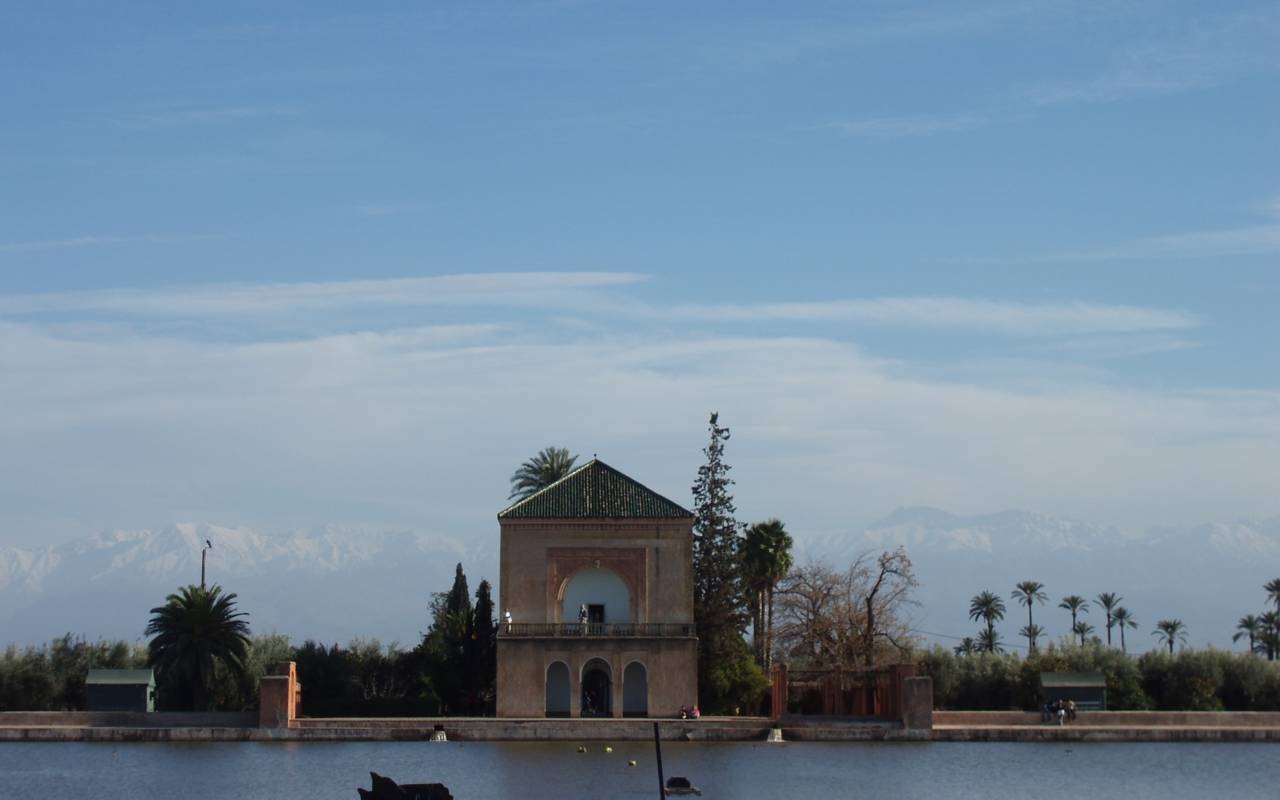
It’s packed again on the juggler place, but after we’ve got some money and an orange juice, we first have a siesta until the pleasant evening hours, with Olli and I making a short stop at the food stalls for a bite to eat. I almost feel like I’m in a beer garden, with all the unusual tables and benches. On the occasion, Olli teaches the word “beer garden”. And although we actually only want to order a plate of fries and the food stall truck is right next to us, we wait a full half hour.
In the evening we meet the Americans, Chad and his wife, and decide to go to the beer garden again because it exudes more flair than the normal tourist bars around it.
We sit together with tajine, couscous and bruchettes and plan our future plans. The Americans also want to go to Ouarzazate, but would like to stay in Marrakech for one more day.
It depends on Olli, who can only stay with us for a few more days, whether he would prefer to see Ouarzazate with Susanne and I for one more day, so we leave tomorrow morning by bus across the High Atlas to the east, or whether Olli would prefer to do so too want to spend the day in Marrakech.
The paths split
Olli chooses Marrakech. He likes the city and the trip to Ouarzazate and back is too much for him. He regrets not being able to see the desert anymore. But he had known that from the start.
We make an appointment with the Americans in Ouarzazate for the day after next. We will meet Olli again back in Granada.
